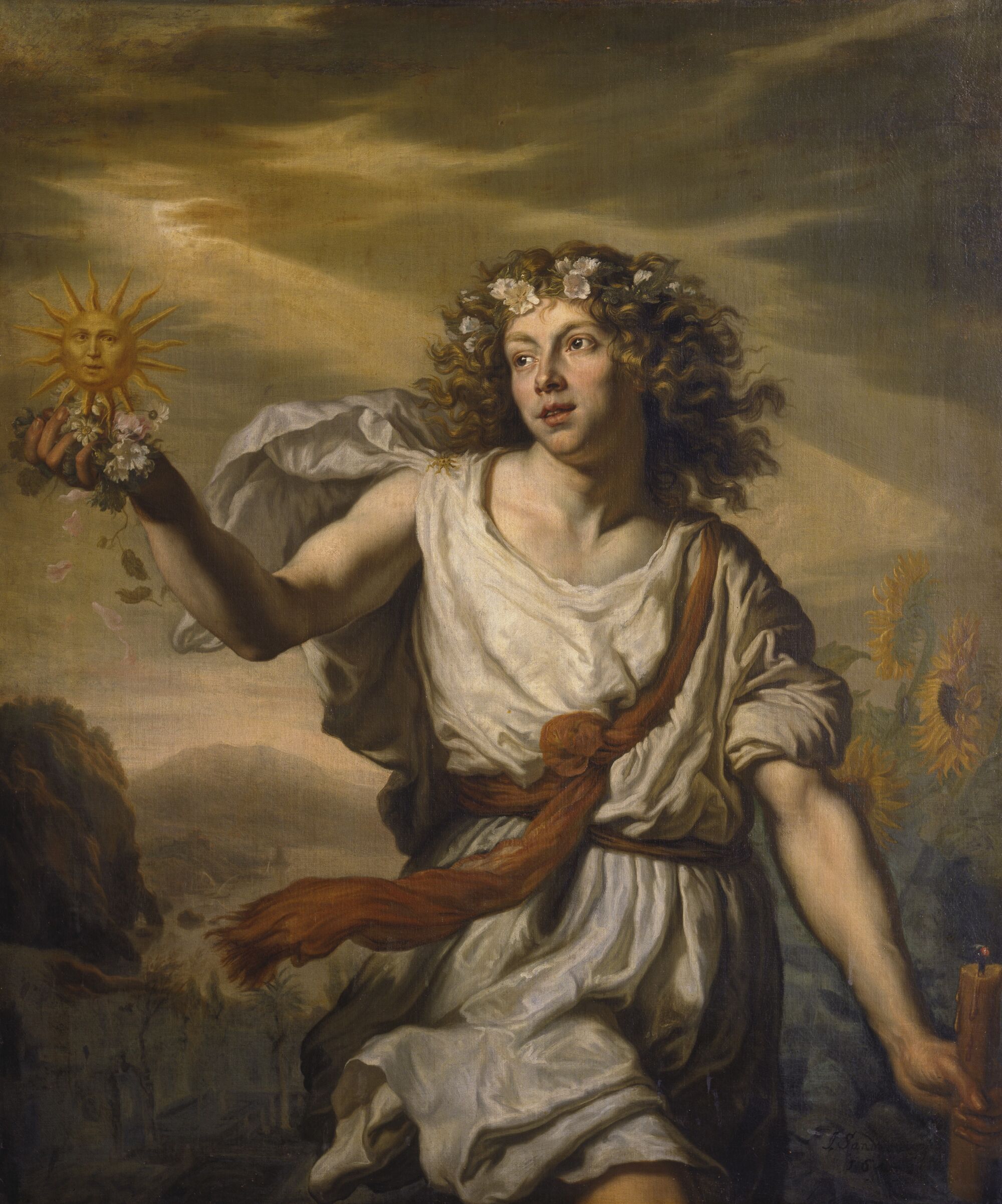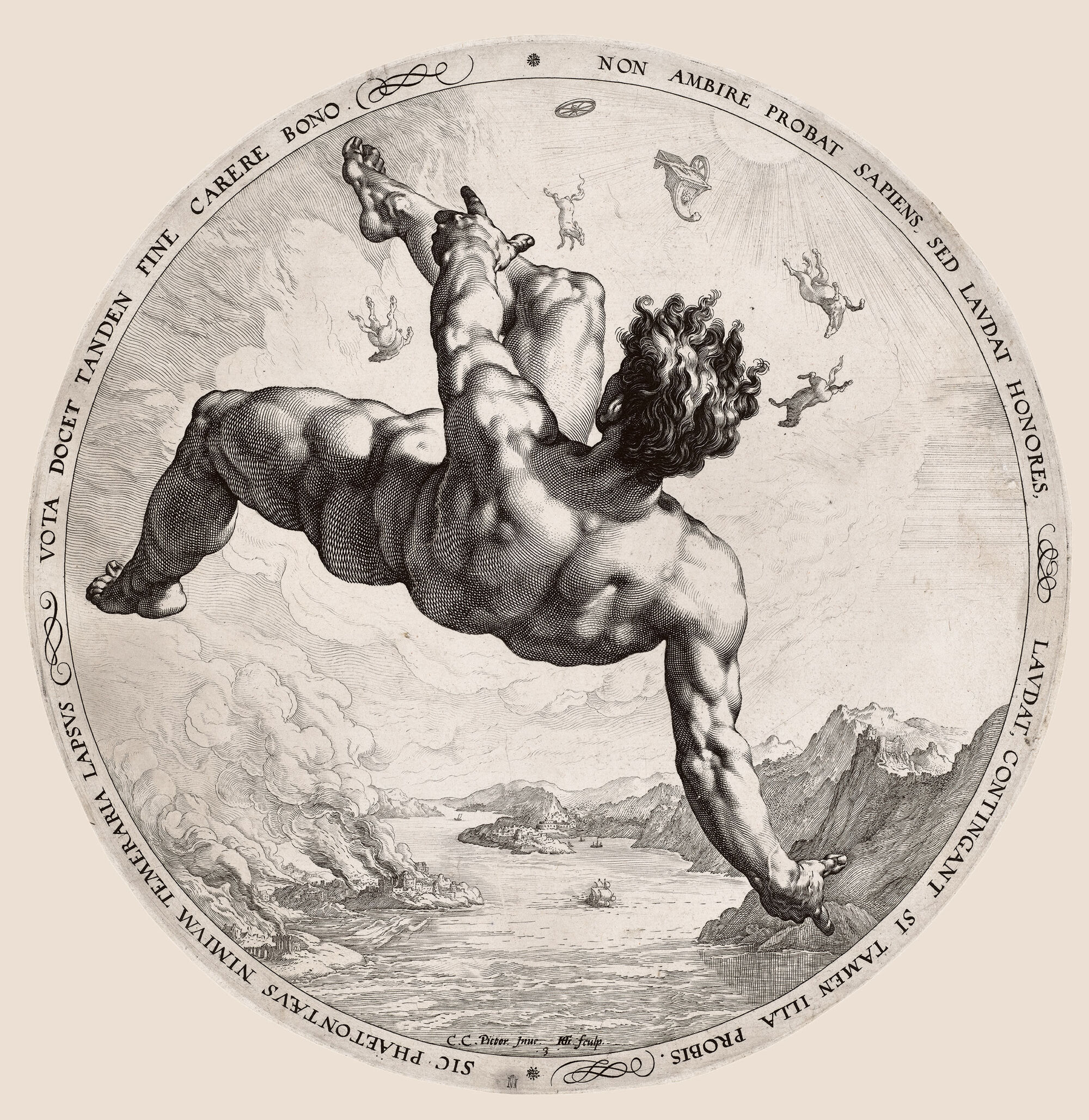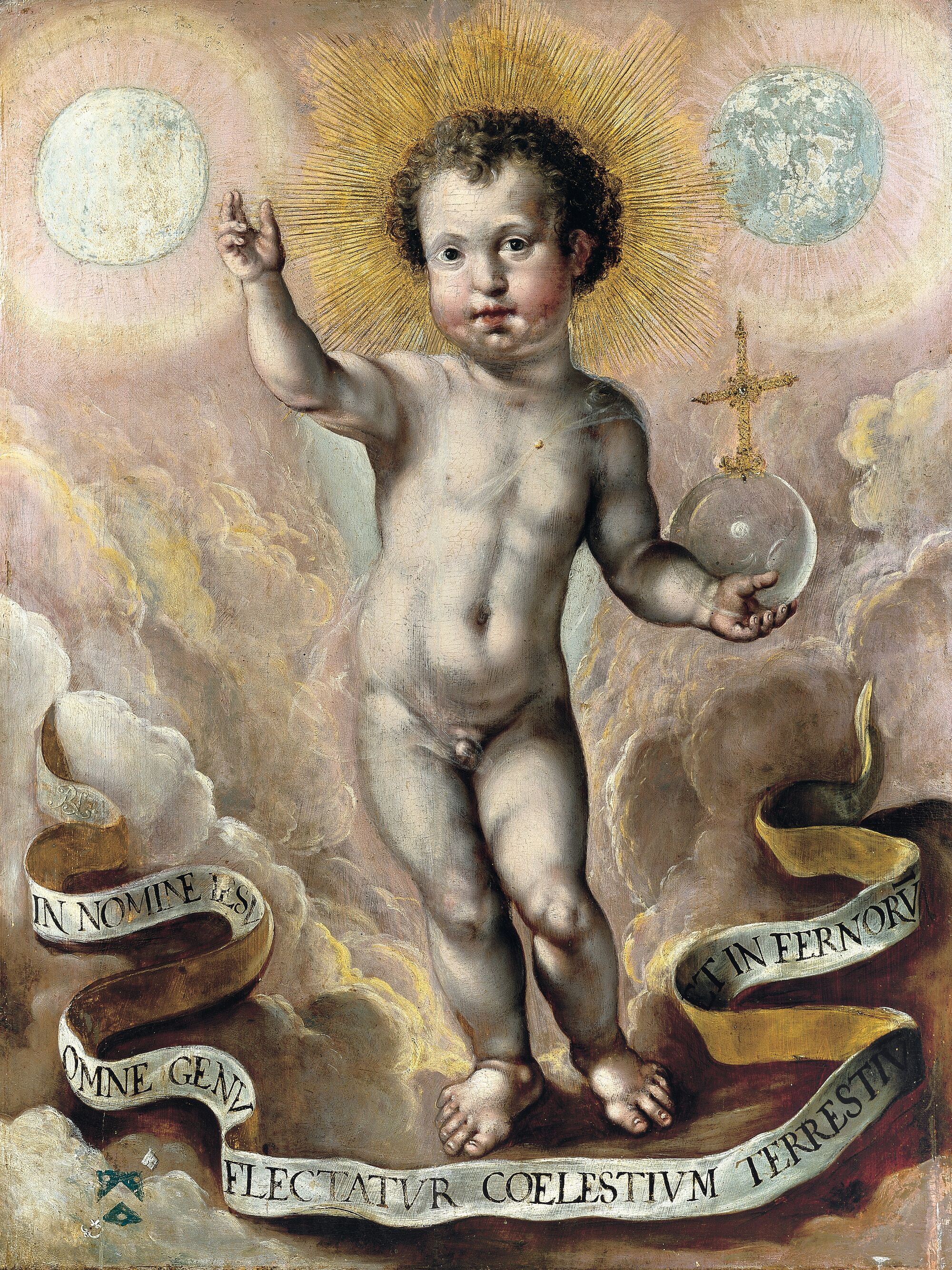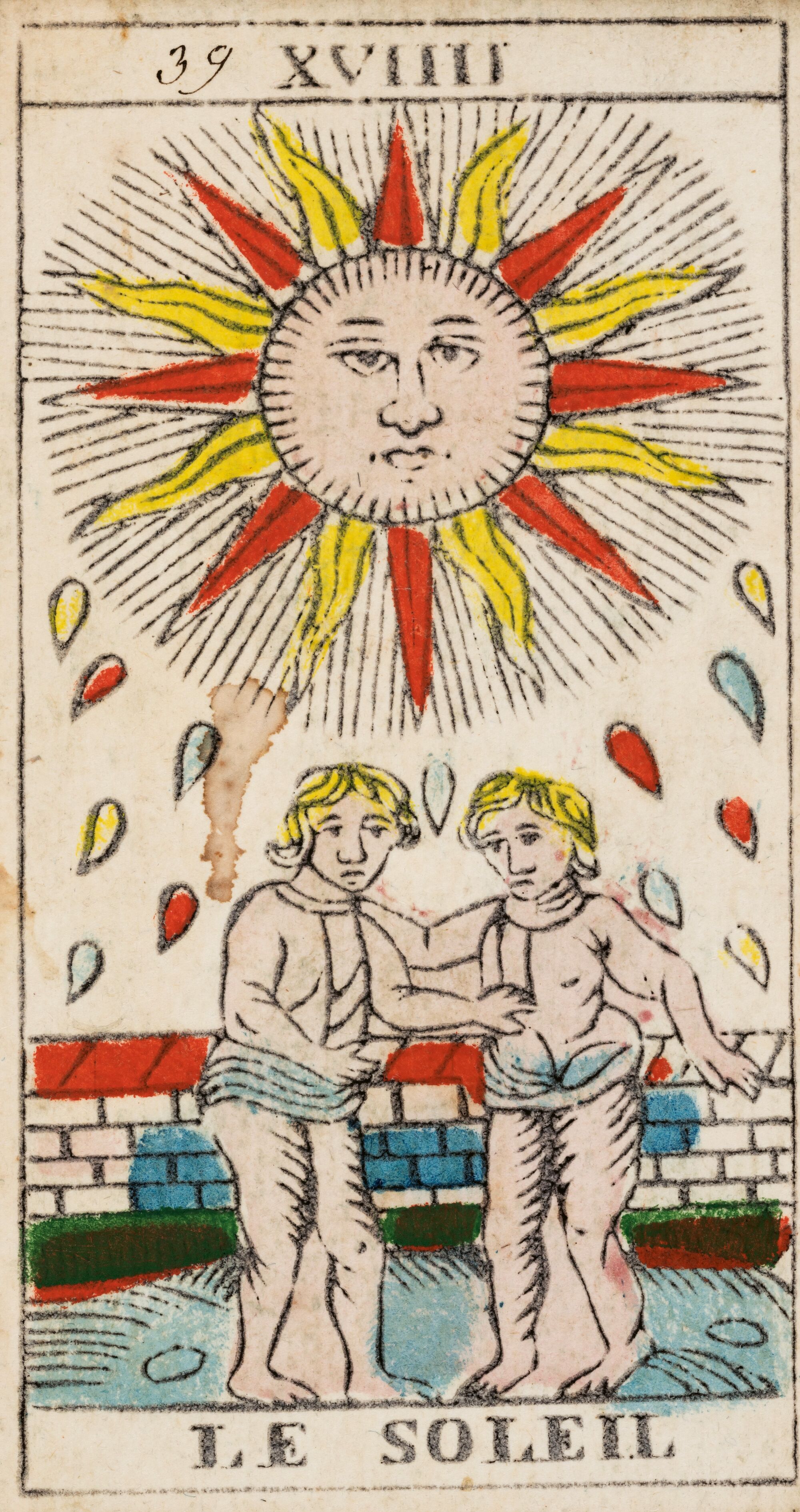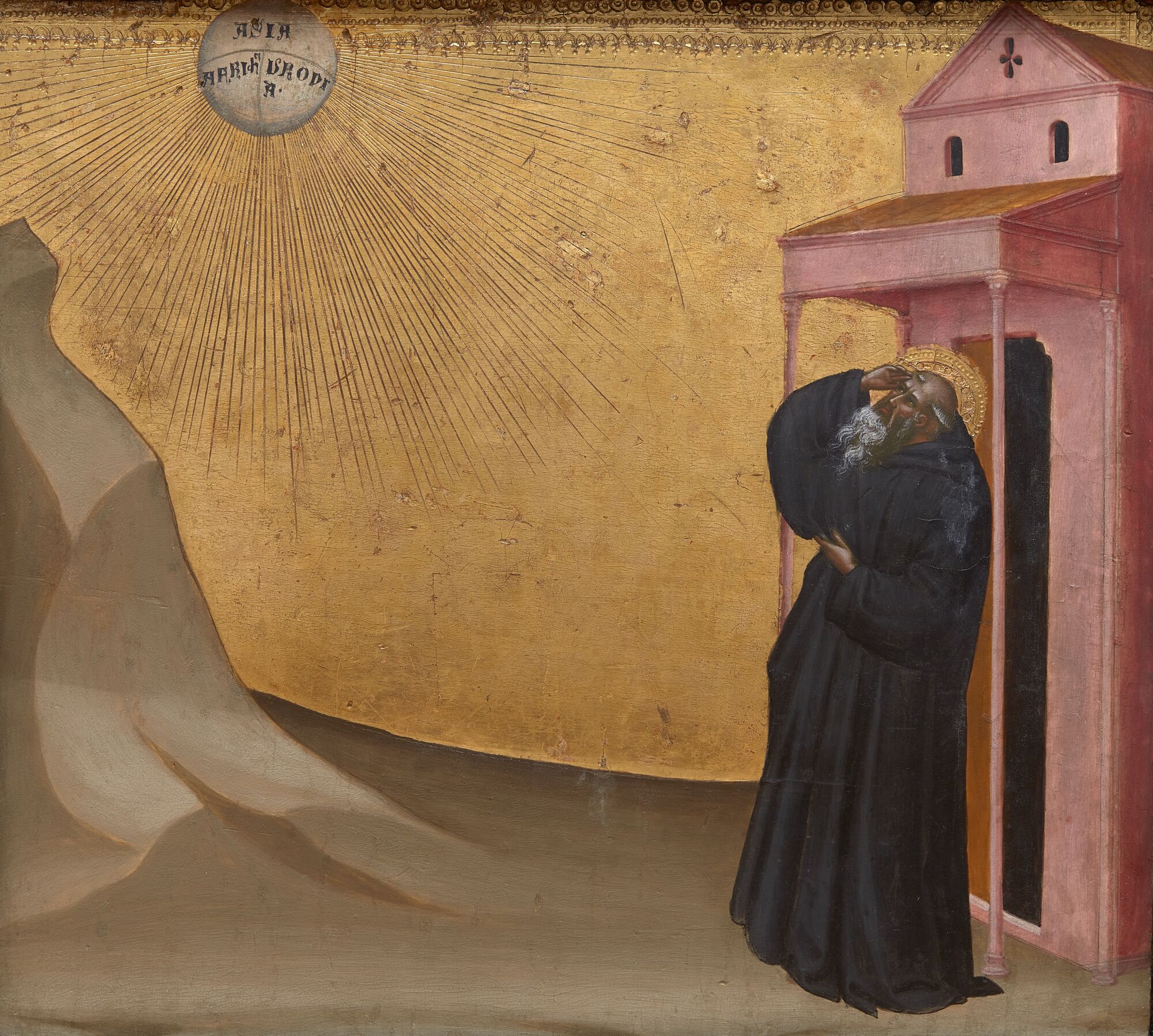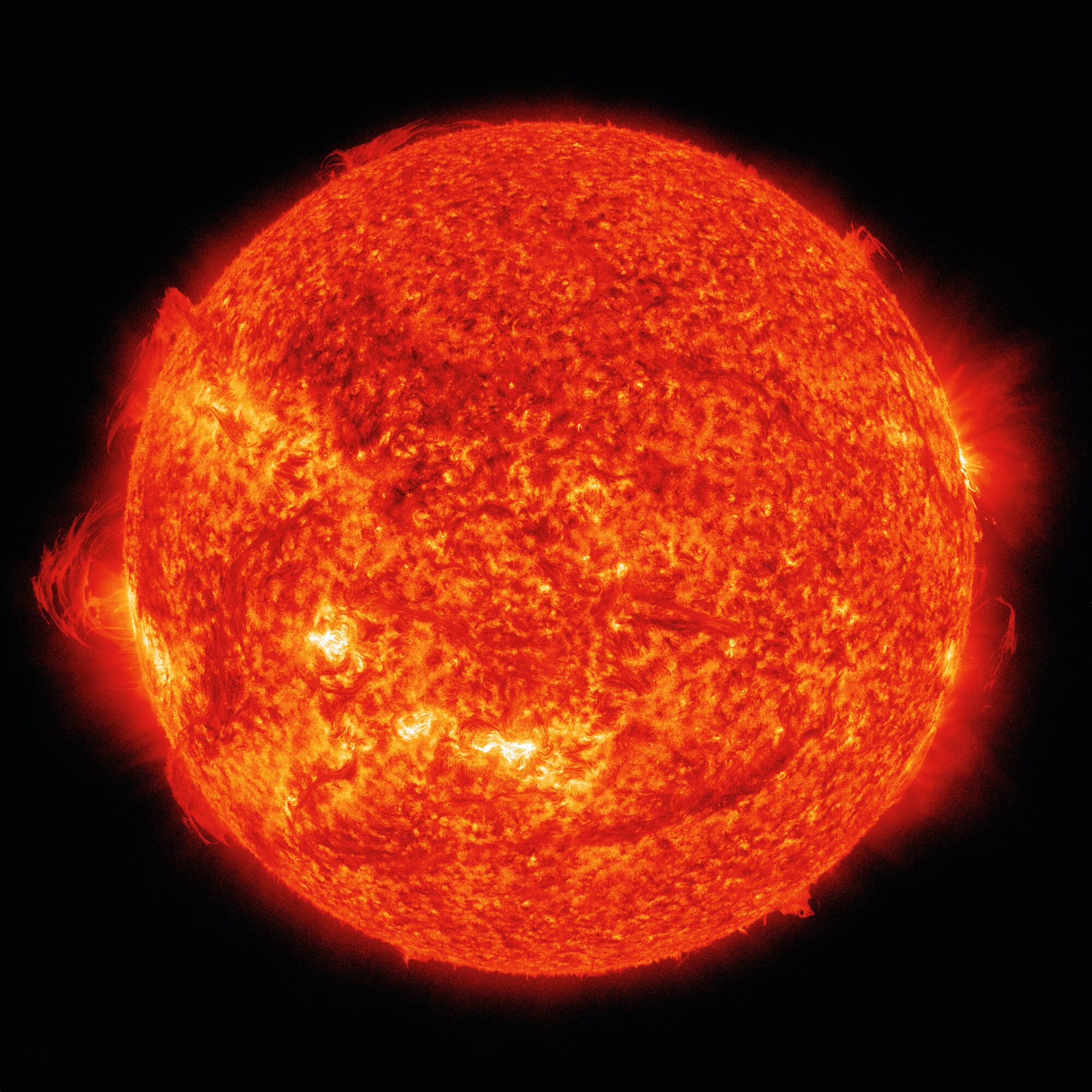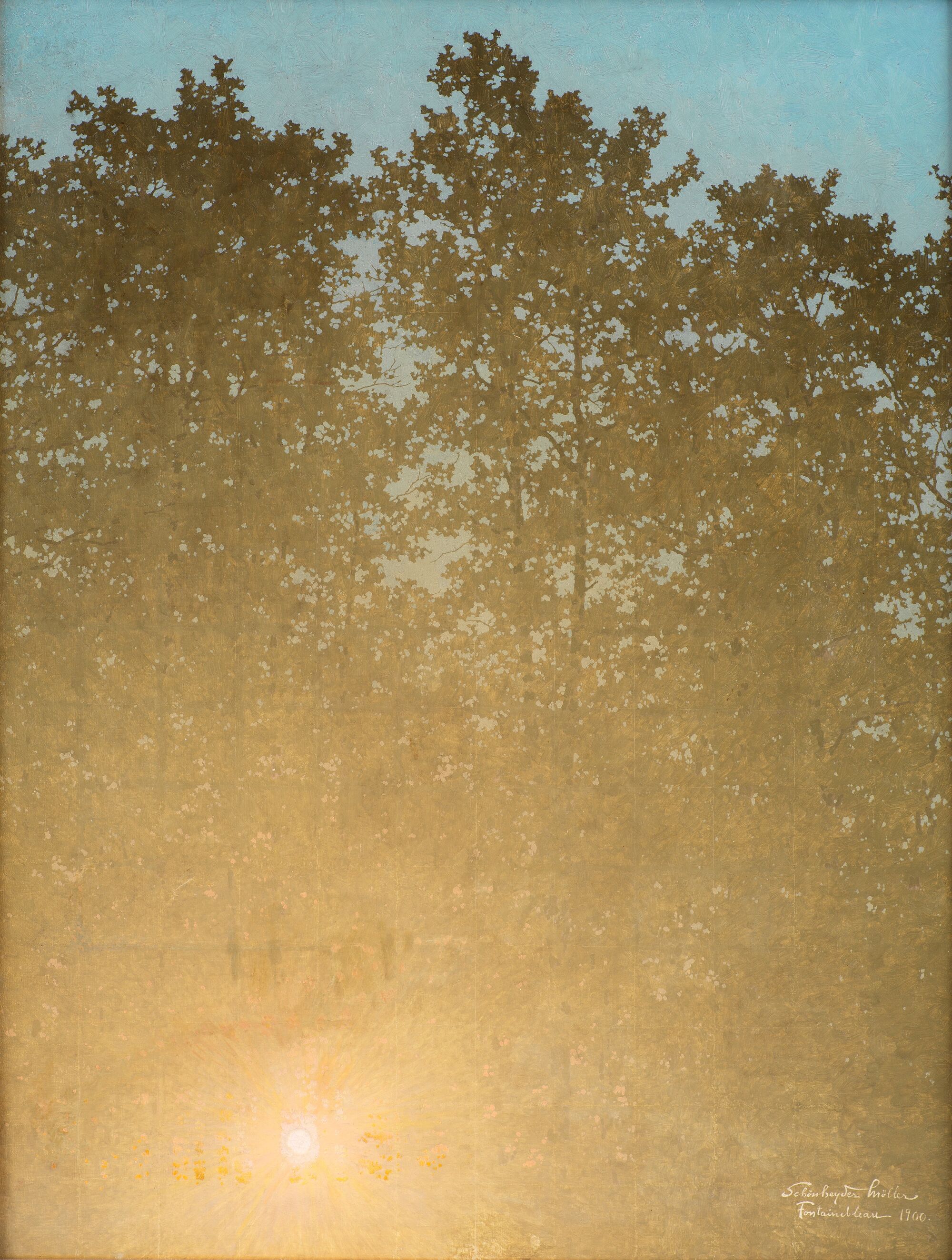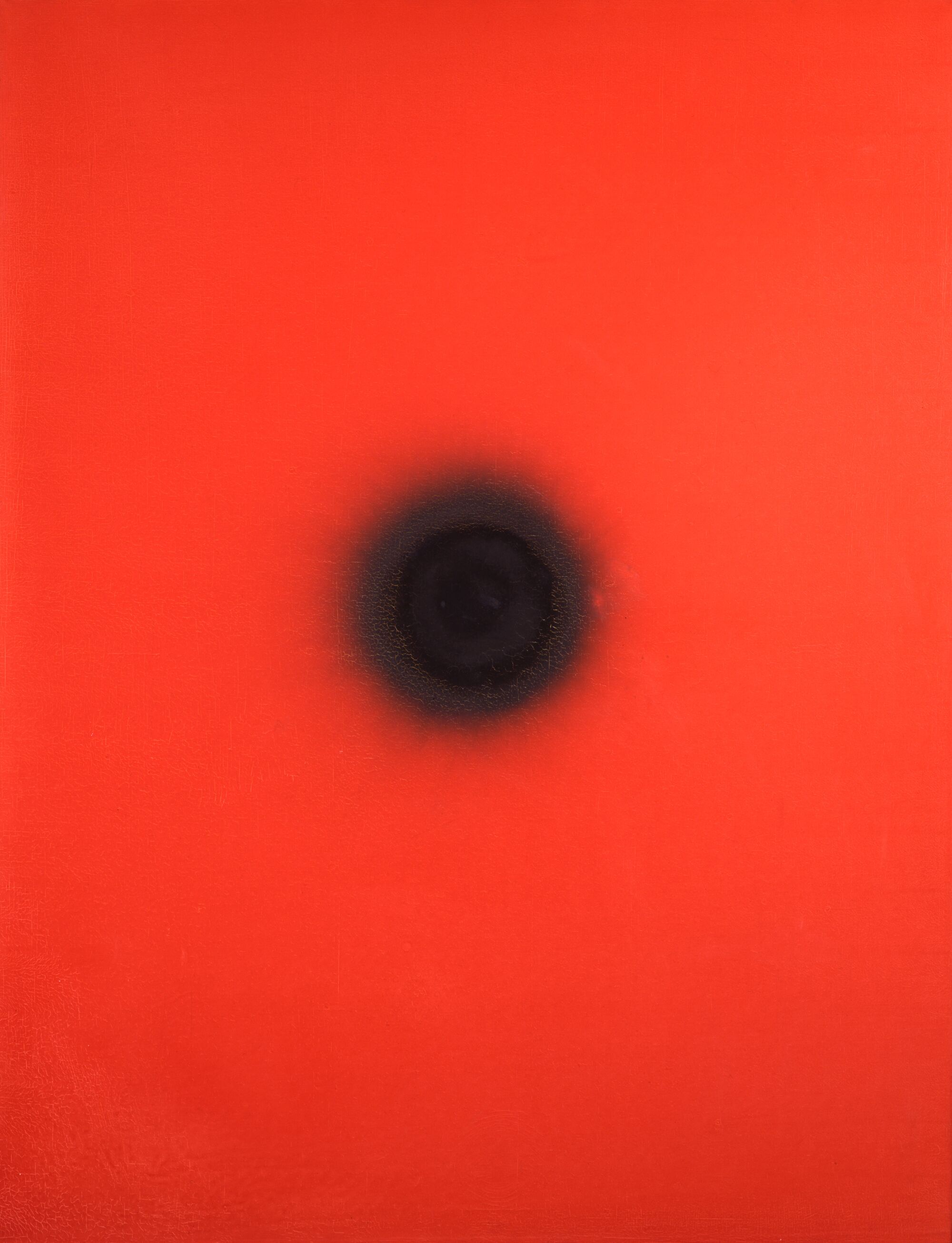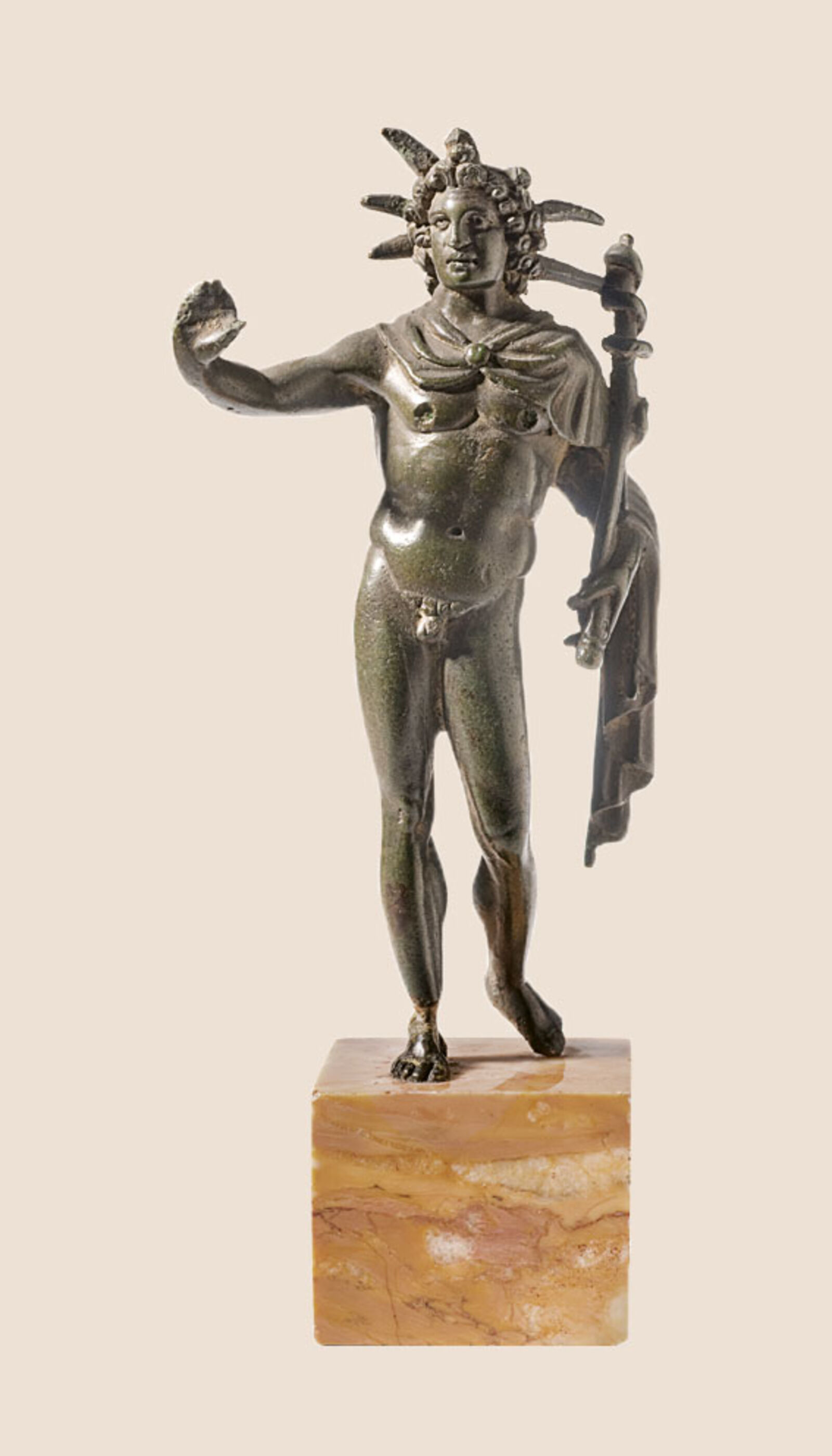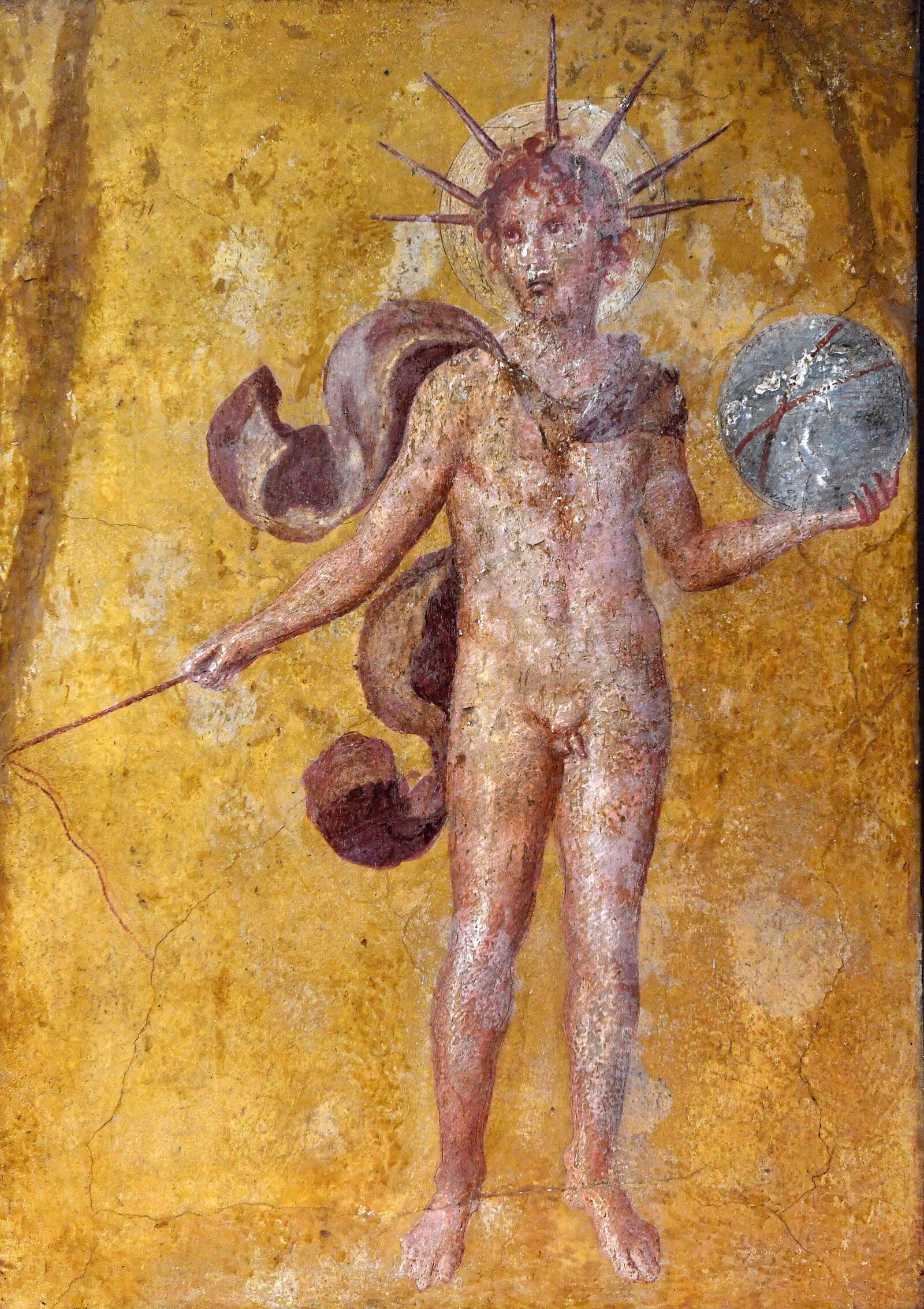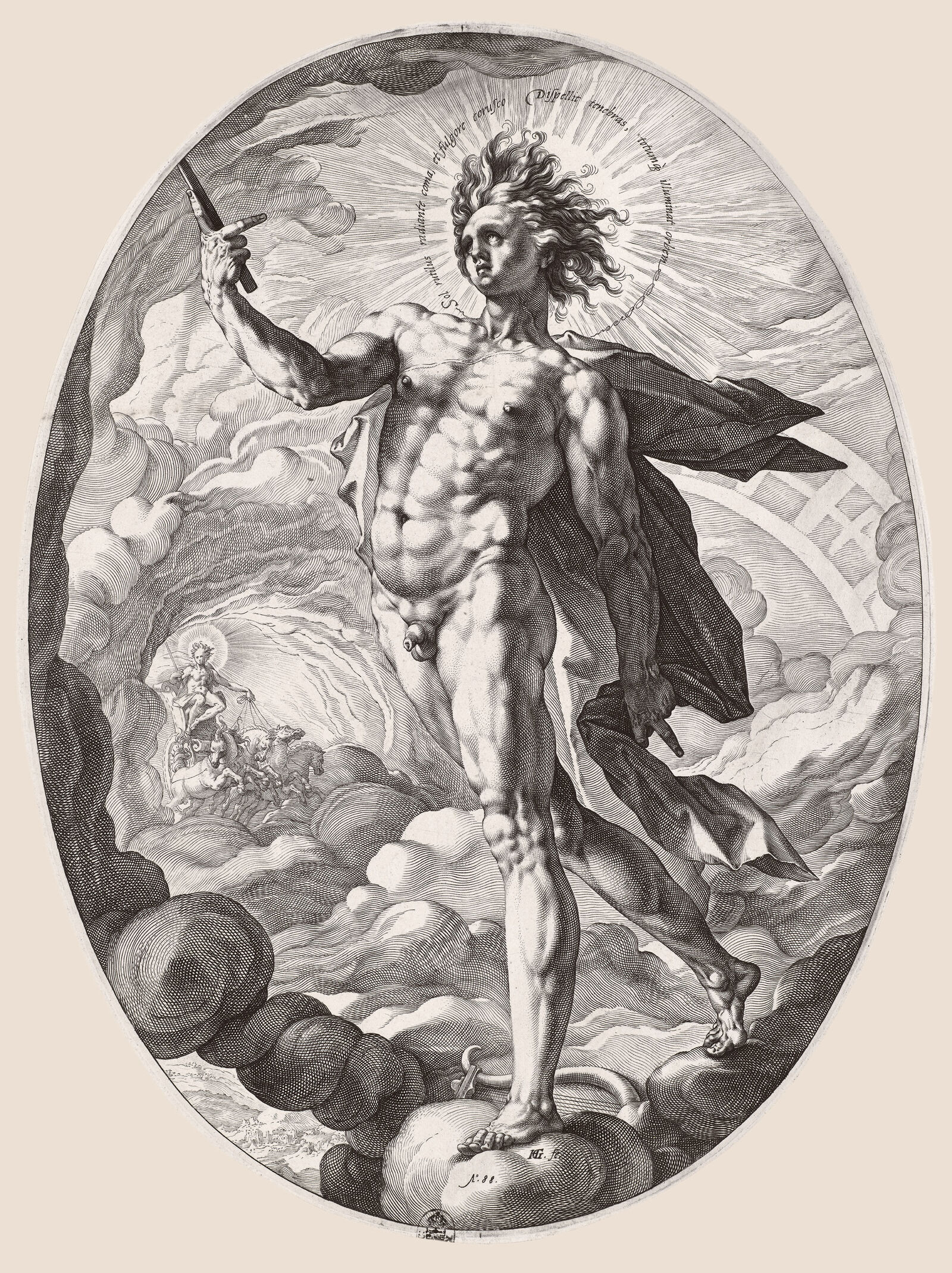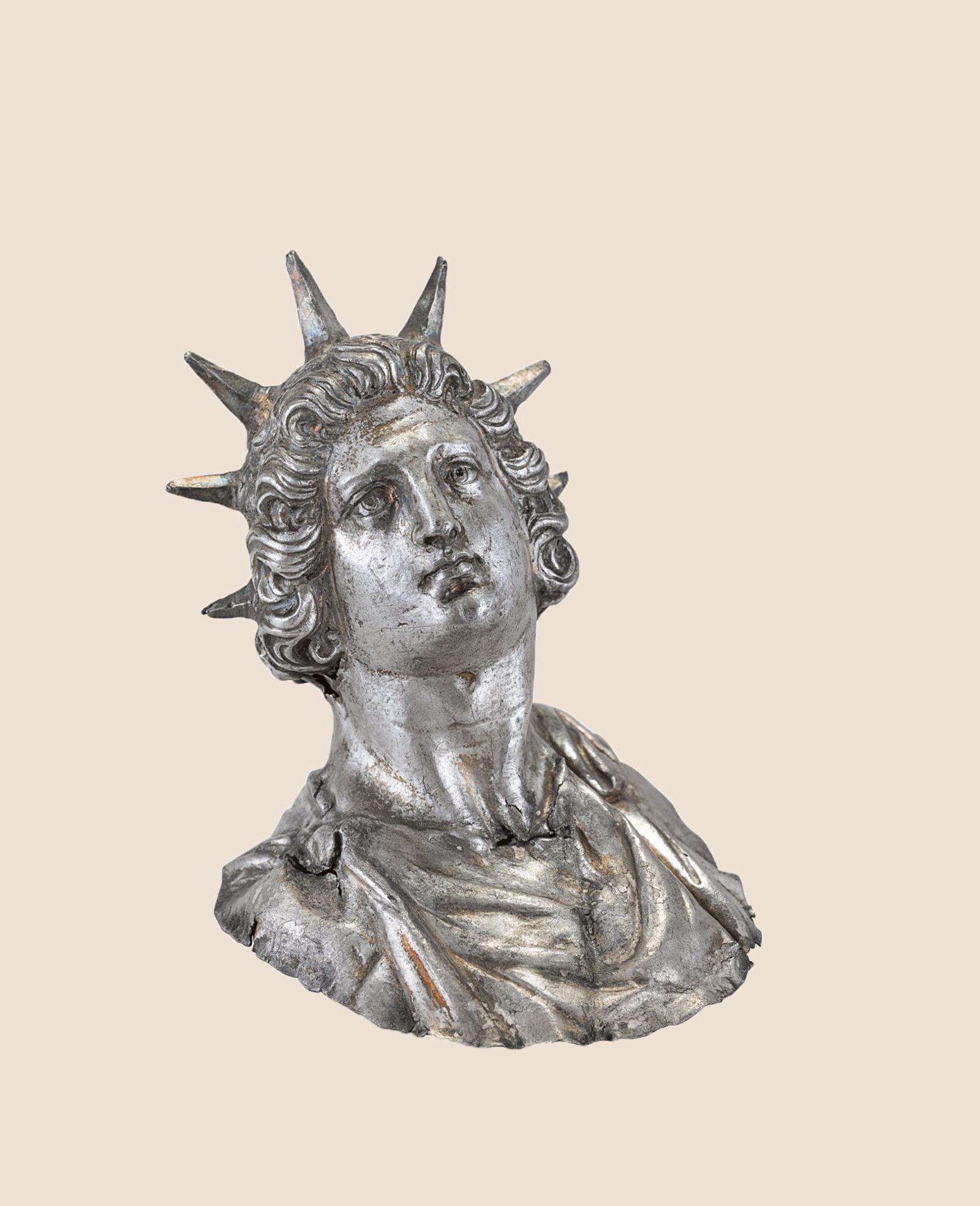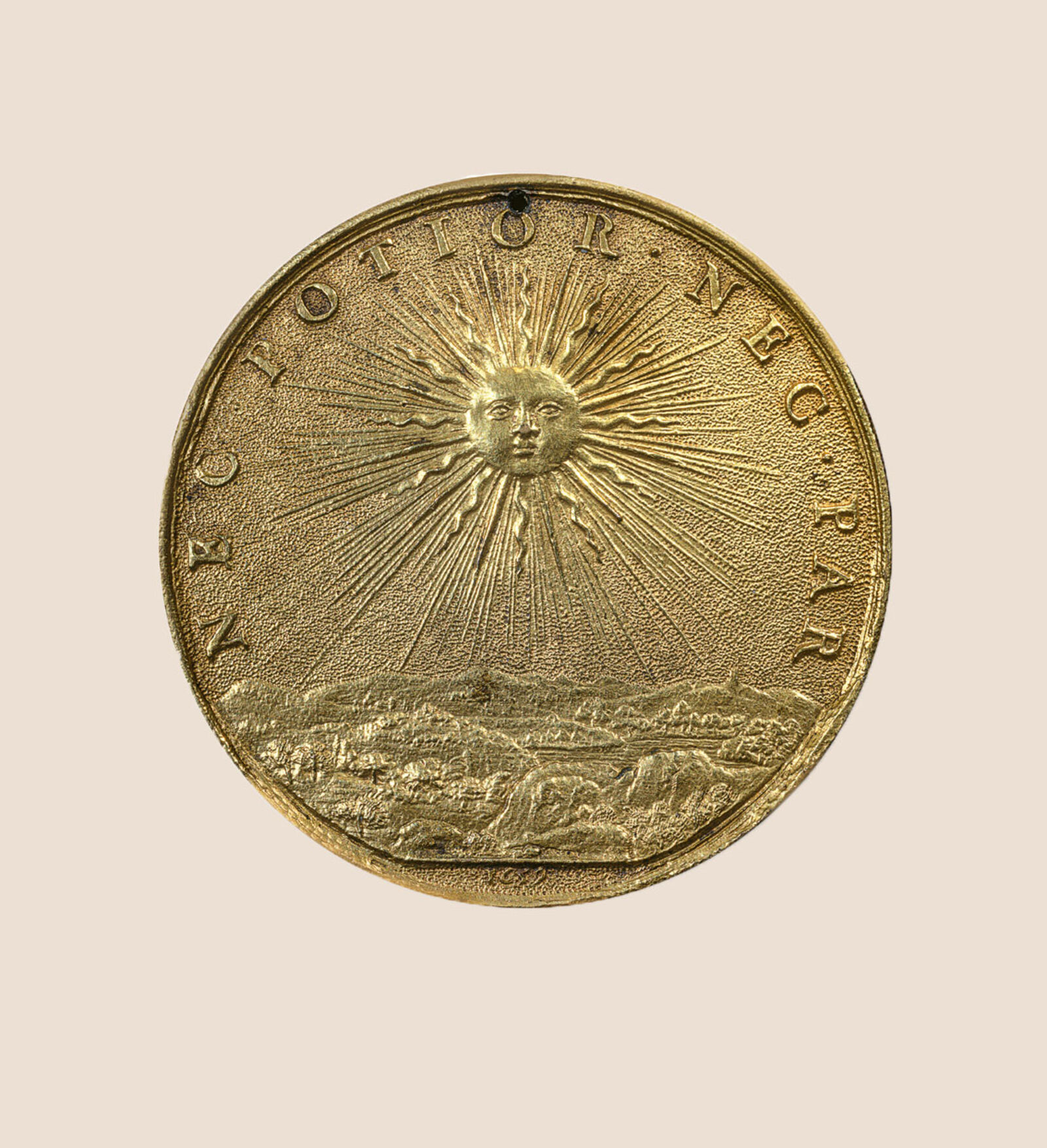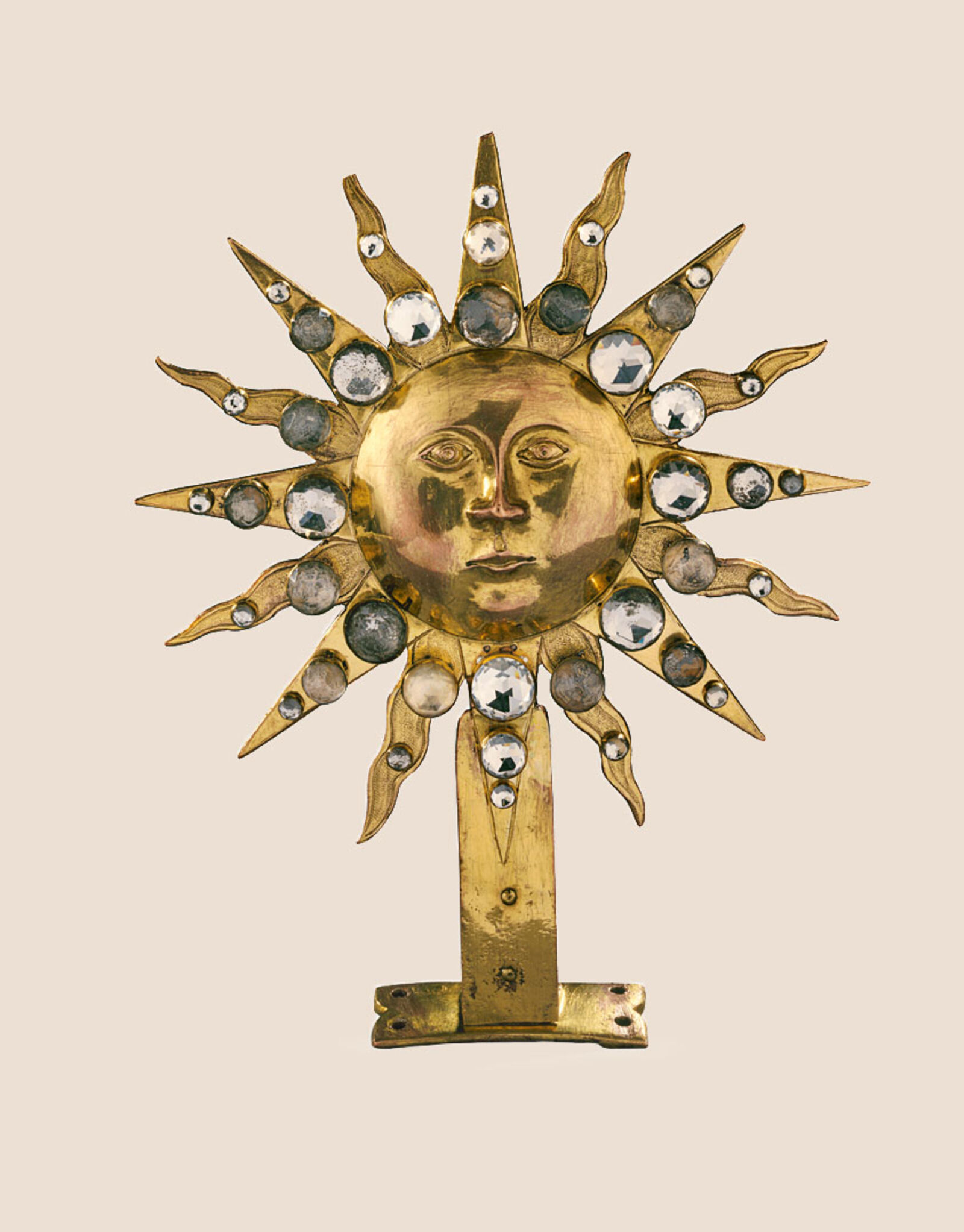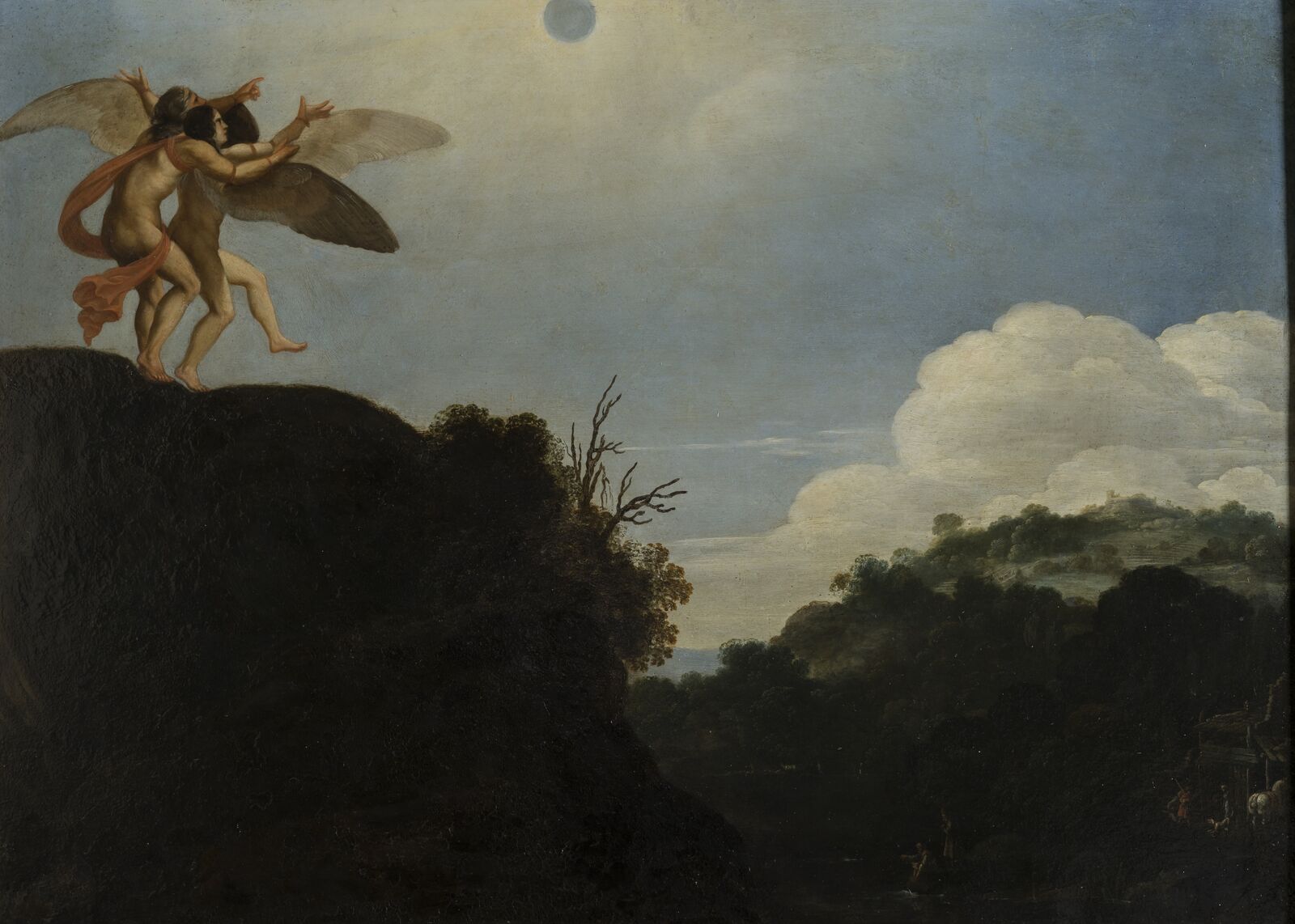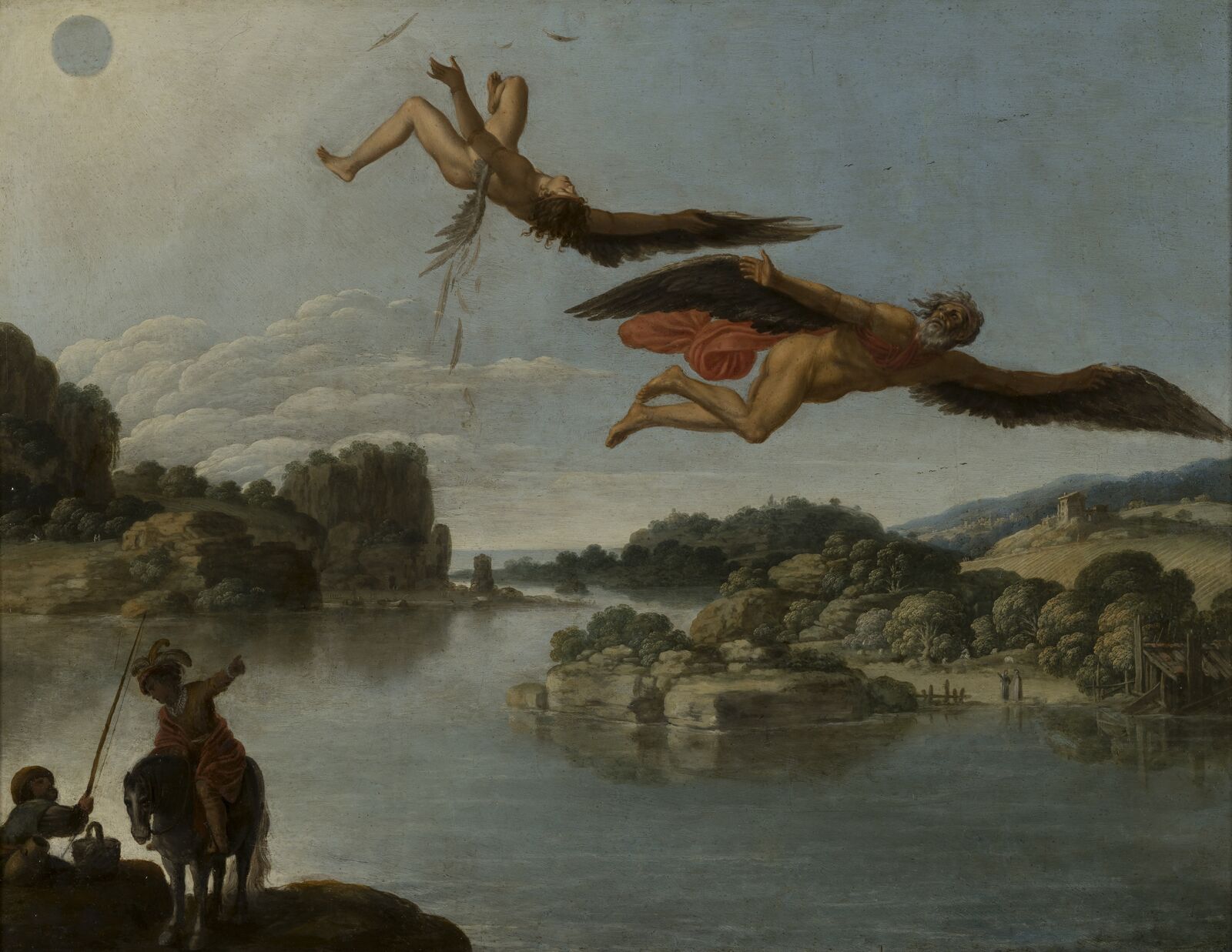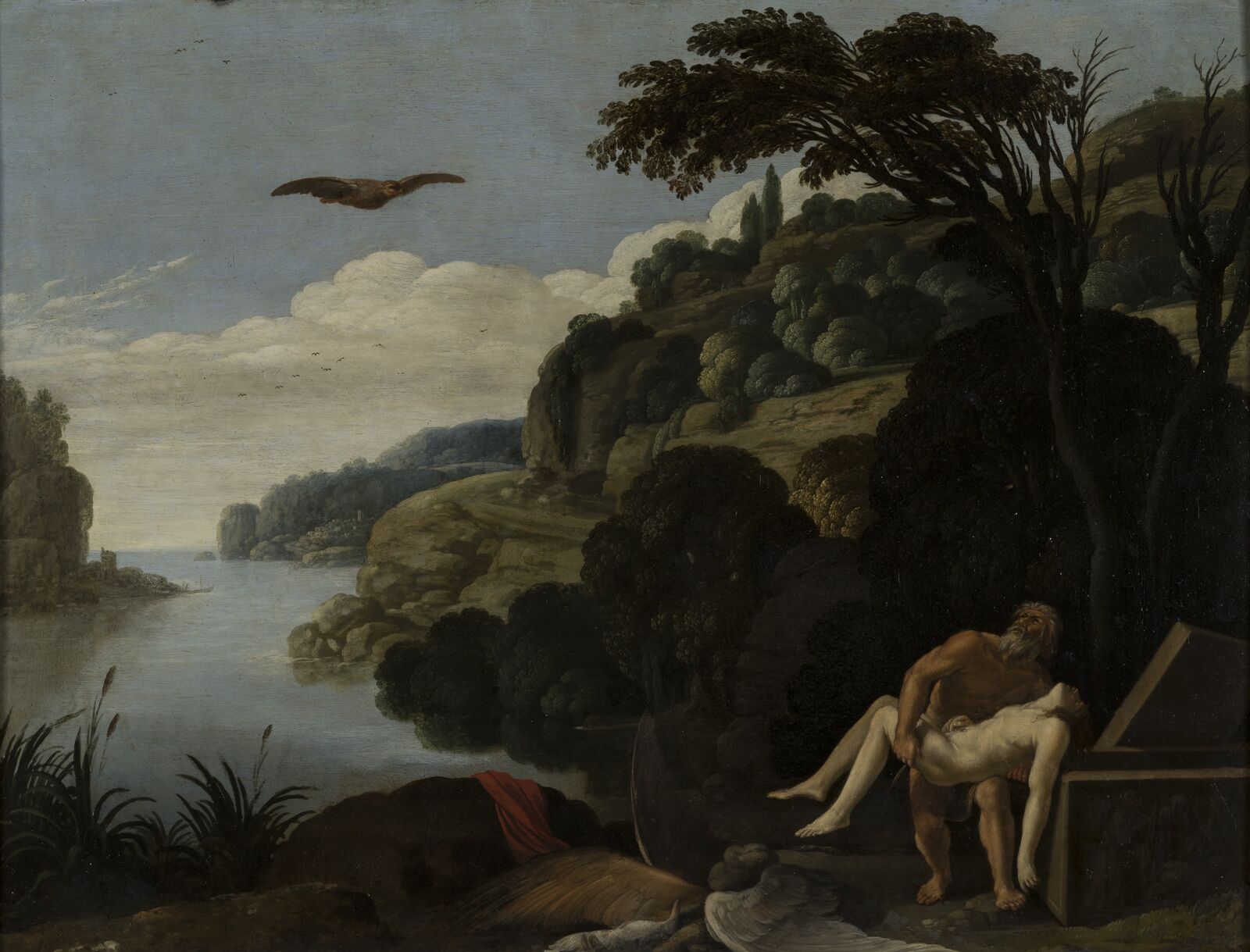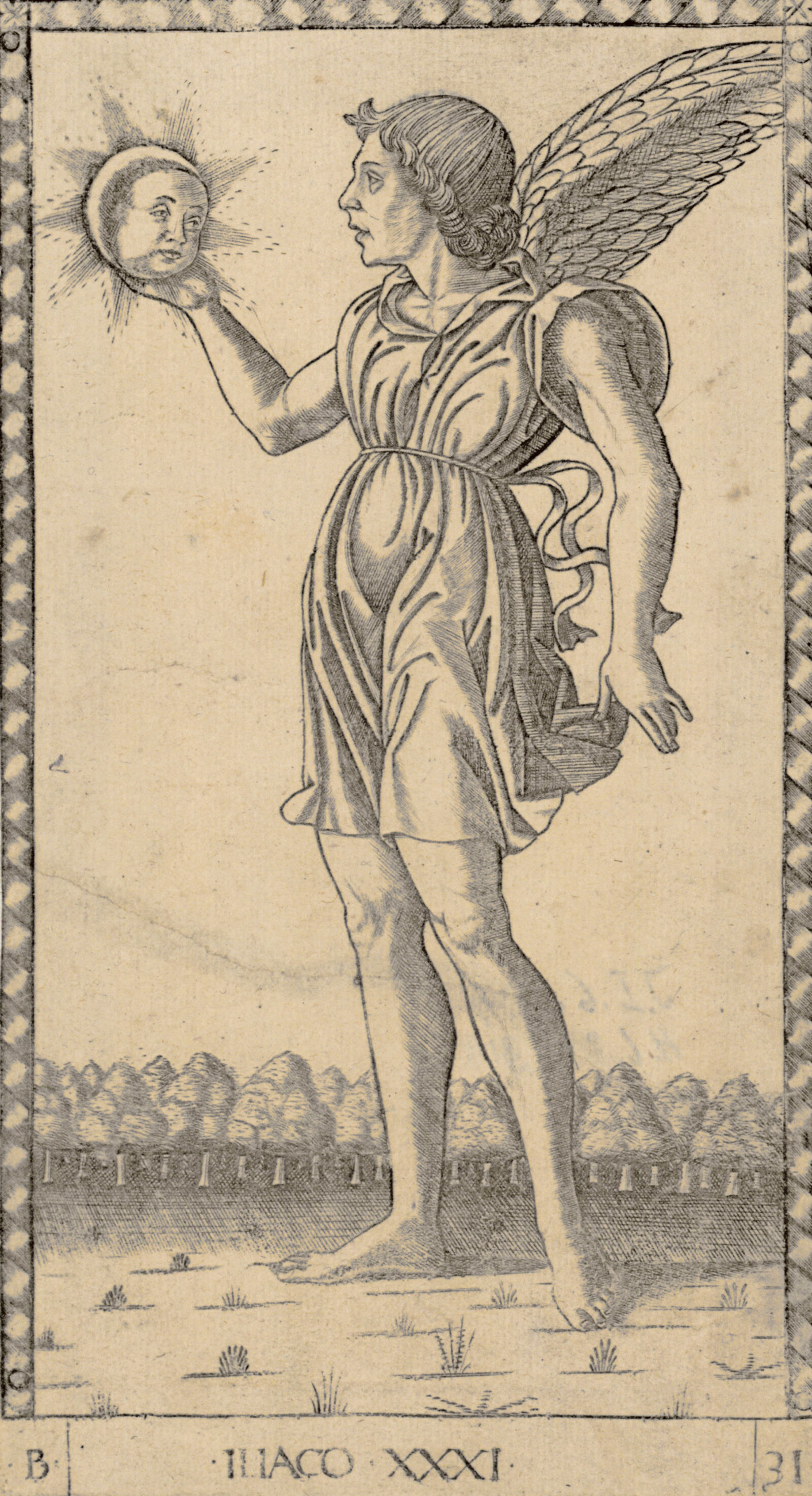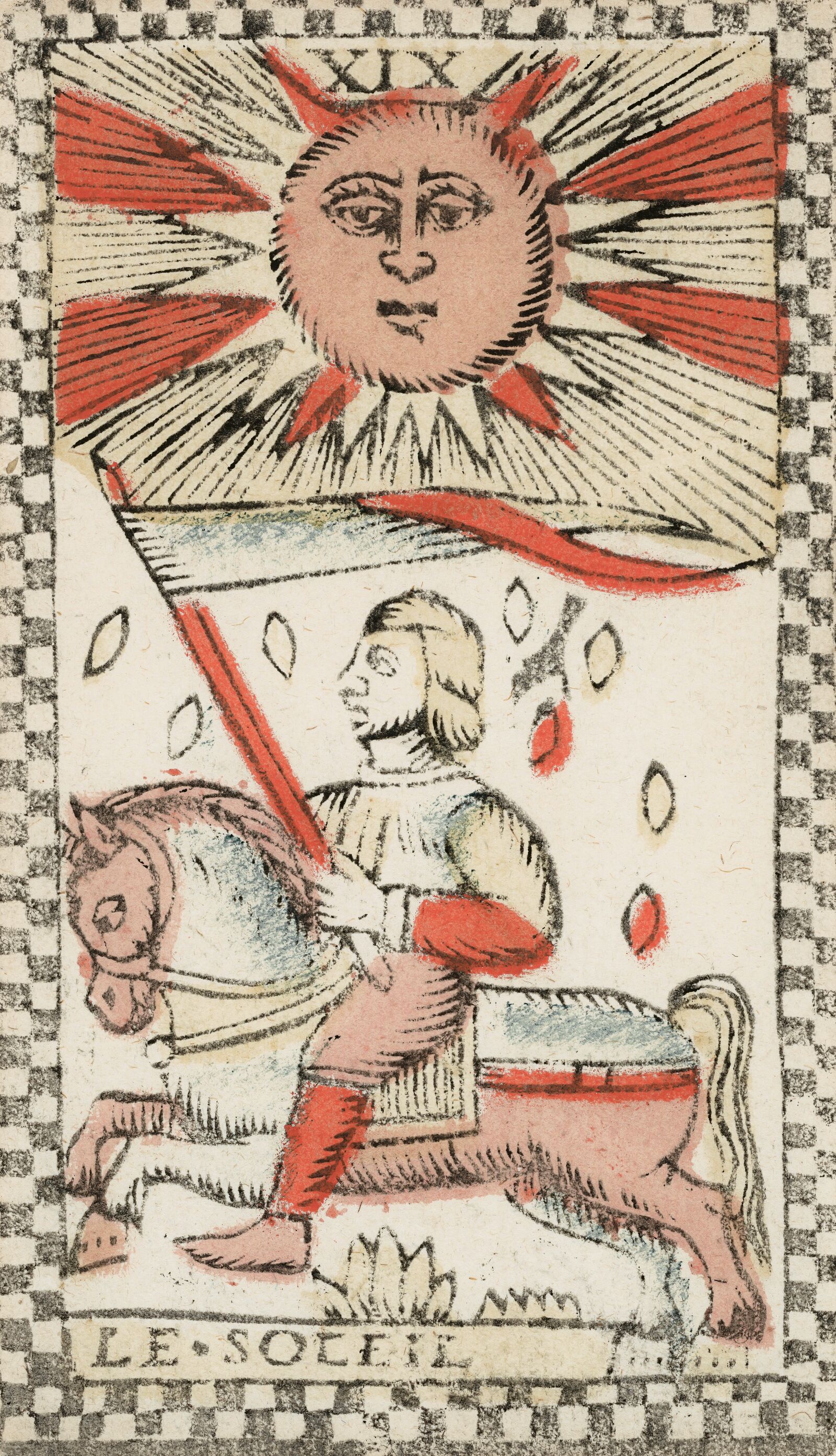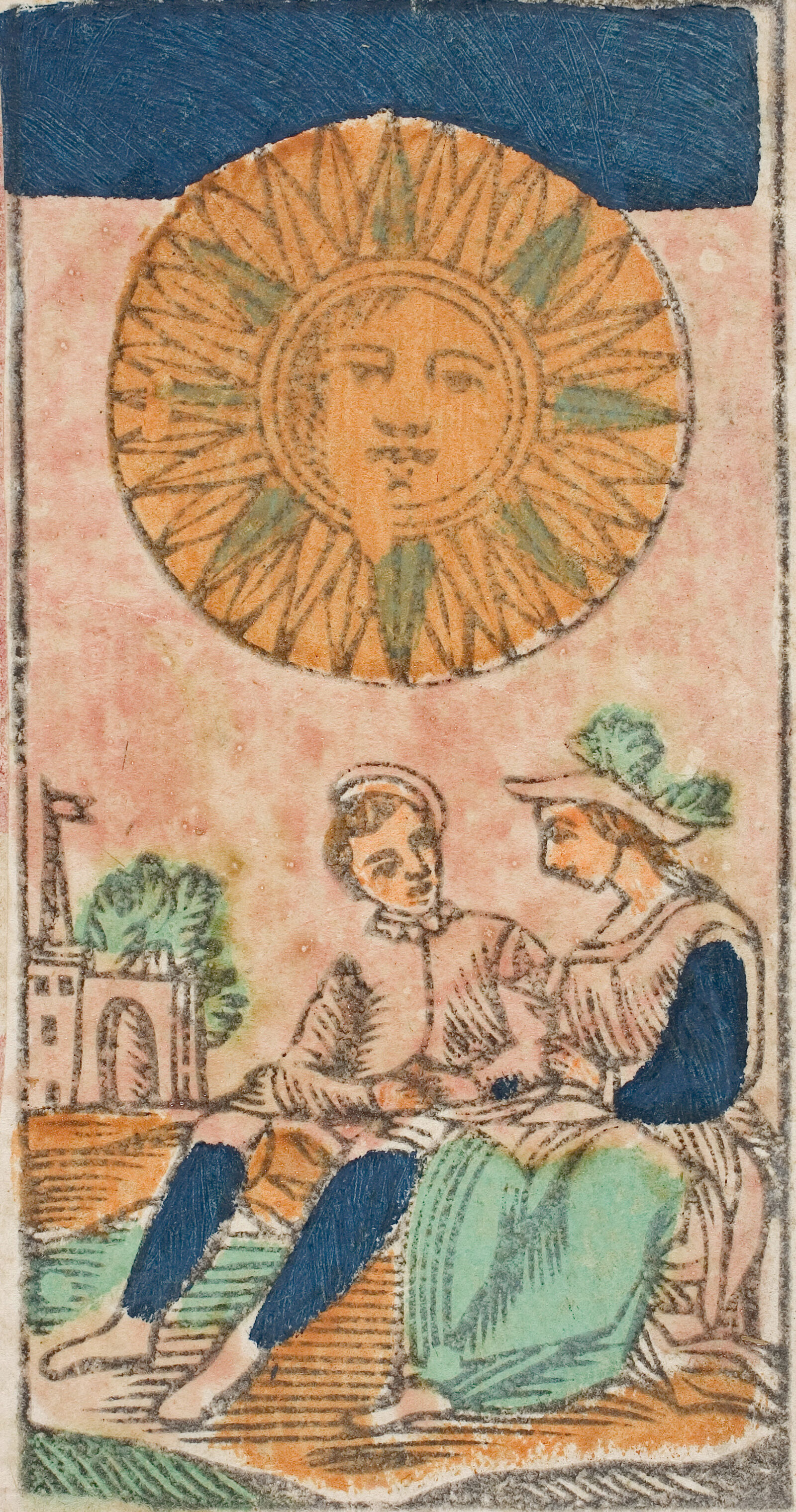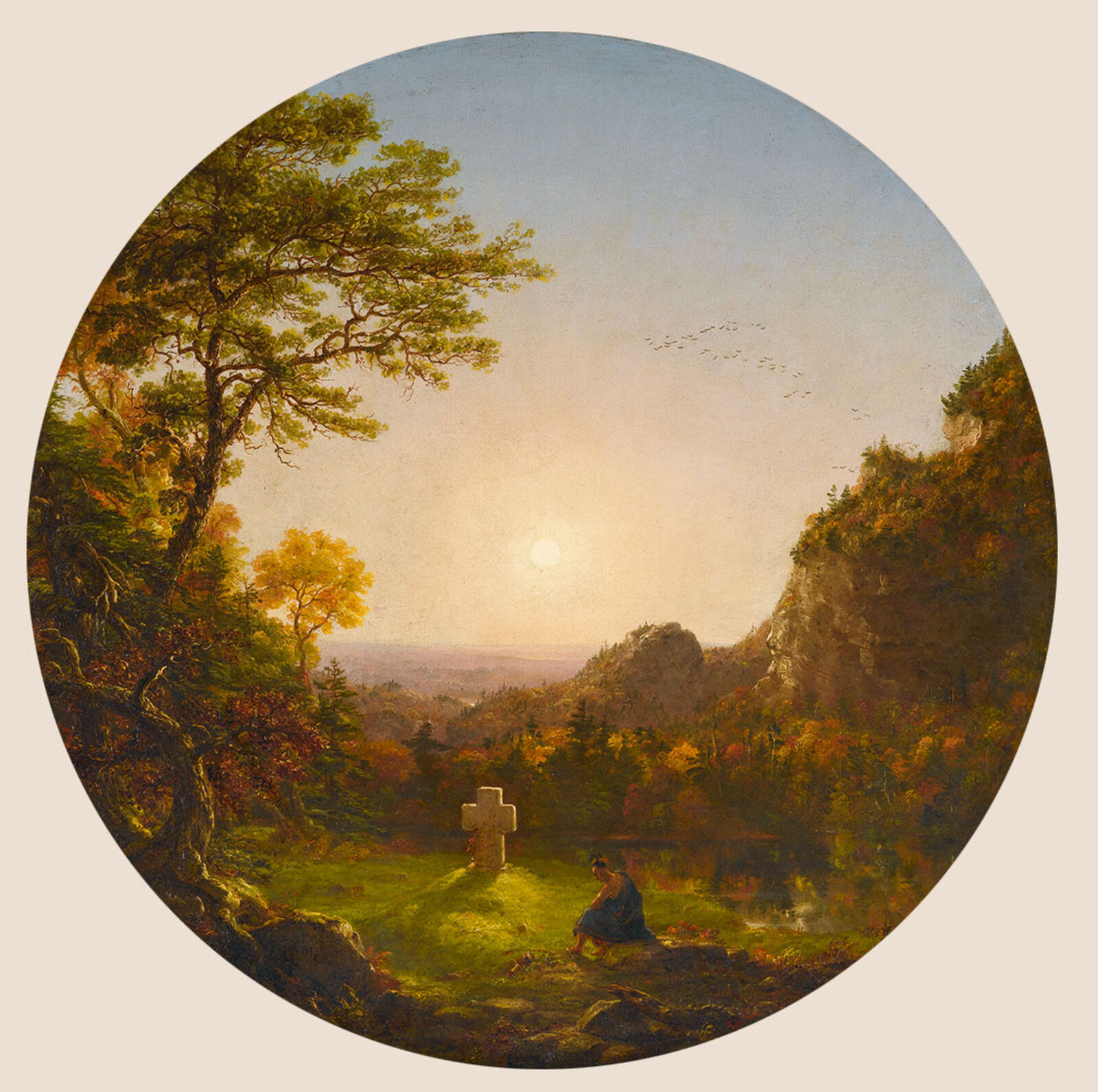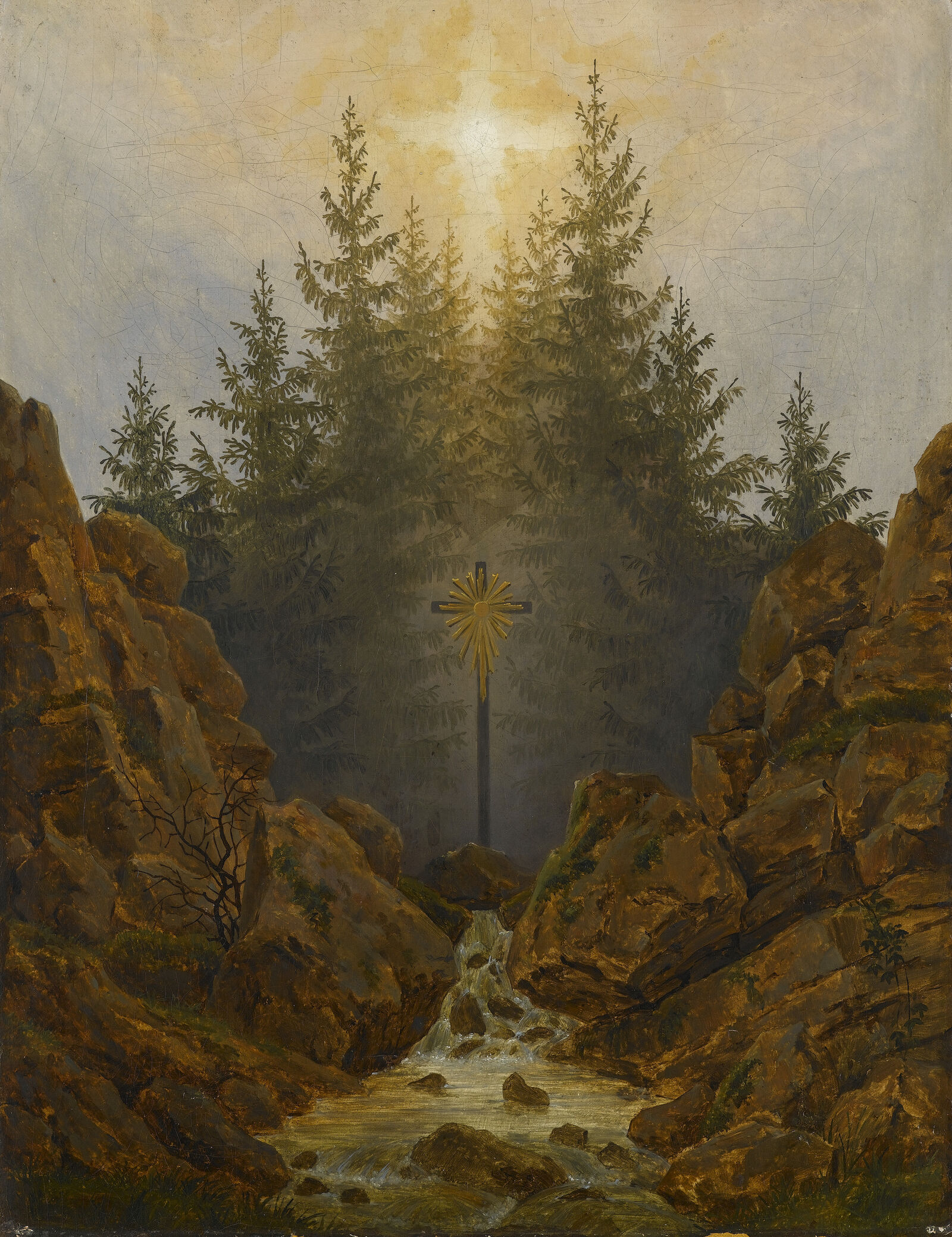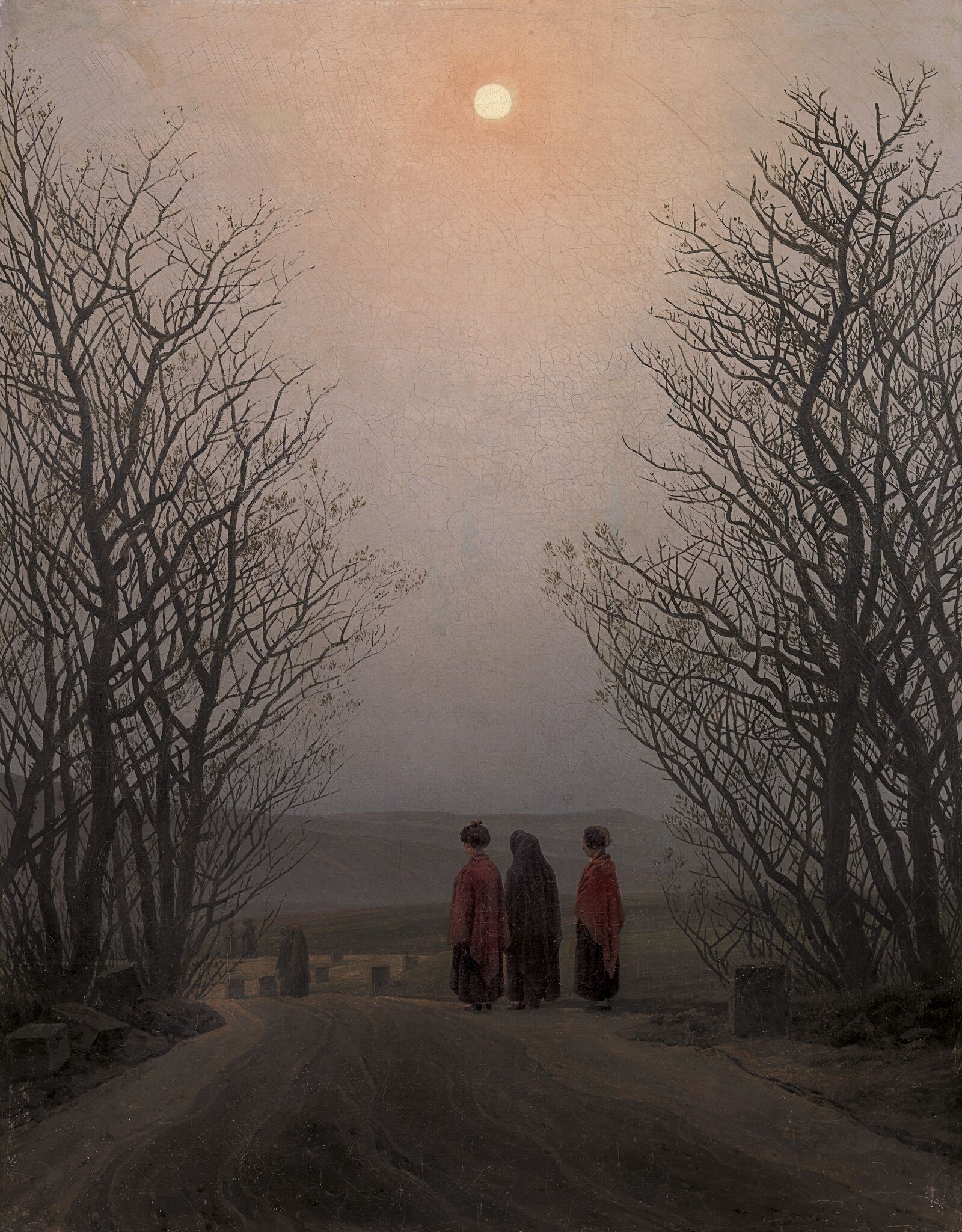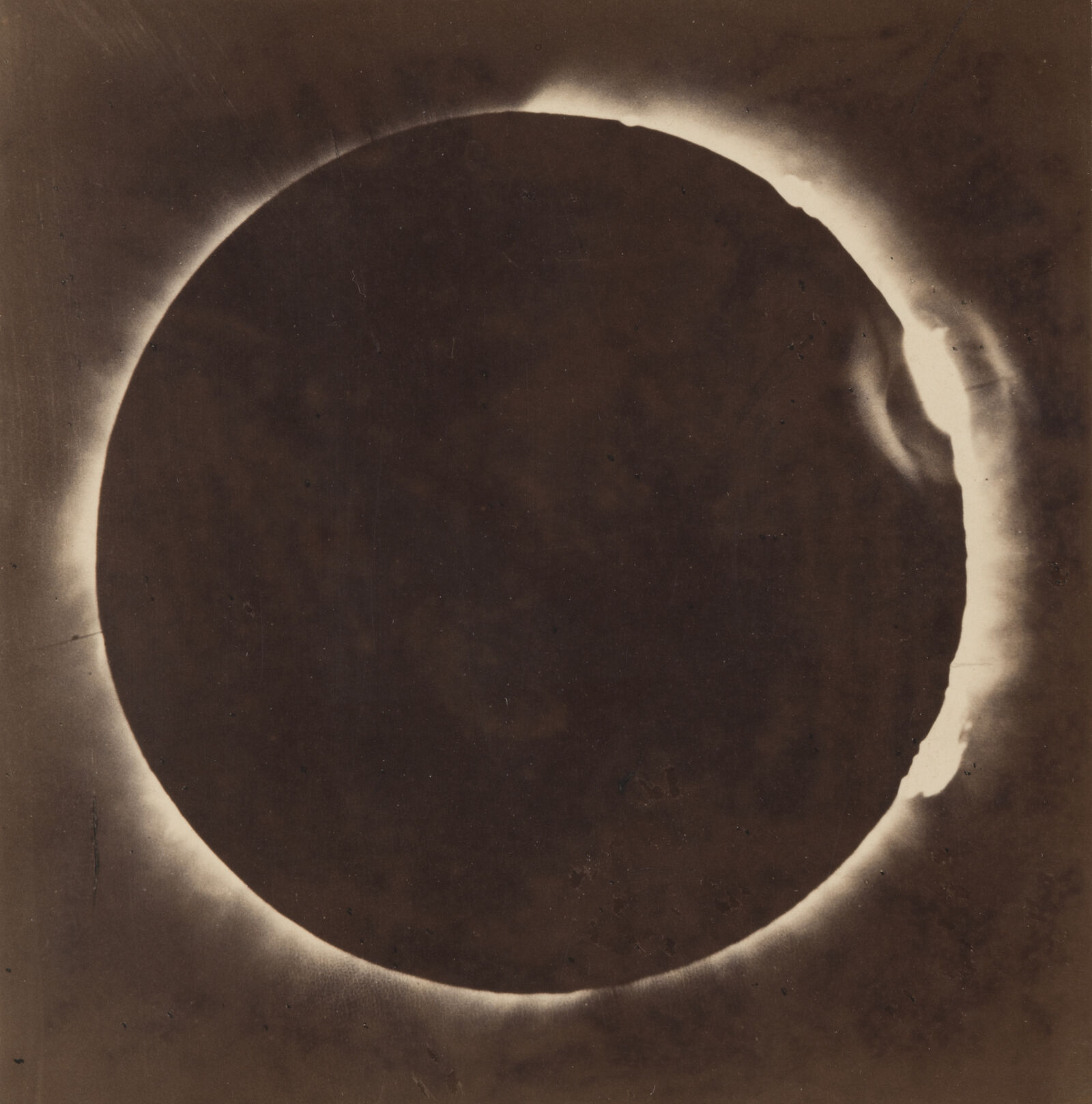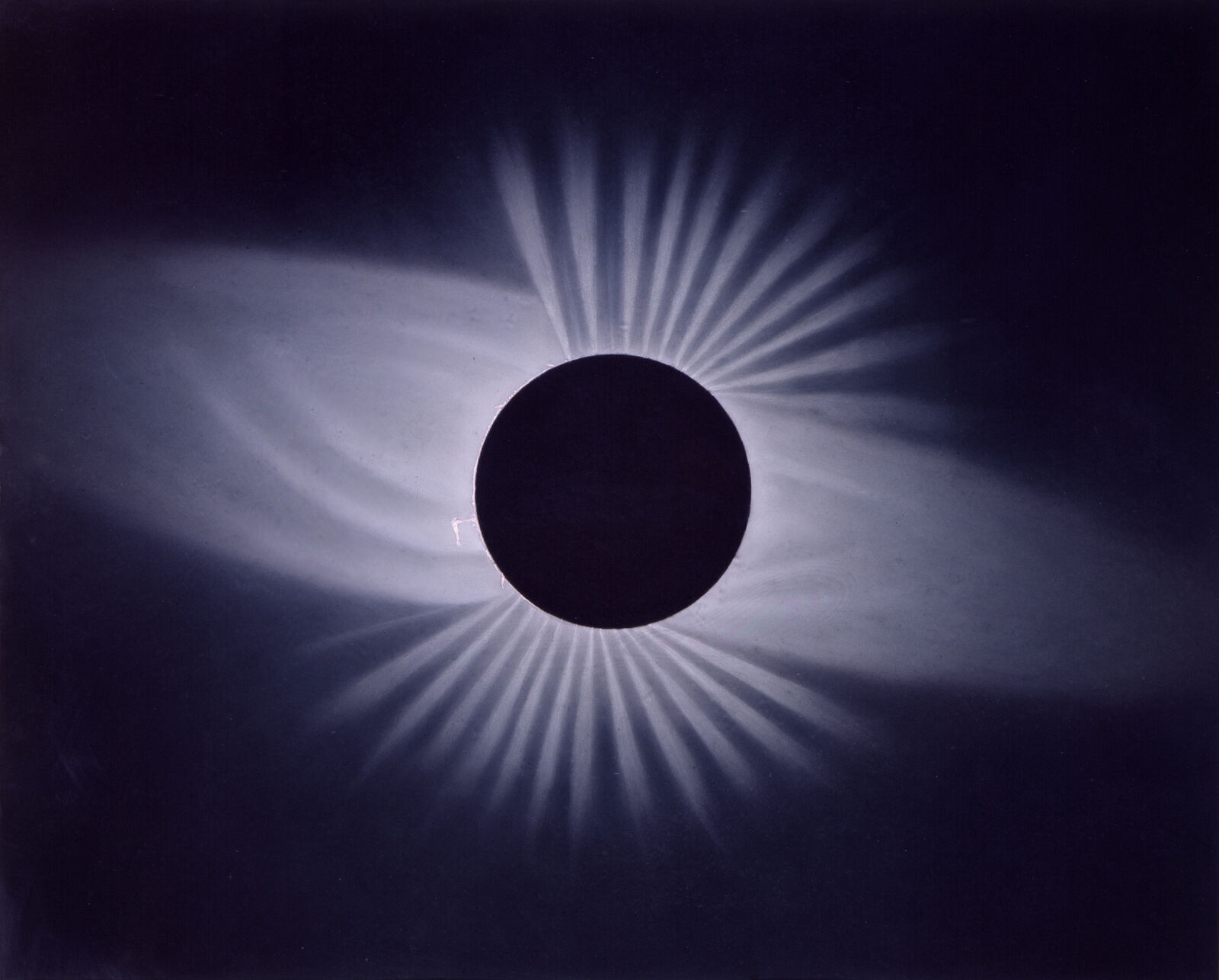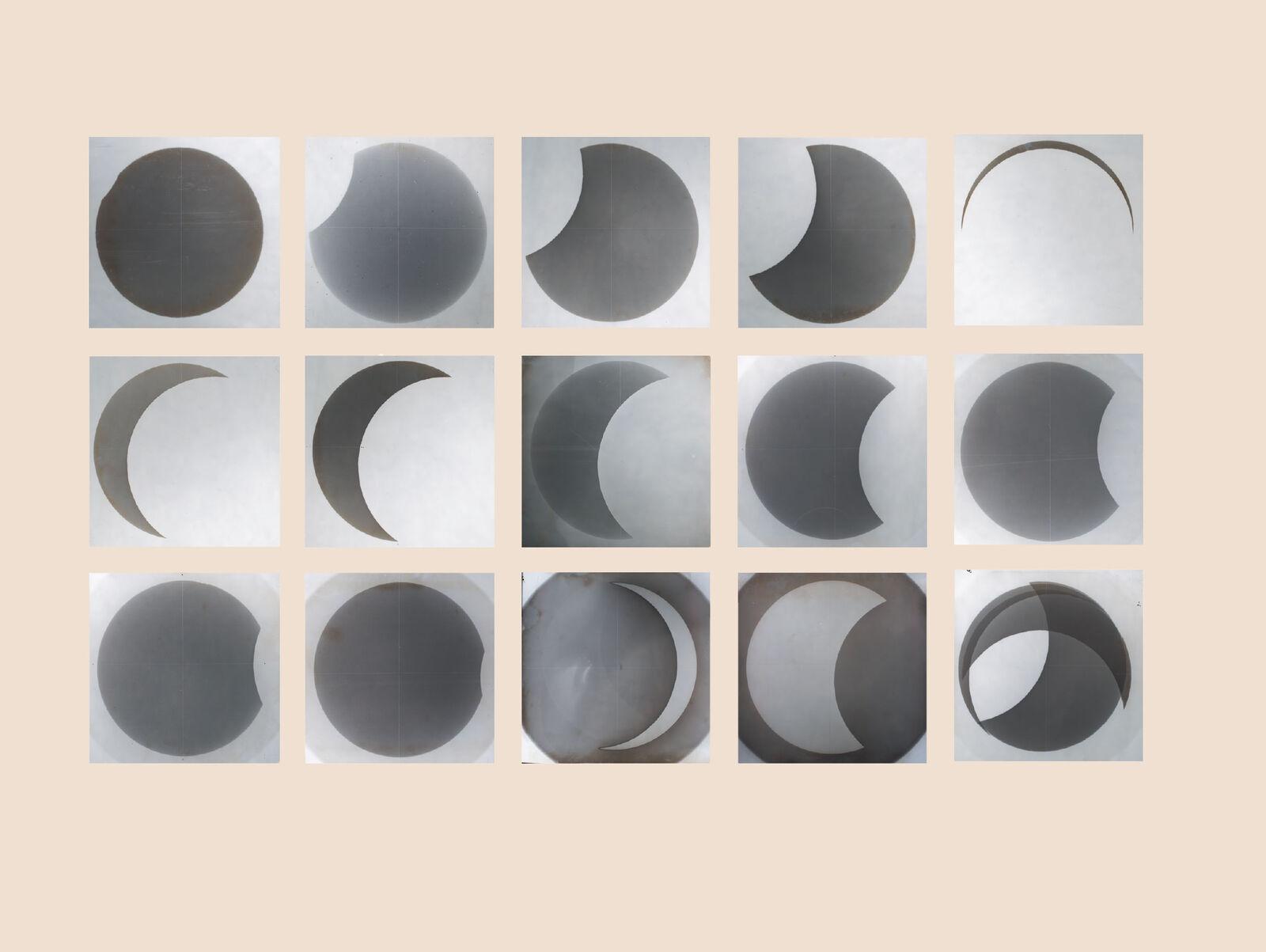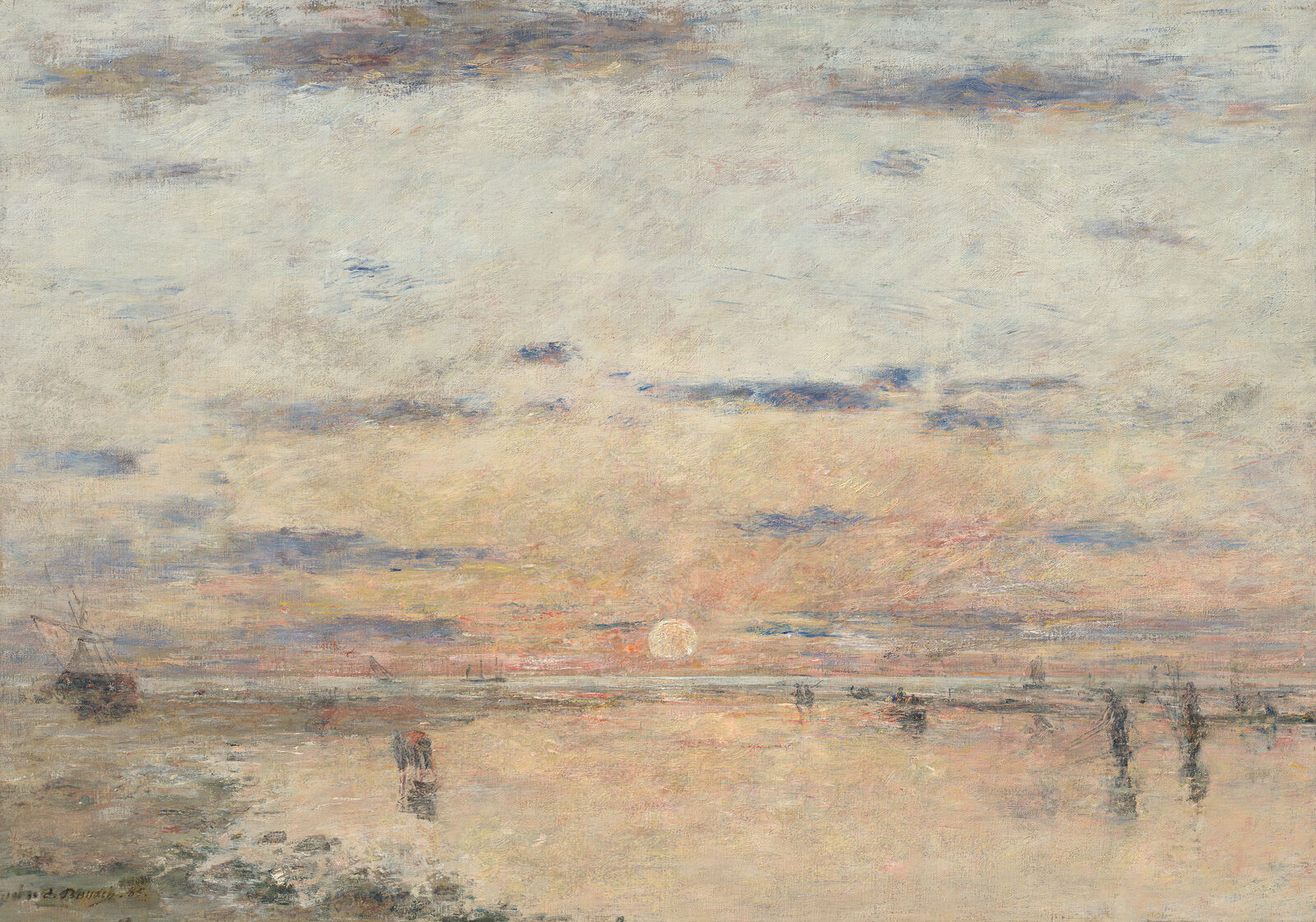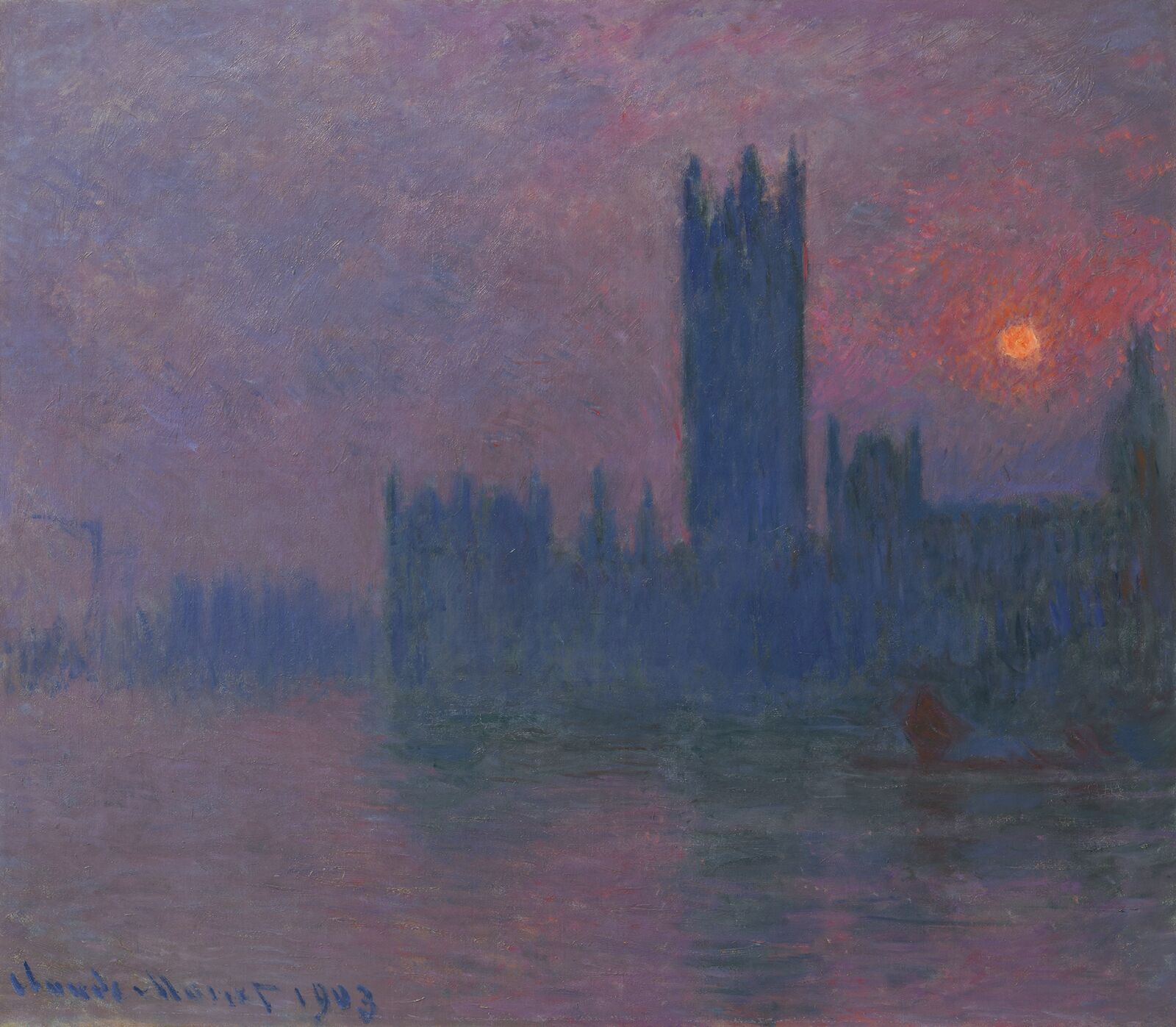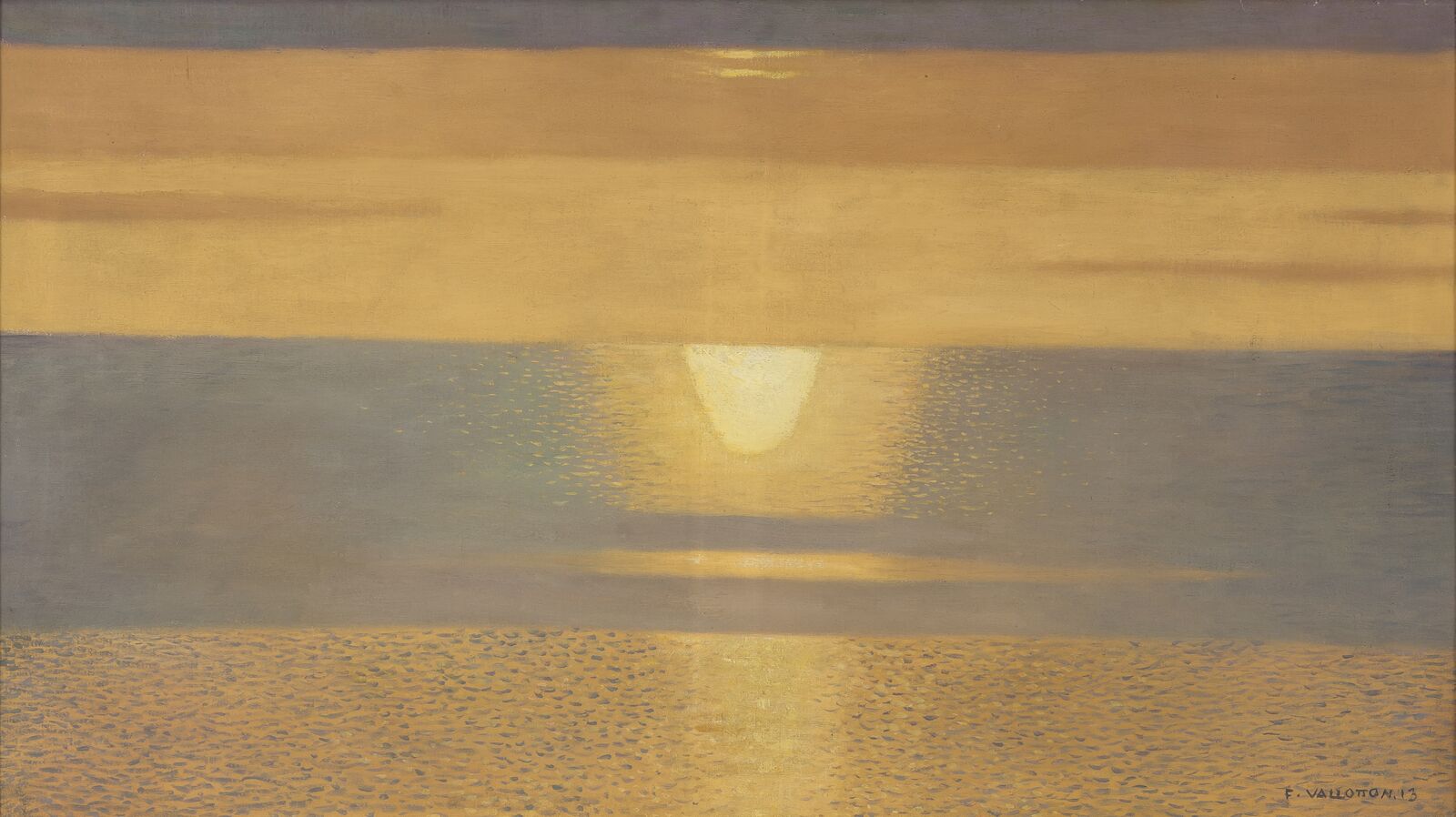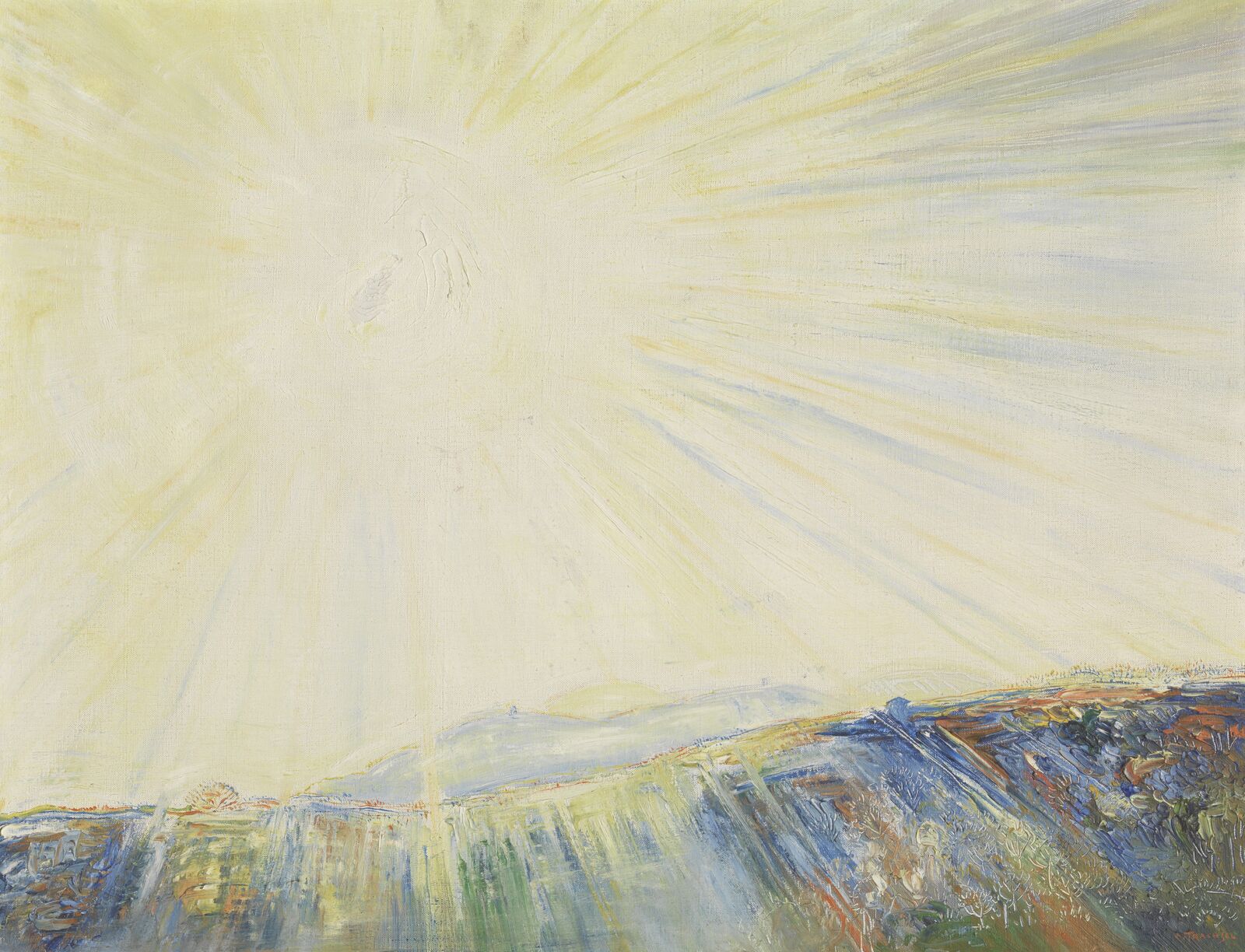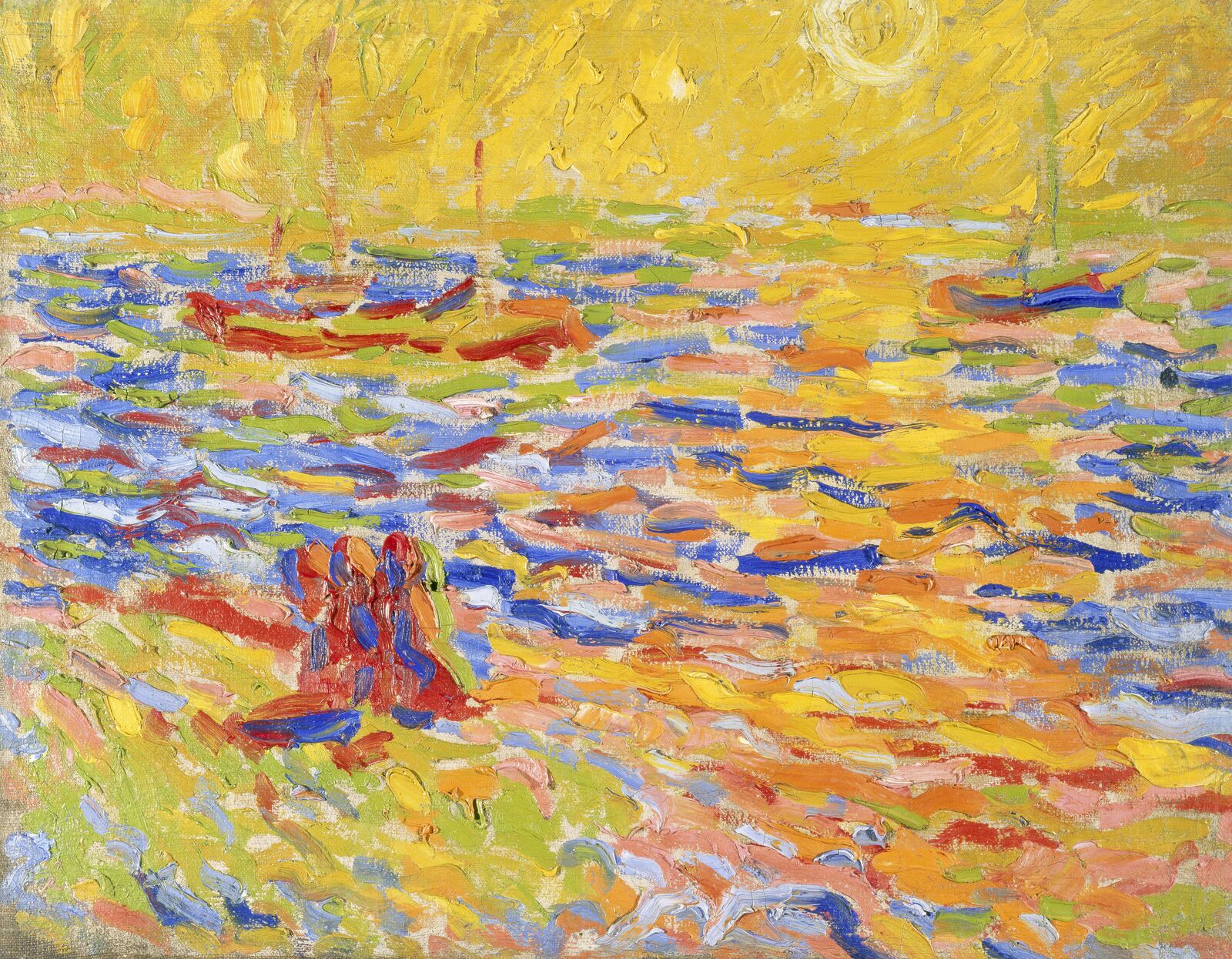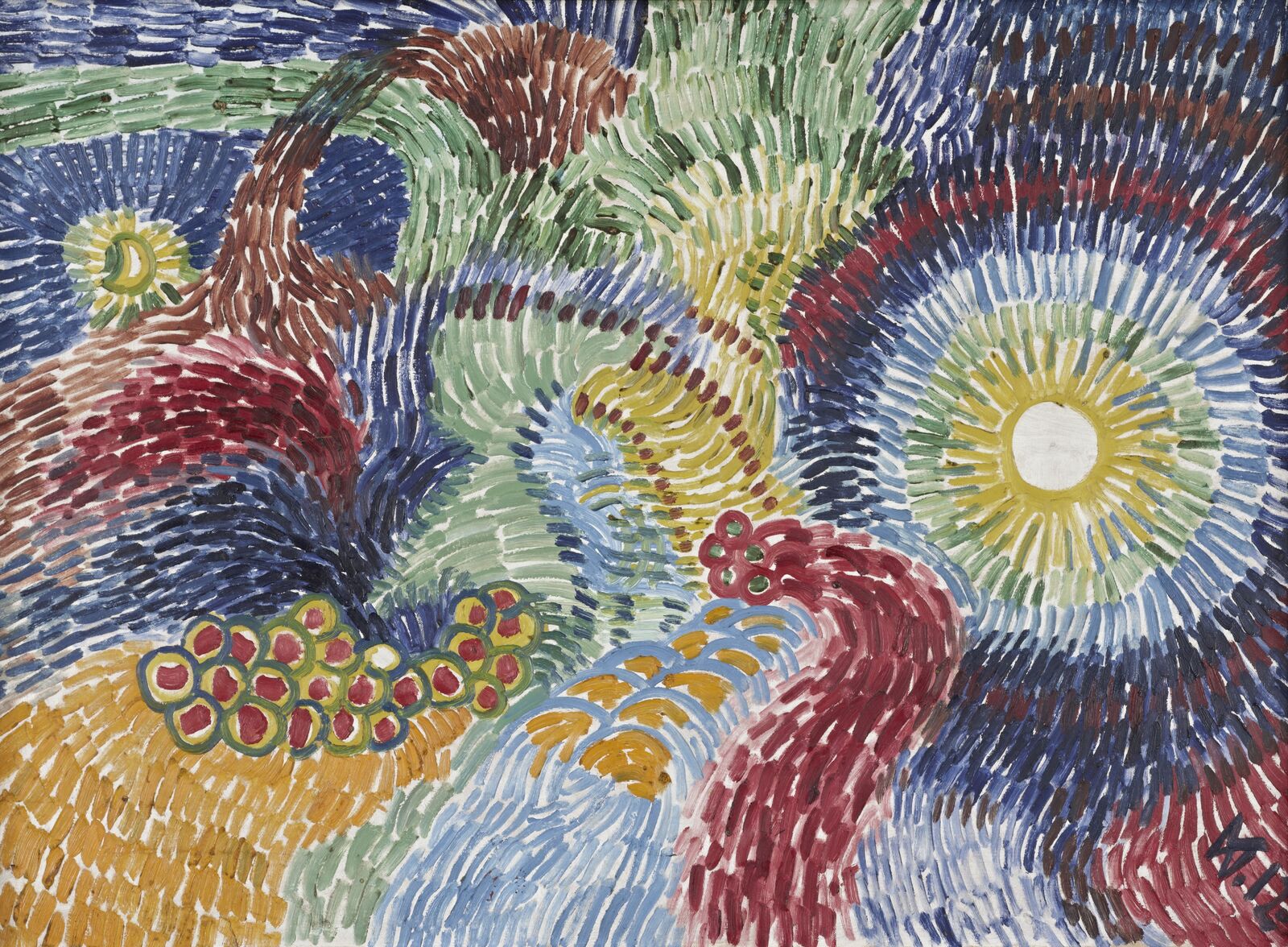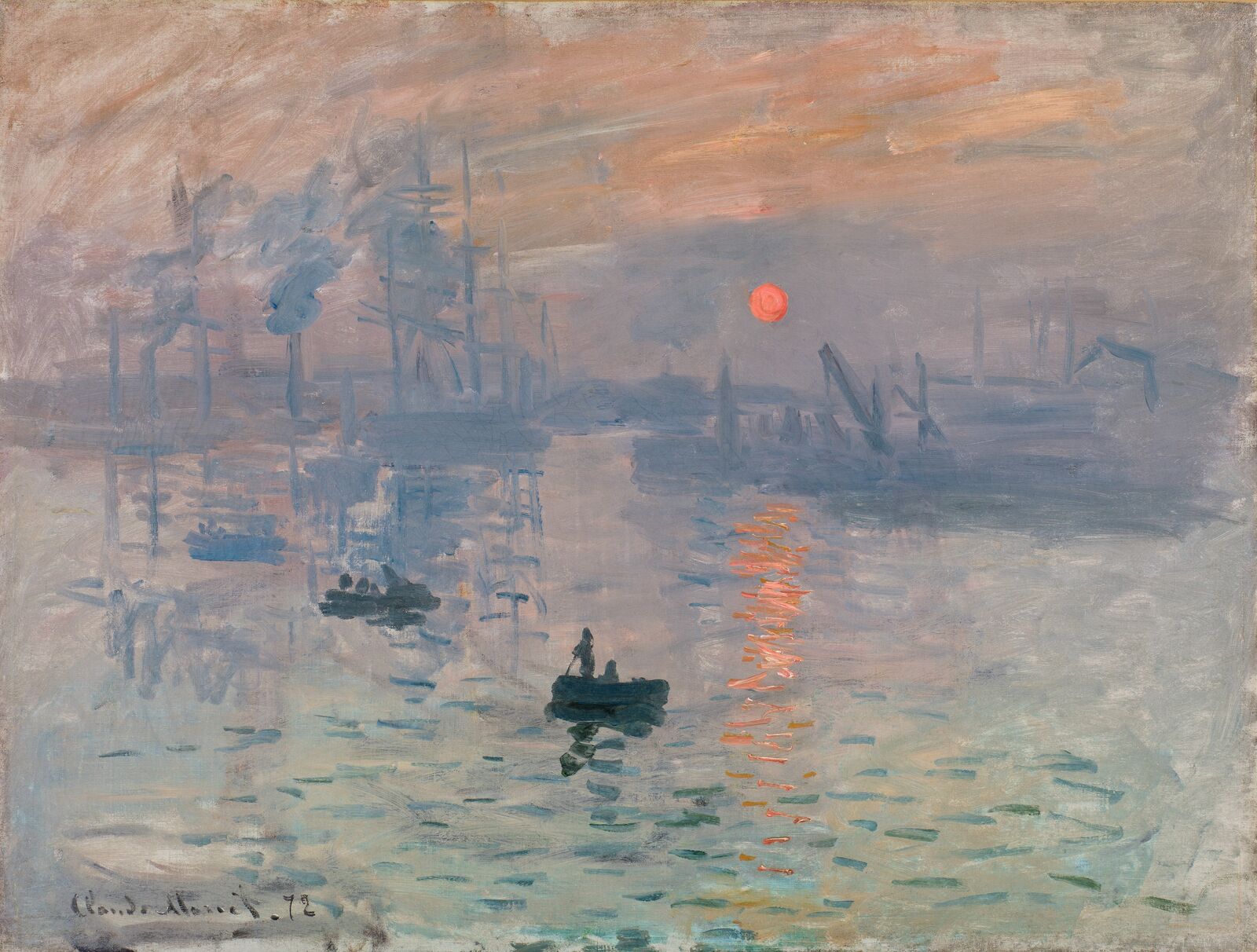
The Sun:
The sun is a universal theme: for millennia, human beings have responded artistically to the life-giving source of light. In many cultures, the sun was considered divine and was venerated as a symbol of inexhaustible power. It became a prominent motif in painting, appearing in mythological scenes as well as in atmospheric landscapes. Although it has long since ceased to carry mythological meaning, the sun remains a fascinating and compelling phenomenon even in the art of the present day.
Everyone worships the turning wheel of the sun.
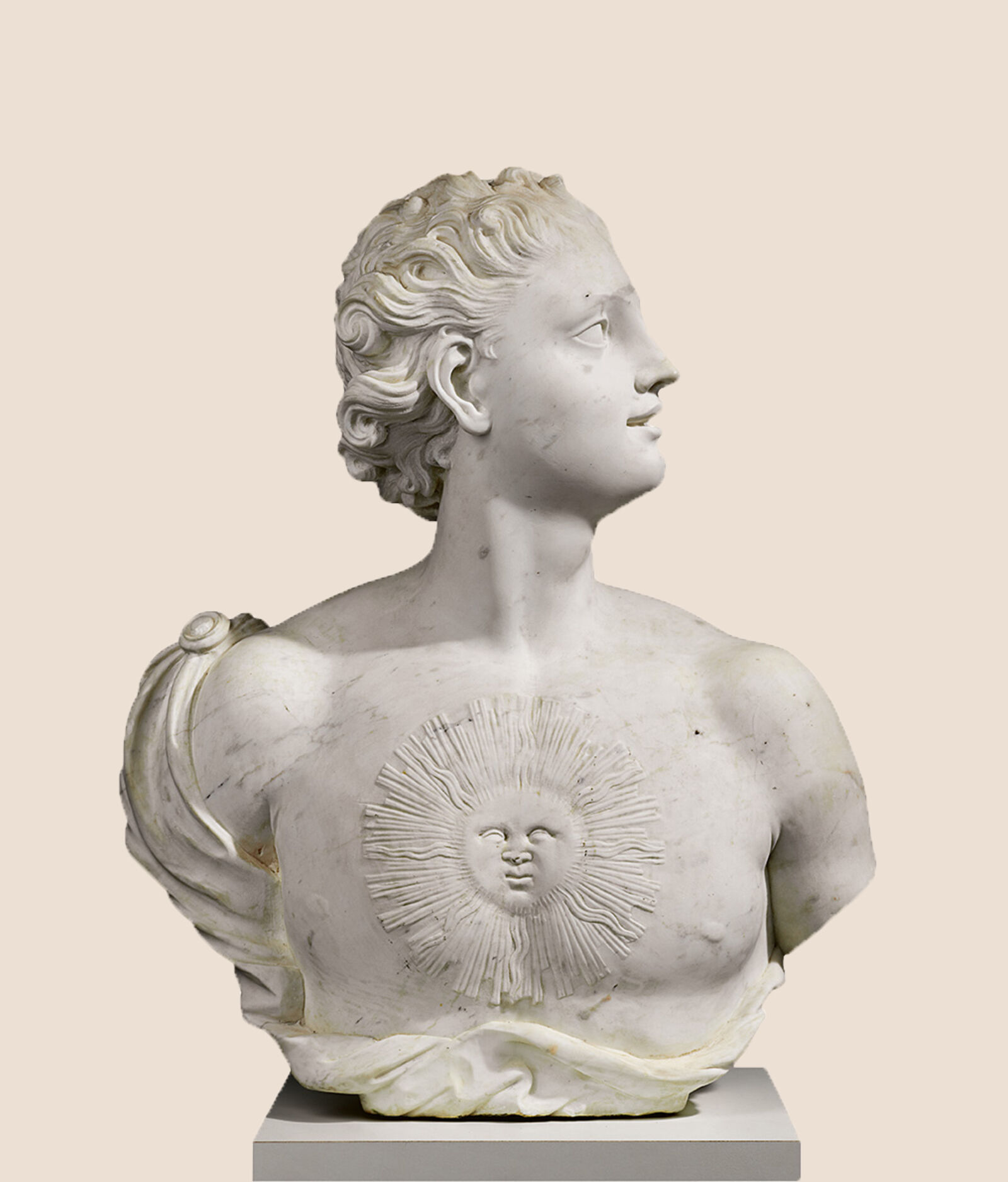
Antonio Corradini: Apoll, ca. 1720, Skulpturensammlung, Staatliche Kunstsammlungen Dresden, Image: Elke Estel/Hans-Peter Klut
The Venetian sculptor Antonio Corradini inscribed the fiery round face of the sun directly into Apollo’s body: in this bust, the sun god is united with his symbol.
The Sun: Source of Light in Art is the first exhibition to comprehensively explore images of the sun in European art from antiquity to the present. Masterpieces of sculpture, painting, drawing, printmaking, photography, and installation art show how the solar star has been perceived, studied, and interpreted in ever new ways across the centuries.
The sun shines on everyone.
The centerpiece of the exhibition is Claude Monet’s Impression, Sunrise of 1872, a masterpiece of Impressionist painting. In this famous image of a fleeting moment, the glowing orange sun becomes the focal point and locus of energy. The painting gave the Impressionist movement its name.

Claude Monet: Impression, Sunrise, 1872, Musée Marmottan Monet, Paris, Gift of Eugène and Victorine Donop de Monchy, 1940
© Musée Marmottan Monet, Paris / Studio Baraja SLB
Monet painted this view from a luxury hotel in the port city of Le Havre in Normandy, using rapid, sketch-like brushstrokes to capture what he saw before him.
The Barberini Prolog to the exhibition surveys the multifaceted image of the sun since antiquity and shows how artists of all periods responded to the challenge of depicting it. For indeed, no one can look at the sun: its light is too bright.
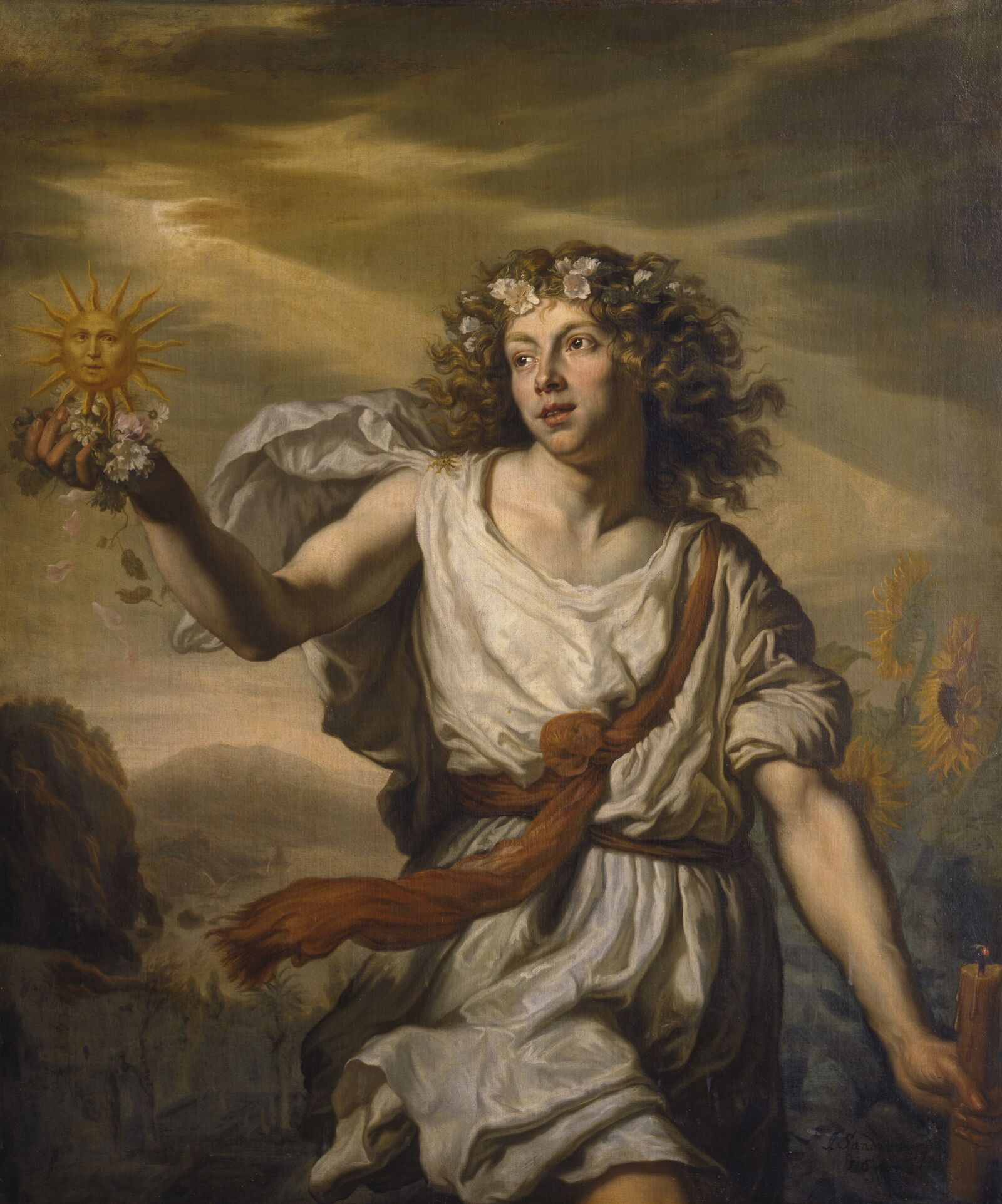

Skipping lightly, Day approaches, here embodied as a youth with curly hair. He holds a sun face in his upraised hand. The German painter and art writer Joachim von Sandrart created this oil painting for a Baroque banquet hall.
Joachim von Sandrart: The Day, 1643, Bayerische Staatsgemäldesammlungen - Schleißheim, Staatsgalerie Schleißheim
© Blauel Gnamm - ARTOTHEK
In the ancient world, the sun was represented in human form. The Greeks embodied the celestial luminary first as the god Helios, later as Apollo. From there the conception of an anthropomorphic sun god made its way to the Roman Empire, where he was known as Sol invictus, the unconquered sun. Christianity adopted many features of the Sol’s image, such as the crown of rays, but praised Christ as the true sun.
Untiring Helios, resembling the immortals (…)
brilliant light streams from him
The sun god’s mantle reveals his youthful, athletic body. The crown of rays around his head represents the effects of his light and serves as a symbol of rank, derived from the world of Greek art.
The standing figure of Sol comes from a fresco in Pompeii. The youthful god is shown nude, gazing into the distance. It is one of the oldest surviving images of the sun god on Italian soil.
As the beautiful, youthful beautiful bringer of light and the guarantor of order, the sun god served as a symbol of rulership from earliest times. Emperors and kings sought to profit from his splendor, using his radiant passage in the sun chariot to represent their own triumphs. In the seventeenth century, these extravagant images gave way to more earthly conceptions, and the sun became an allegory of day.
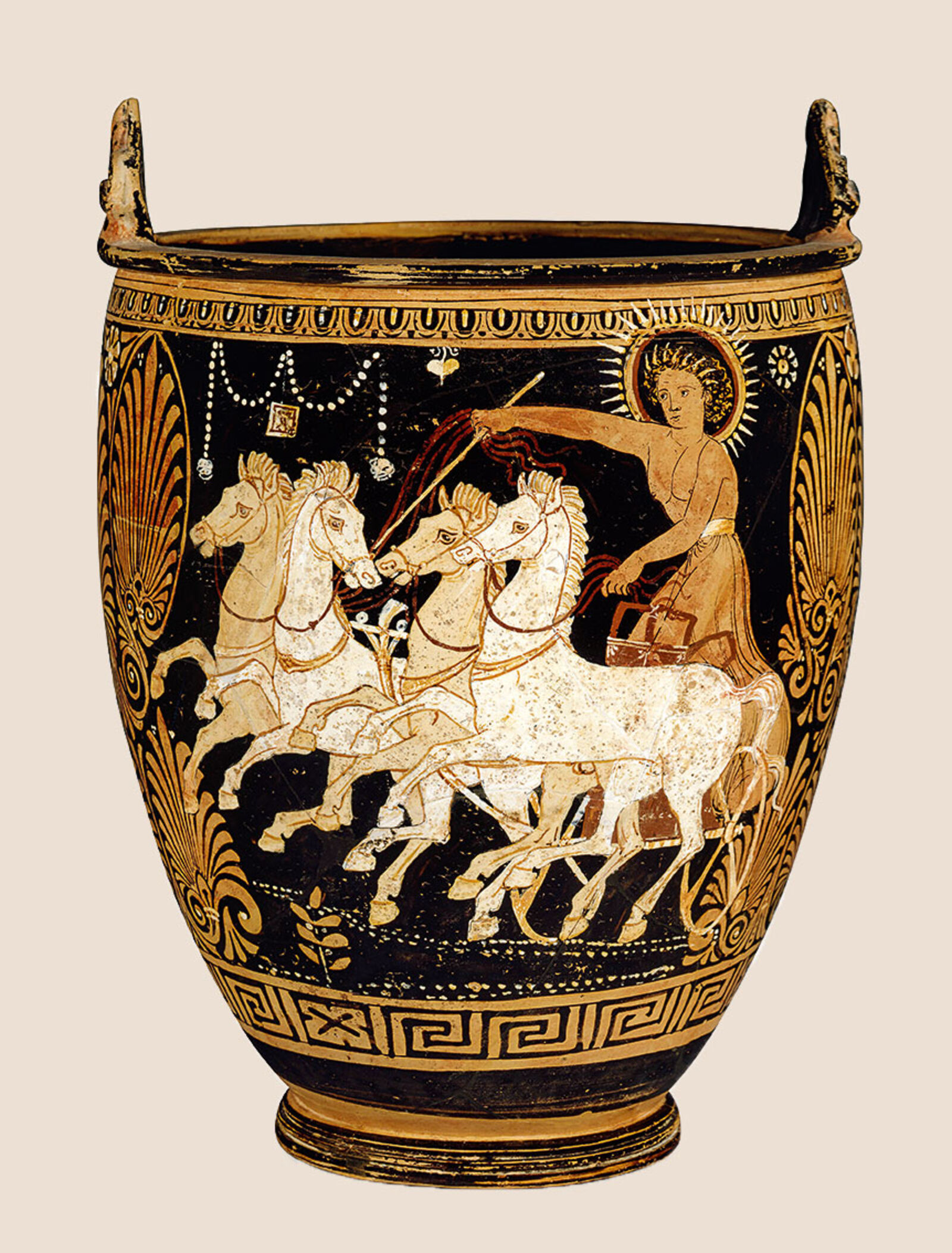
Apulian, Painter of Copenhagen 4223: Helios on the Quadriga, ca. 340–330 BCE, Museum für Kunst und Gewerbe Hamburg
The sun god Helios traverses the heavens in a four-horse chariot. According to ancient Greek mythology, the chariot rose up out of the eastern sea every morning and sank down again into the western ocean in the evening.
See, the sun! His chariot-light
O’er the earth already speeds,
While before his fiery steeds
Fly the stars into the vasty night.
The ancient notion of the divine sun chariot inspired artists across the centuries and into the modern era. Since the Italian Renaissance, Apollo’s arrival has often been visualized as the radiant triumph of light, dramatically embodied in expansive gestures, brilliant swirls of color, and dynamic compositions.
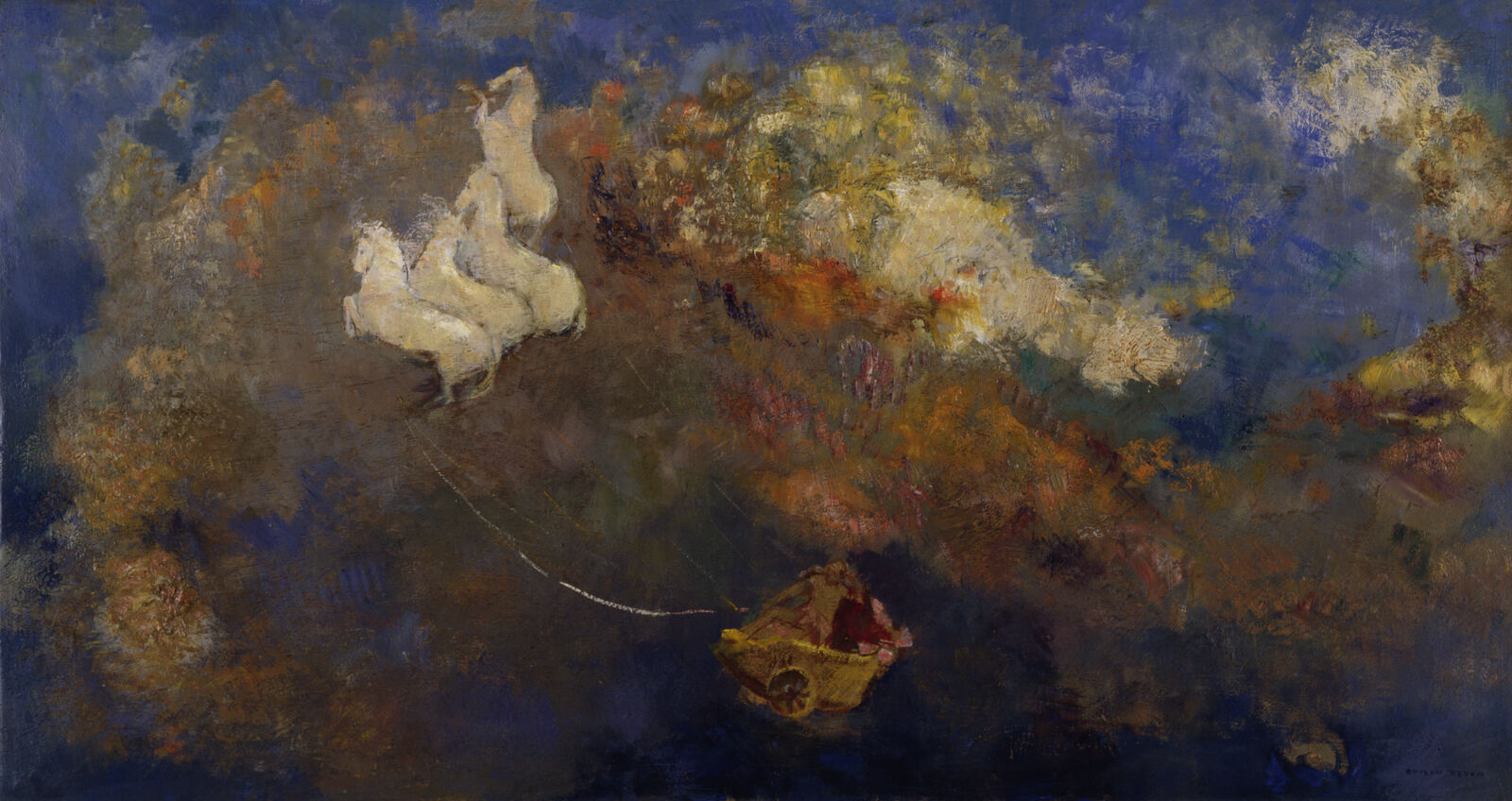
Odilon Redon: The Chariot of Apollo, 1908, Staatliche Museen zu Berlin, Nationalgalerie, Sammlung Scharf-Gerstenberg
© bpk / Nationalgalerie, SMB, Sammlung Scharf-Gerstenberg / Roman März
The Symbolist painter Odilon Redon created multiple versions of this motif. He omitted narrative details and instead allowed color to play the leading role as a means of expression.
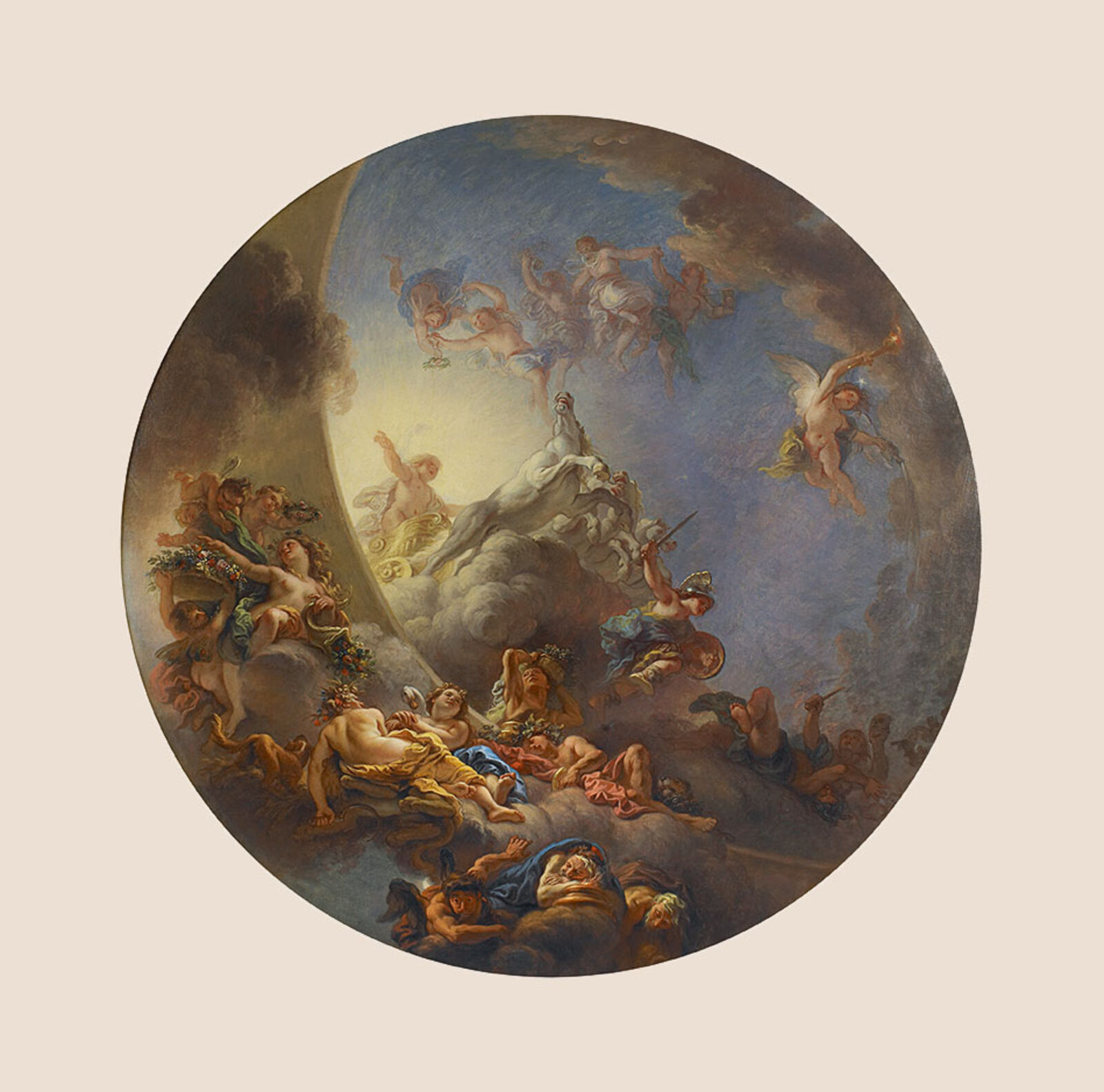
Charles de la Fosse: Sunrise with the Chariot of Apollo, 1672, Musée des Beaux-Arts, Rouen
© Réunion des Musées Métropolitains Rouen Normandie, Image: C. Lancien, C. Loisel
The four-horse chariot races across the heavens at full speed. With virtuoso skill, the Baroque painter Charles de la Fosse shows the scene from below. Here, too, the four horses of the quadriga are white.
It is the triumph of light over darkness (…) like the joy of feeling better after the experience of anguish.
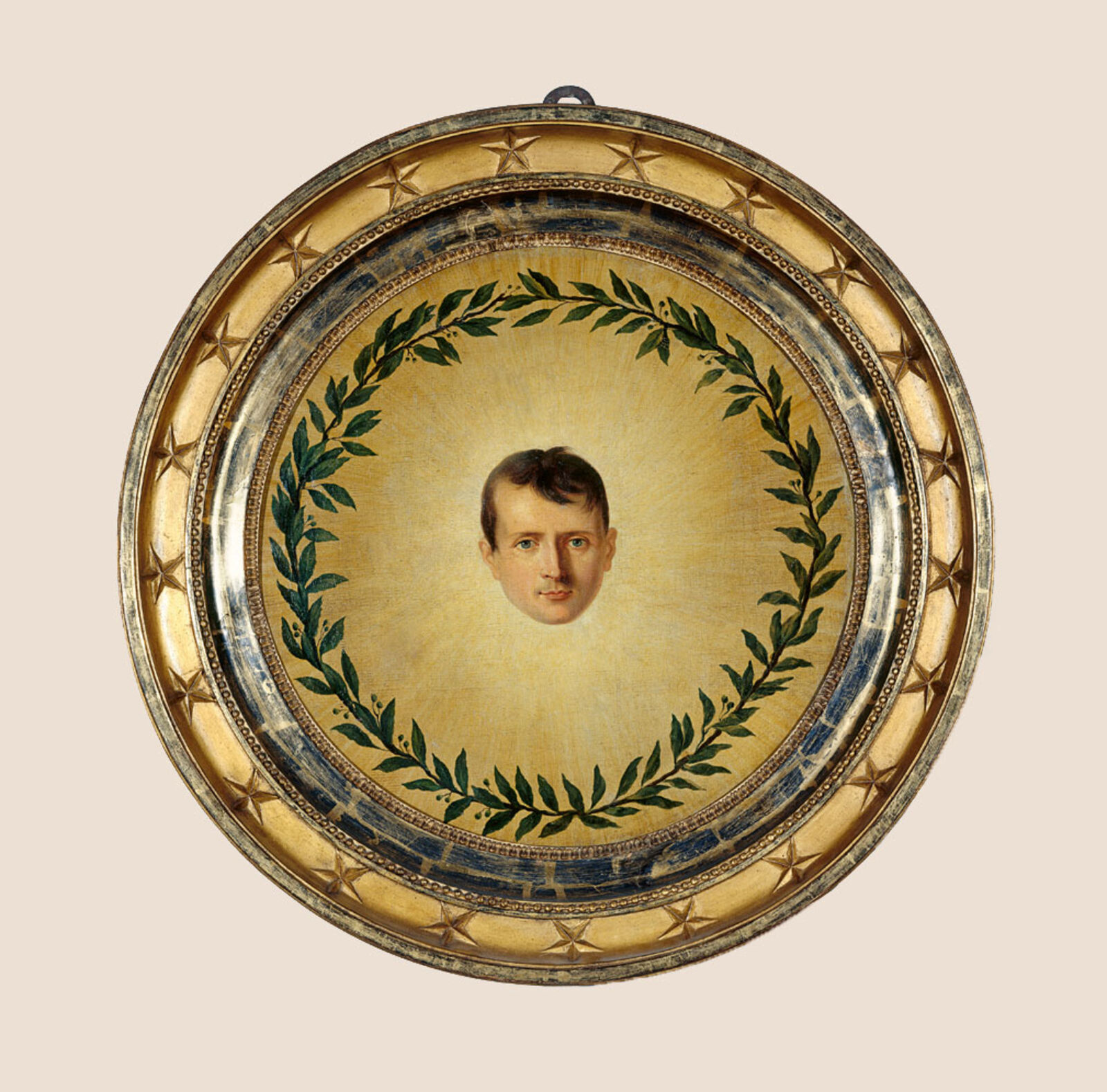
From Alexander the Great to the emperor Napoleon, rulers often identified with the sun and its power. Comparisons of rulers with the sun are documented already in early cultures such as the Hittites or the Egyptian pharaohs. The “Sun King” Louis XIV of France often appeared as Apollo at festivities, costumed accordingly. Augustus the Strong of Saxony imitated him, and Napoleon likewise used the motif of the sun as a propagandistic image to communicate his power.
In my domain the sun does not go down.
Alexander the Great rose to the head of a world empire in the fourth century BCE. This portrait shows him wearing a crown of rays like the sun god Helios. He was cultically venerated even during his lifetime.
Of all European monarchs, none used the solar motif so extensively as Louis XIV of France, the Sun King. The sun rising above a landscape visualizes his all-encompassing claim to power.
Inspired by a visit to Versailles, the elector and king Augustus II of Saxony, also known as Augustus the Strong, appeared in festival parades as the embodiment of the sun. This “sun gem” was used on such occasions to decorate his horse and was mounted on its bridle. The gilded copper, adorned with rock crystal or quartz, reflected the sunlight.
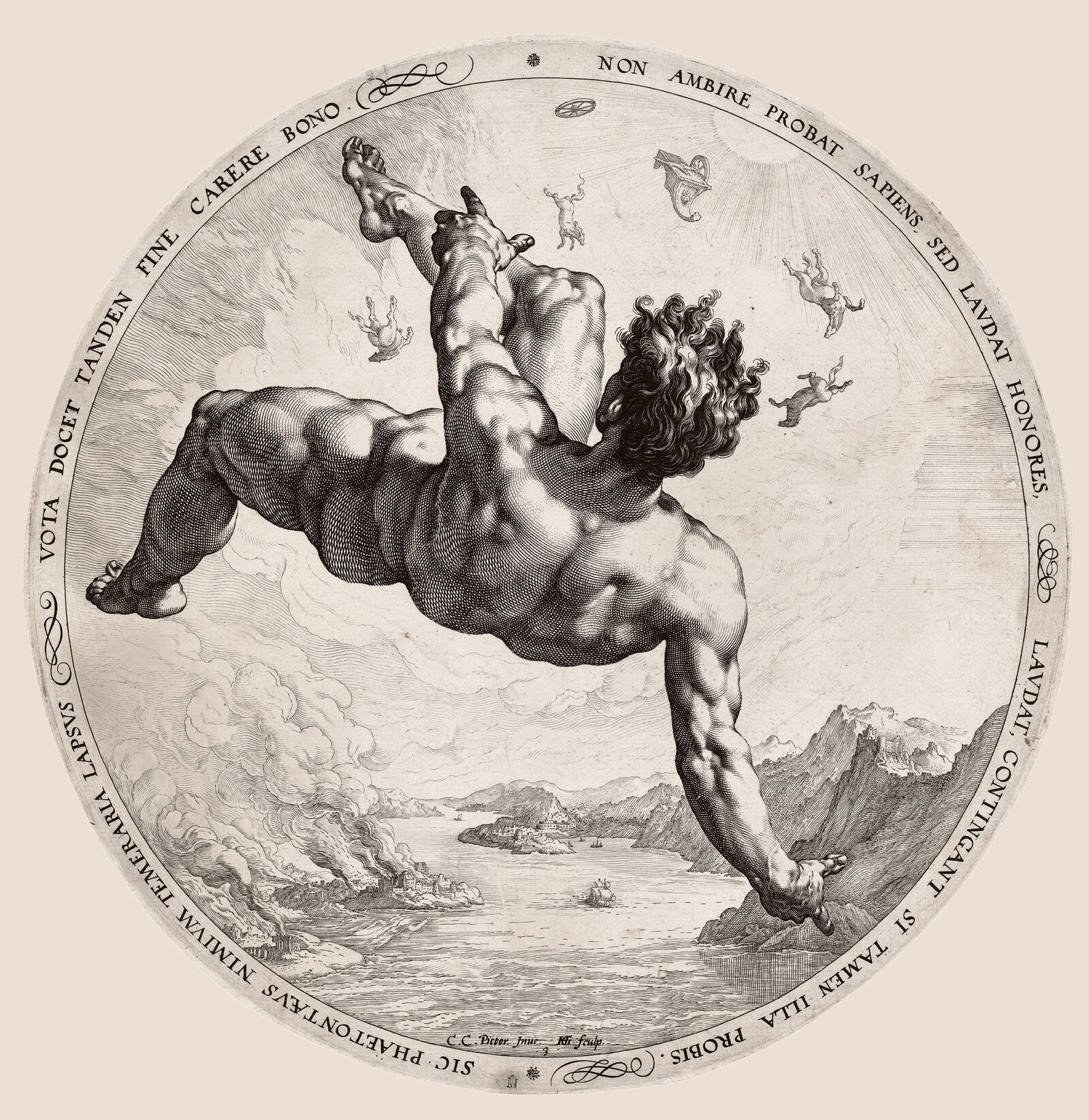

Falling backwards, the muscular Phaëthon plummets from the sky. The engraving focuses on the virtuosic rendering of the falling figure. Both the landscape beneath him and the shattered sun chariot from which he is hurled appear tiny in the distance.
Goltzius van Haarlem: Phaëthon, from the series The Four Disgracers, 1588, Kupferstich-Kabinett, Staatliche Kunstsammlungen Dresden, Image: Herbert Boswank
Two ancient myths tell stories of youthful hubris in which the sun plays a decisive role: the fall of Icarus and the fall of Phaëthon. While the reckless Phaëthon, the son of a god, dramatically failed in his attempt to set the sun’s course, the overconfident Icarus flew too close to the burning star and likewise fell to the depths. The sun was a divine power that was not to be challenged.
His nearness to the devouring sun softened the fragrant wax that held the wings: and the wax melted.
Carlo Saraceni tells the story of Icarus in a dramatic series of three scenes. In the first image, the architect and inventor Daedalus stands at the edge of a cliff with his son Icarus. Their wings, ingeniously fashioned of feathers and wax, will permit them to them escape from the island of Crete. Icarus longs to rise toward the sun, while his father warns him against its burning rays.
Icarus has flown too close to the sun: his hubris becomes his downfall. The sun’s burning rays melt the wax holding his wings together. The horrified Daedalus, gently gliding away, watches as his son plummets to the depths.
The third image in this series of paintings on copper plates shows the tragic conclusion of Icarus’s flight. Daedalus bears his fallen son to the tomb. The glowing sun, a striking presence in both of the other scenes, has now disappeared.
The flight and fall of Icarus are recounted by the Roman writer Ovid, whose Metamorphoses also tells the story of Phaëthon. Phaëthon, the son of the sun god Apollo, convinced his father to allow him to drive the sun chariot for a day. Apollo admonished the daring, foolhardy youth to follow the usual path and keep a tight hold on the reins. Yet his warnings were in vain: the horses broke free of the inexperienced Phaëthon and he lost control of the chariot. Only the intervention of Jupiter, king of the gods, saved the entire world from burning.
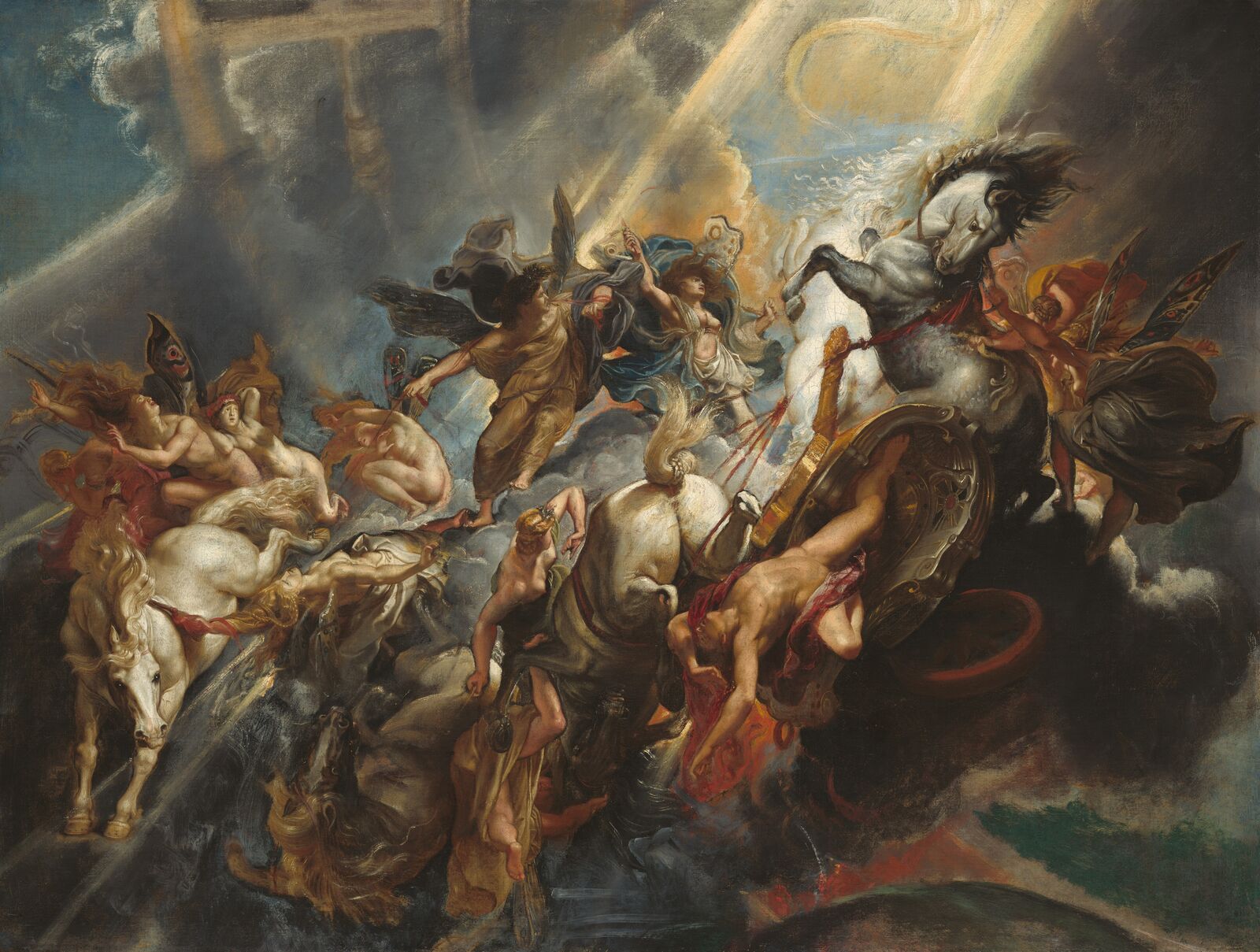
Peter Paul Rubens: The Fall of Phaëthon, 1604/05, 1604–05, probably reworked ca. 1606–08, National Gallery of Art, Washington
On a large-scale canvas, the preeminent Baroque painter Peter Paul Rubens shows the dramatic climax of the Phaëthon myth. Dazzling rays of light represent Jupiter, the father of the gods, halting the wild careening of the sun chariot.
In the conceptual world of the ancient Greeks, the sun was not only a creative force and symbol of life, but also the most visible element of the cosmic order. This order placed limits on human action, and whoever transgressed them was at the mercy of avenging fate.
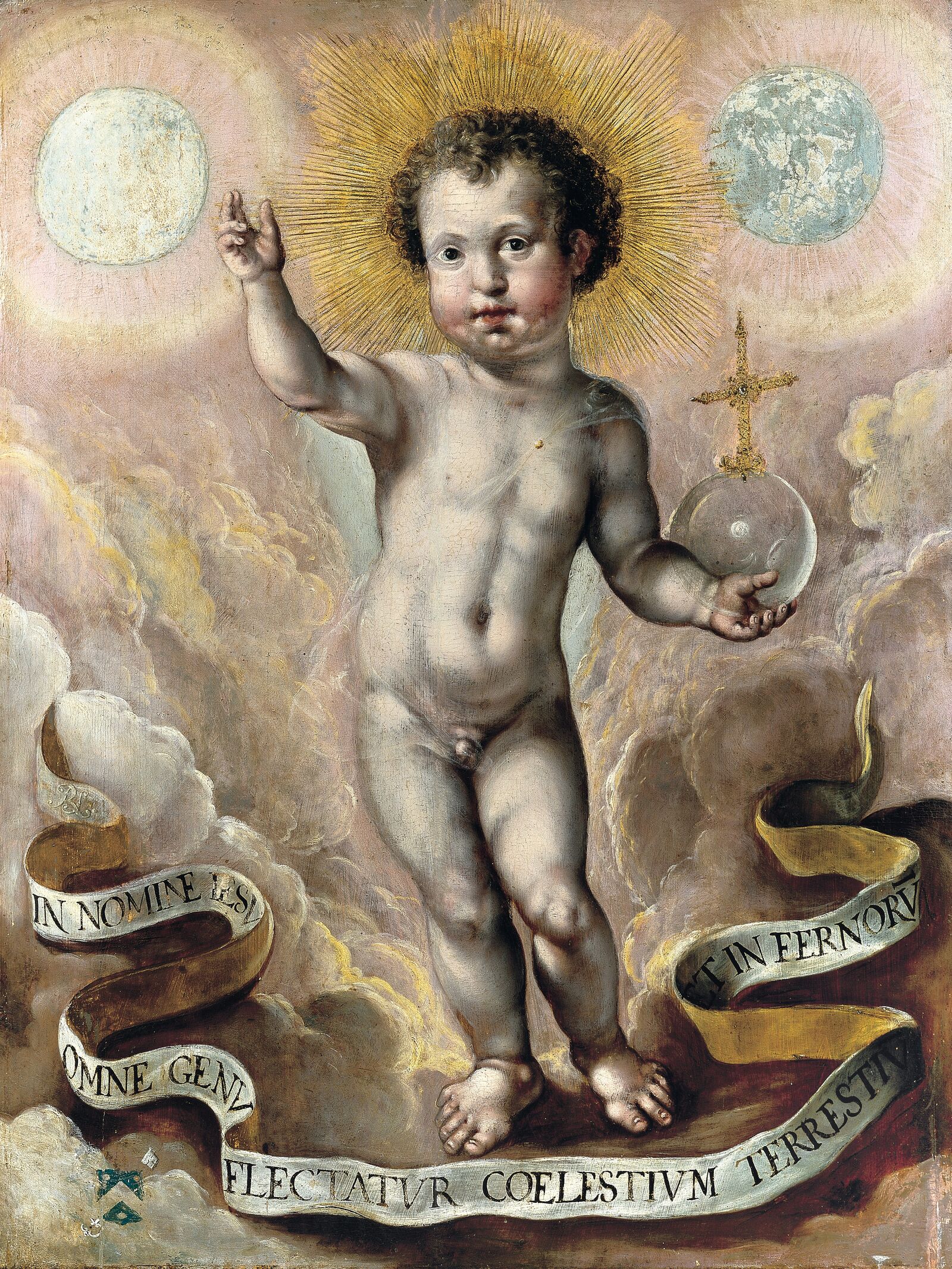

The blessing Christ Child of Flemish Baroque painter Maarten de Vos appears as a radiant bringer of light. The rays of the sun around his head and the pink-tinted clouds herald the promise of a new day. Christian art adopted many motifs from ancient images of the sun god.
Maarten de Vos: Blessing Christ in Aureole, last quarter of sixteenth century, Städtische Sammlung Aachen, Suermondt-Ludwig-Museum, Image: Anne Gold, Aachen
With the rise of Christianity came a change in the conception of the sun. The Old Testament describes the sun as an element of Creation fashioned by God. Its purpose is to give light to the world by day and define the seasons. It illumines the earth and marks time, while also proclaiming the glory of God. Christian images of the Creation story reflect this understanding.
In the beginning God created the heaven and the earth. (…) And God said, Let there be light: and there was light.(…) And God made two great lights; the greater light to rule the day, and the lesser light to rule the night: he made the stars also.
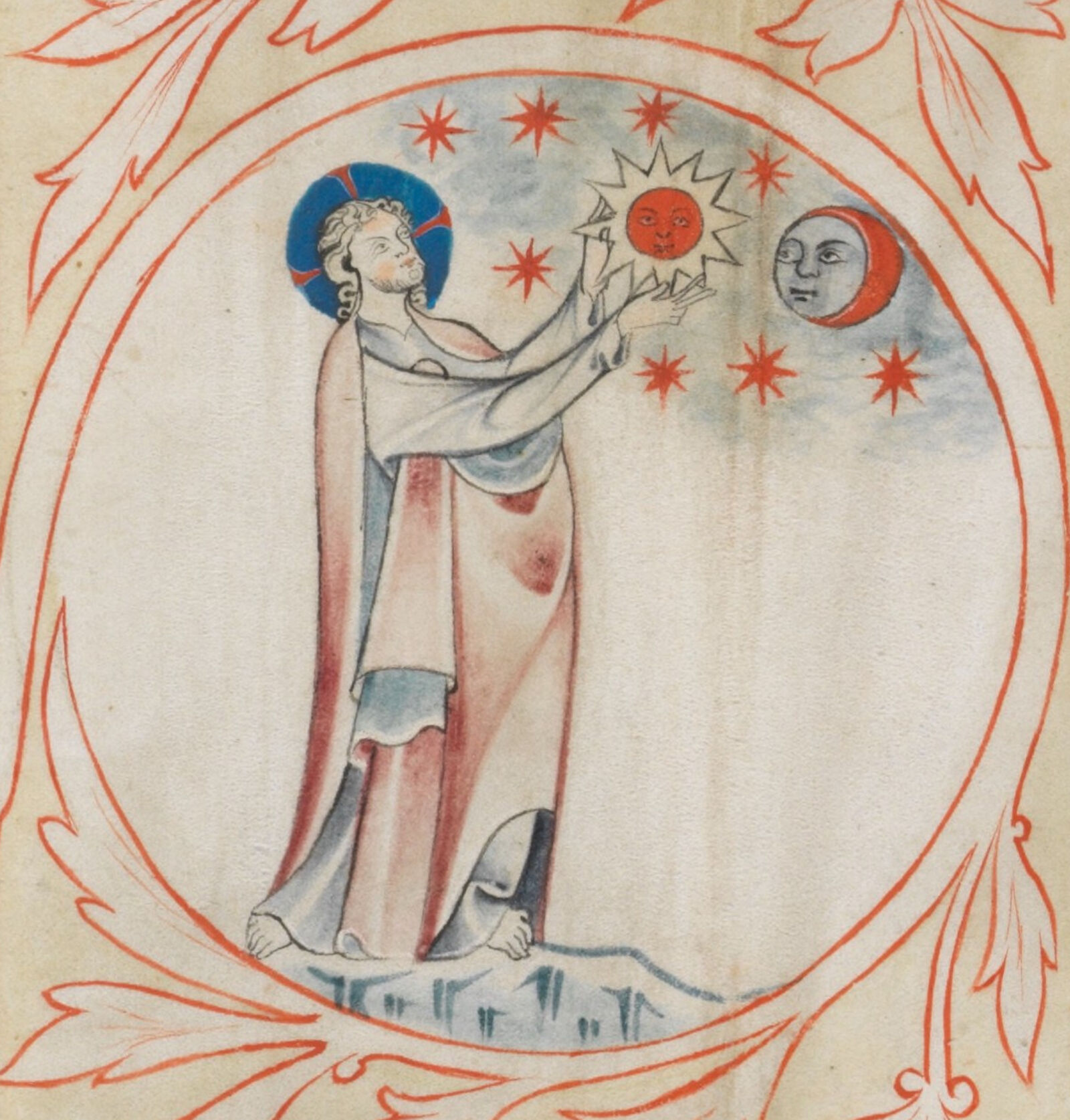
Southwestern Germany (Lake Constance region): The Creation (Detail), in: Biblia Sacra, 1300-1325, Stadtbibliothek Schaffhausen, Ministerialbibliothek
This Bible illumination shows the Creator of the universe making the sun, moon, and stars. The standing figure of God releases the shining sun into the heavens as a source of light, placing it there with his own hands.
In contrast to the ancient Greek view, in Christianity the sun is not divine and is no longer understood as an autonomous power. Yet it still plays an important role at a decisive moment in the New Testament. Early images of the Crucifixion show the sun in the sky: as a witness to the action, it emphasizes the cosmic significance of the event. The Gospel of Luke reports that at the death of Christ, the sun was darkened.
Now it was about the sixth hour, and there was darkness over all the earth until the ninth hour. Then the sun was darkened.
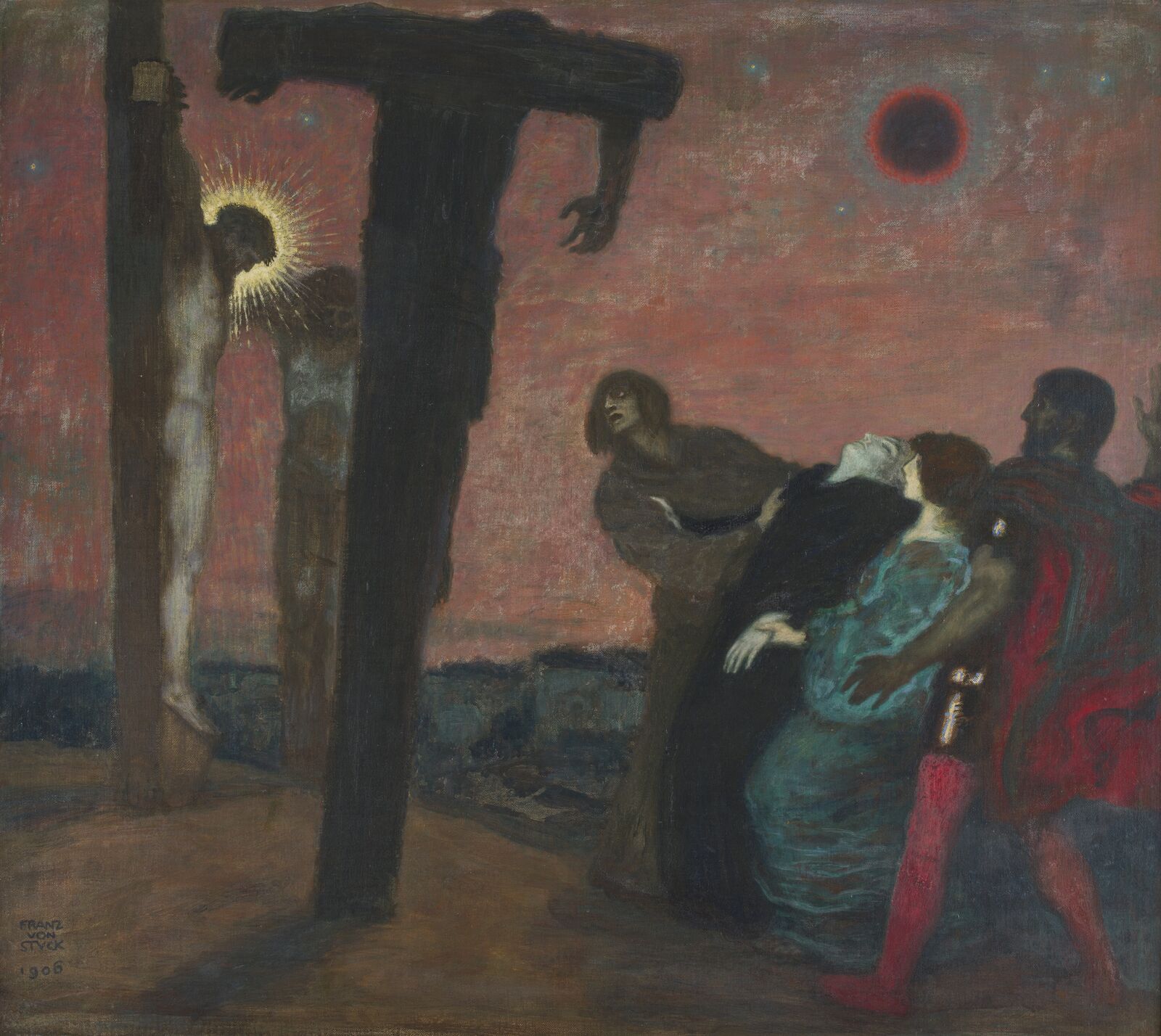
Franz von Stuck: Crucification, 1906, National Museum in Poznań
The glowing halo of the crucified Christ shines brighter than the rest of the scene, which is rendered in somber tones. The Symbolist painter Franz von Stuck creates an intensely eerie atmosphere in his unusual image of Christ’s terrible death on the cross.
From a scientific perspective, the biblical account of the darkening of the sun at the Crucifixion as recorded in the Gospel of Luke can only be read as a solar eclipse. Here the sun itself responds to the Passion of Christ, lamenting his death. This theme already appears in medieval images, which show the sun’s cosmic participation as a witness.
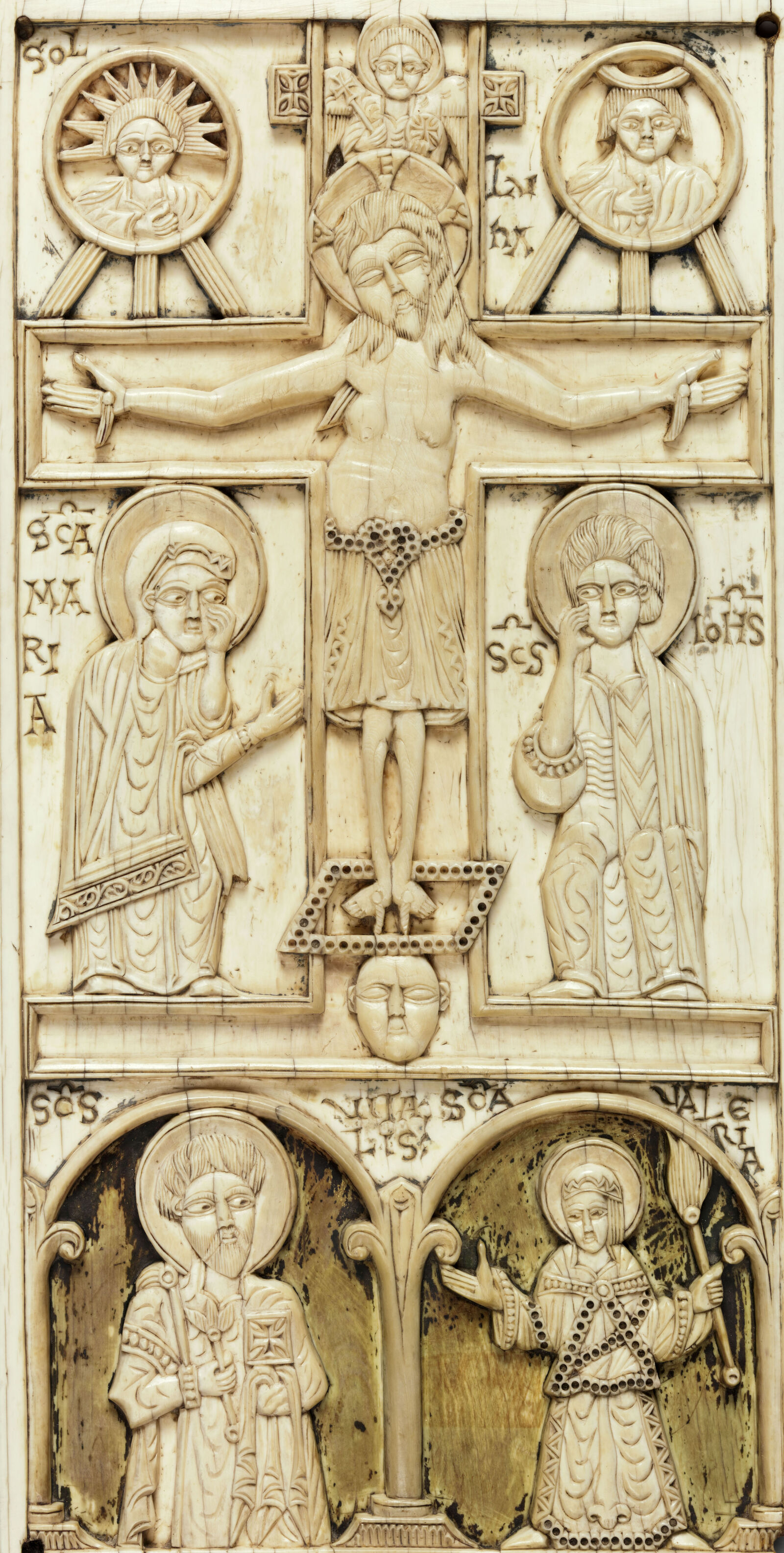
Venetian: Crucifixion, late eleventh–early twelfth century, Musée de Cluny - Musée national du Moyen Âge, Paris
© bpk / RMN - Grand Palais / Michel Urtado
This small ivory panel from Venice, created around 1200, was originally set into the cover of a manuscript. It shows the sun and the moon to the right and left of Christ, above the horizontal beam of the cross.
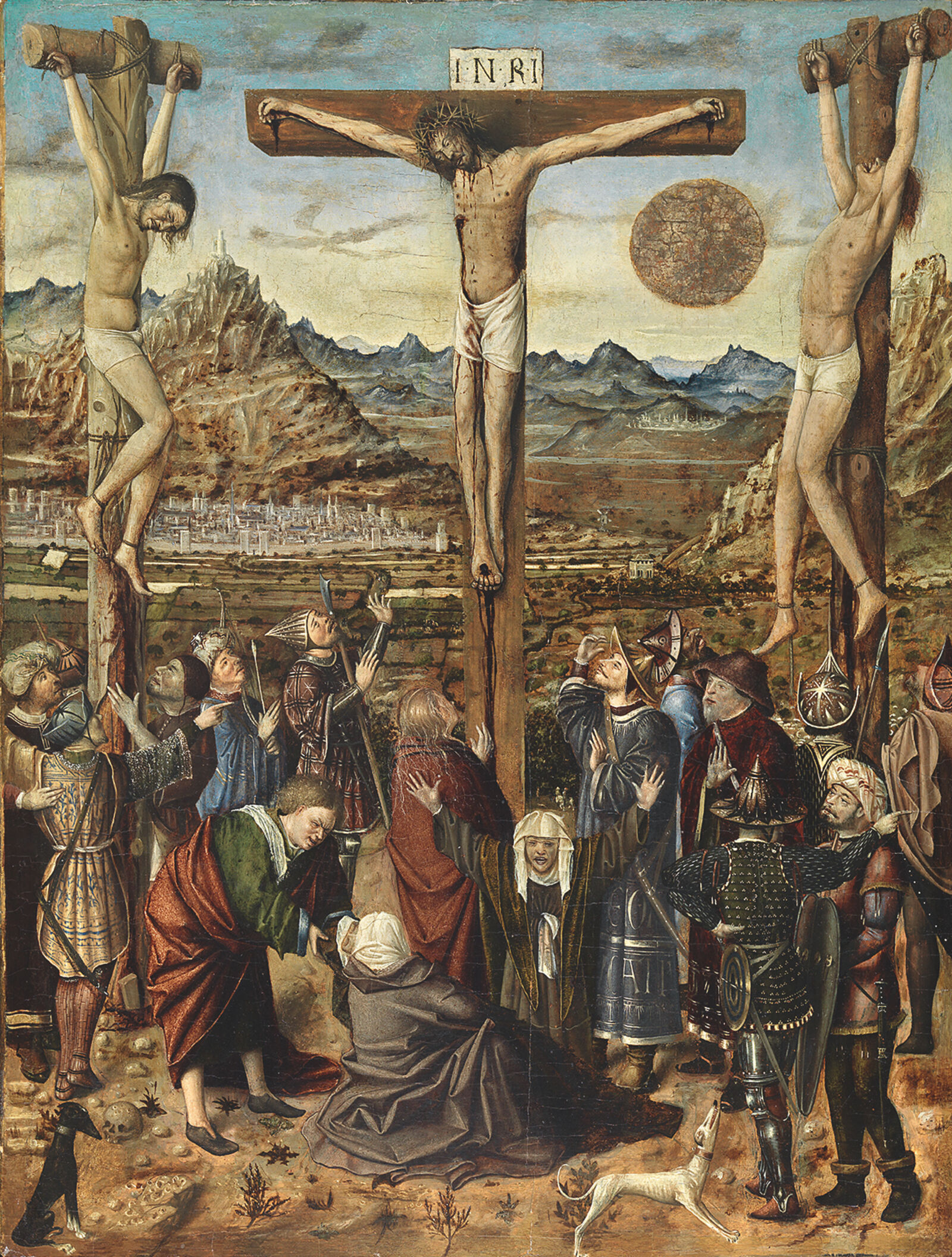
Valencia (?): Crucifixion, 1450-1460, Museo Nacional Thyssen-Bornemisza, Madrid
The unknown master depicts the sun as a dark golden disk, positioned low in the sky. It, too, witnesses the event.
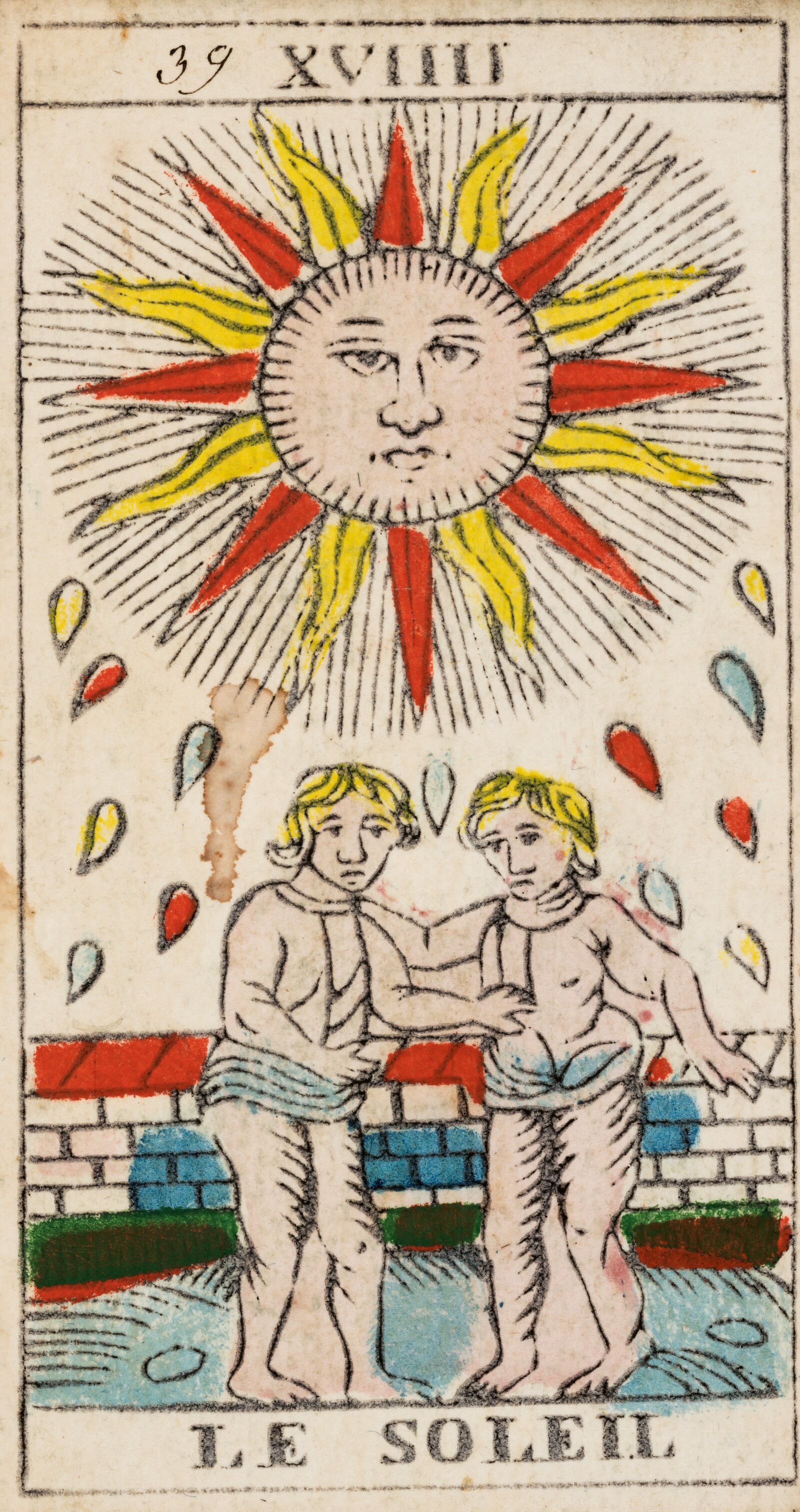

The colored woodcut is the trump card of the sun from the game of tarot. In esoteric thought, tarot cards are used for divination, and the traditional iconography of the cards is interpreted as foretelling one’s fate.
Bernardin Suzanne: The Sun, Marseille Tarot, 1835, Musée Français de la Carte à Jouer, Issy-les-Moulineaux
Whether in astrology or alchemy, from the high cultures of antiquity to the early modern period the sun was believed to possess mysterious power. In astrological thought, the sun—along with Saturn, Jupiter, Mars, Mercury, Venus, and Luna—was numbered among the seven planets defined by the ancient philosopher Aristotle.
Observed from the earth, these stars regularly change their position in the sky. The concept of the “planet children” explained the influence of these celestial bodies on earth’s inhabitants: it was believed that their qualities shaped the character of those born under their sign. The children of the sun were viewed as active, musical, and pious; their zodiac sign was Leo.
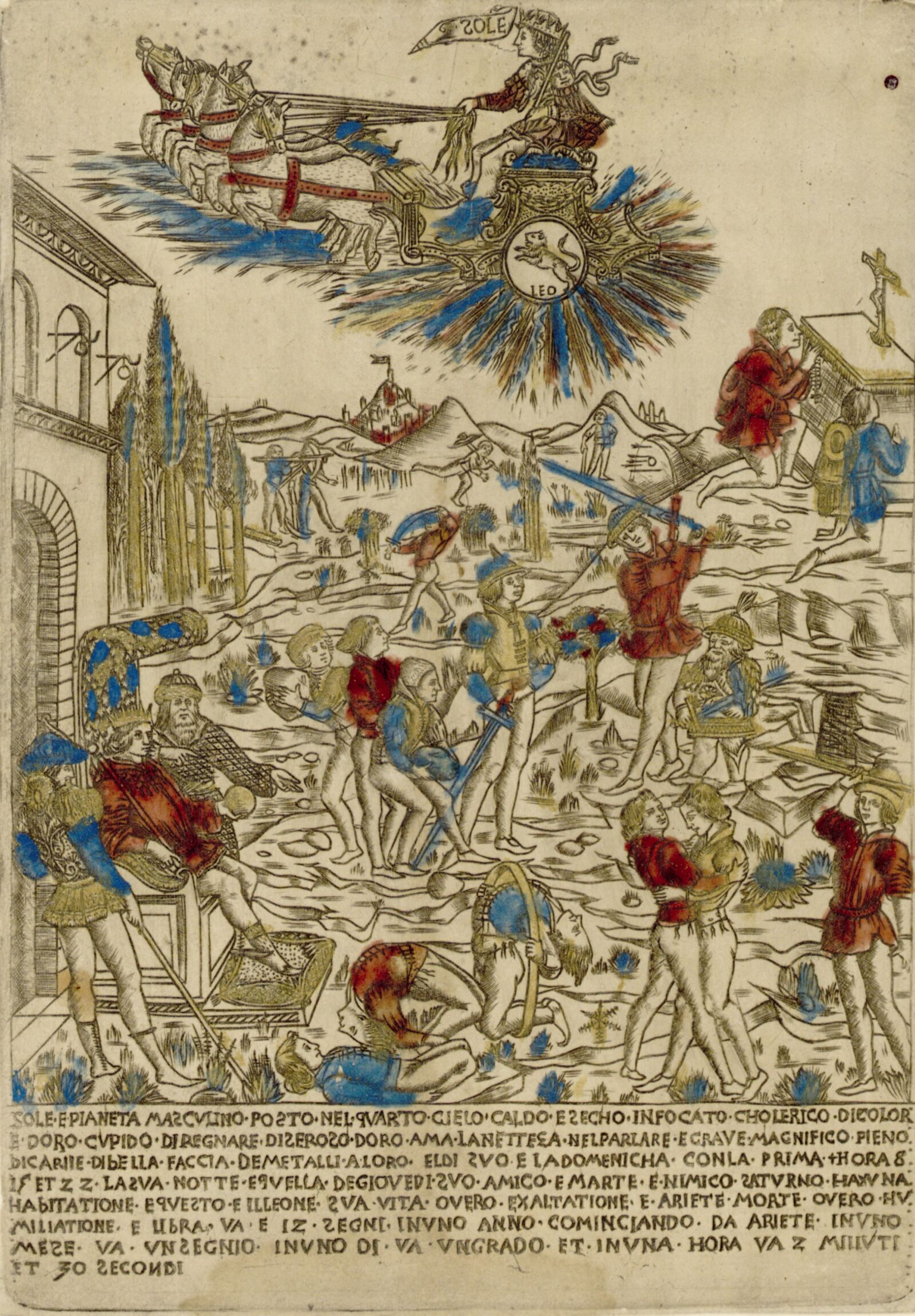
Florentine, Fine Manner: Sol, from the series The Planets, 1464/1465, Albertina, Wien
In der mittelalterlichen Alchemie war die Suche nach dem Stein der Weisen das höchste Ziel. Das Augenmerk richtete sich dabei auch auf die Herstellung von Gold. Die Alchemisten verbanden dieses wertvollste aller Metalle mit der glänzenden Sonne. Ihr machtvolles Wirken sollte das Gelingen der alchemistischen Bestrebungen befördern.
Die Kraft und der Geist der Sonnen machen lebendig, und das geschieht auf siebenfältige Weise und Wirkung der Sonnenhitze.
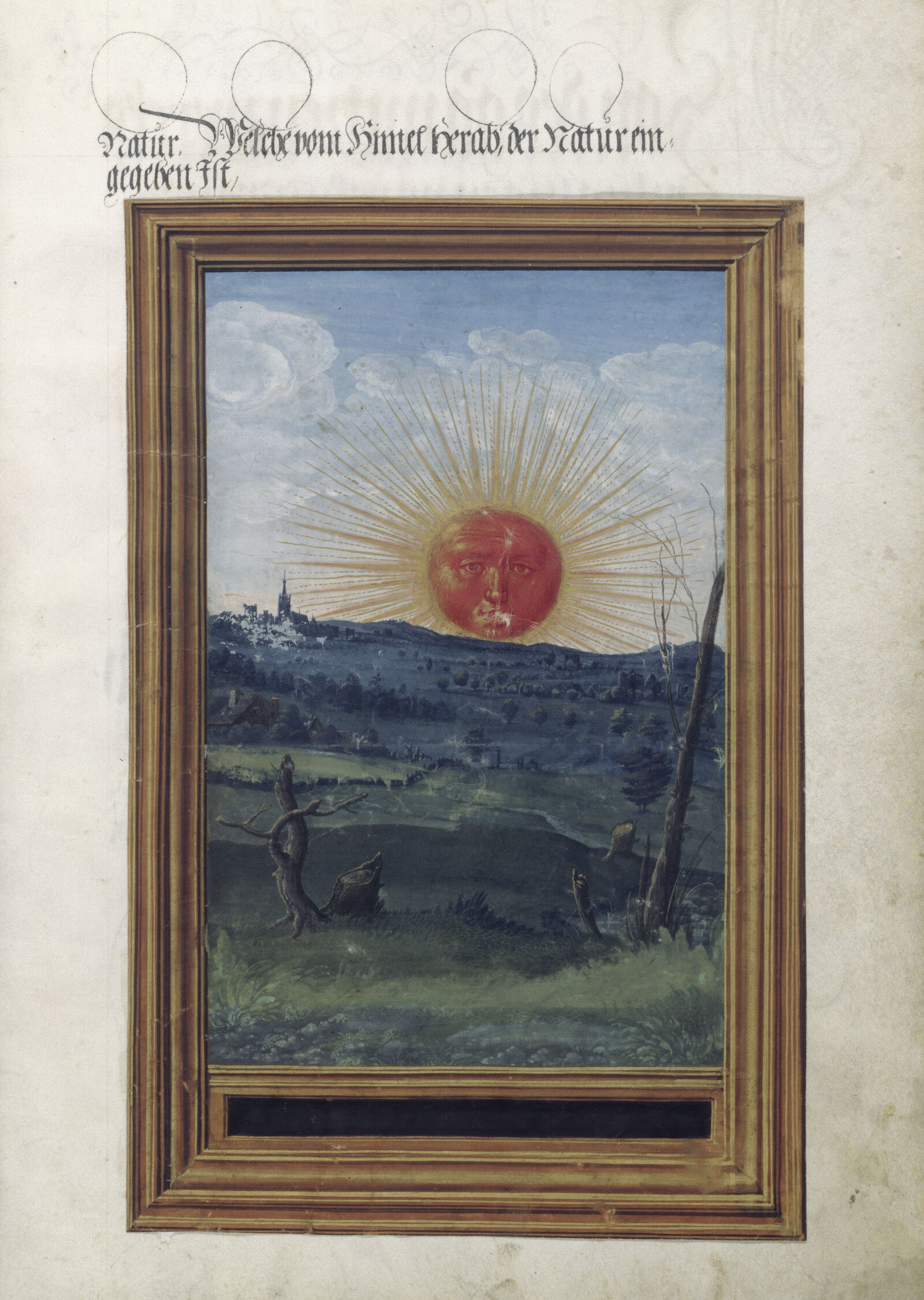
Jörg Breu the Elder (1475/80–1537), attributed: Red Sun, in Anonymous: Splendor of the Sun: Seven Treatises on the Philosophers’ Stone, 1531/32, Staatliche Museen zu Berlin, Kupferstichkabinett
© bpk / Kupferstichkabinett, SMB / Jörg P. Anders
Im Tarock-Kartenspiel des 15. Jahrhunderts ist die Sonne einer der Trümpfe. Das Stichkartenblatt kursierte in Europa in zahlreichen Varianten. Mit seinem vielschichtigen Symbolgehalt gilt das Tarock (auch Tarot genannt) Esoterikern als eine ägyptische Geheimlehre. In dieser spirituellen Lesart steht die Trumpfkarte der Sonne für Aktivität, Energie, Lebensfreude und Körperlichkeit. Die Macht des Sonnengestirns kommt in den künstlerisch gestalteten Bildkarten ausdrucksstark zur Anschauung.
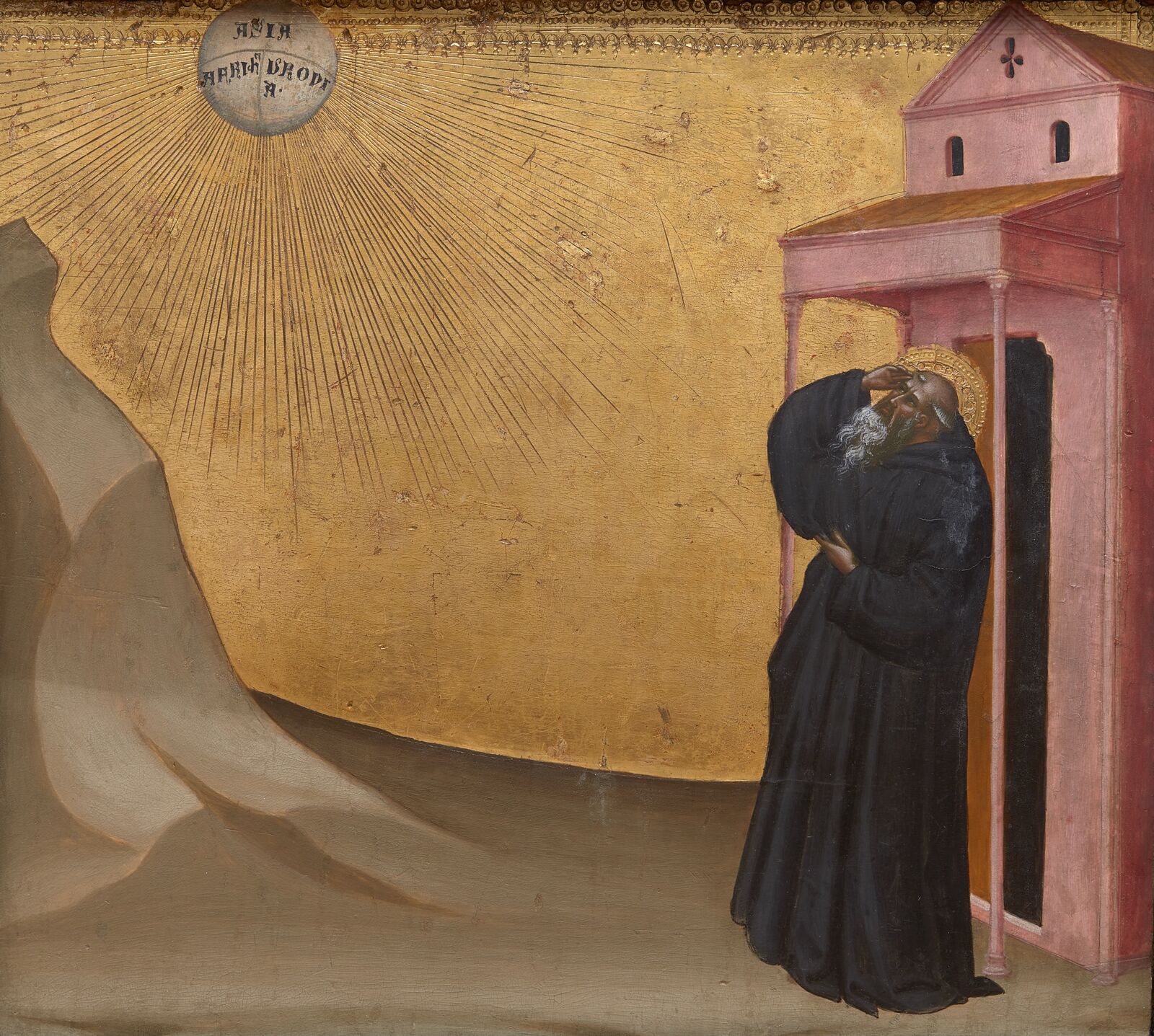

Giovanni del Biondo: Vision of St. Benedict, late fourteenth century, AGO Art Gallery of Ontario, Toronto, Gift of A. L. Koppel, 1953
Wer seine Wahrnehmung auf die Sonne richtet, tritt mit dem Kosmos in Dialog. Durch die unmittelbar empfundene Wirkung der Sonne begreift sich der einzelne Mensch als Teil des Weltganzen. Diese Beziehung erfassten Künstler:innen bildlich in der Hinwendung zur Sonne. Gesten und Blicke sind dabei kommunikative Handlungen. Mit ihnen antwortet das Individuum auf die fühlbare Energie der Wärme und des Lichts. Dies konnte im christlichen Mittelalter als Vision und Erleuchtung erfahren werden. In der Gegenwartskunst greifen Installationen die ganzheitliche und körperliche Erfahrung der solaren Lichtwirkung auf.
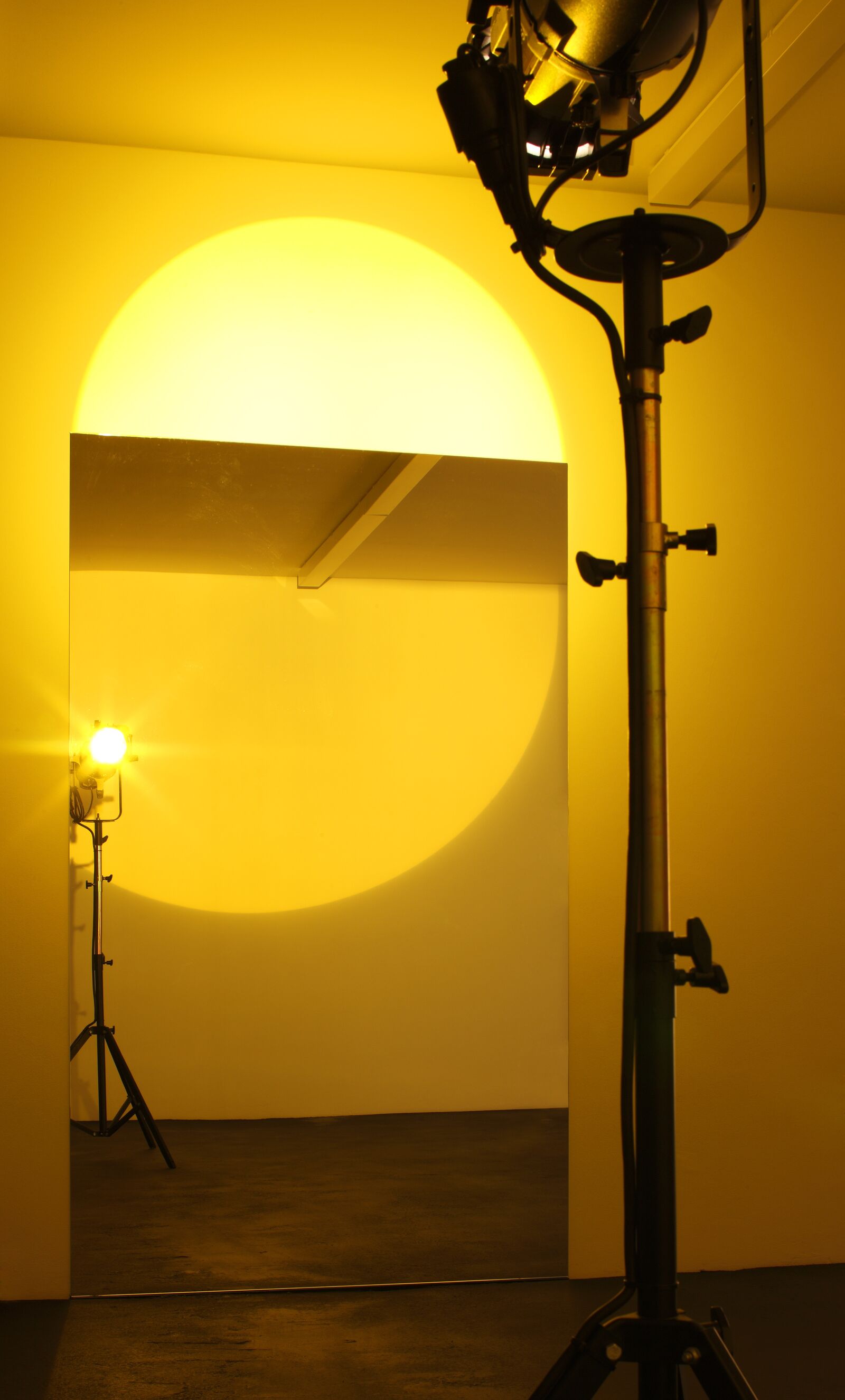
Olafur Eliasson: Yellow door semicircle, 2008, Olafur Eliasson, 2008; photo: Jens Ziehe, courtesy of the artist; neugerriemschneider, Berlin; Tanya Bonakdar Gallery, New York / Los Angeles
Die Maler der Romantik schufen spirituell aufgeladene Landschaftsgemälde, in denen die Sonne als Kristallisationspunkt für die Präsenz des Göttlichen steht. Die unmittelbare Erfahrung der Sonne in der Natur kann hierbei als Offenbarung des Transzendenten erlebt werden.
Lyrischer Ausdruck der kosmischen Verbundenheit mit dem Weltganzen ist der „Sonnengesang“ des Franz von Assisi. Die hymnische Dichtung aus dem 13. Jahrhundert inspirierte zahlreiche Künstler bis in die Moderne, darunter auch Joan Miró, der den „Cantico di frate Sole“ (Gesang vom Bruder Sonne) in seine abstrahierende Zeichensprache umsetzte.
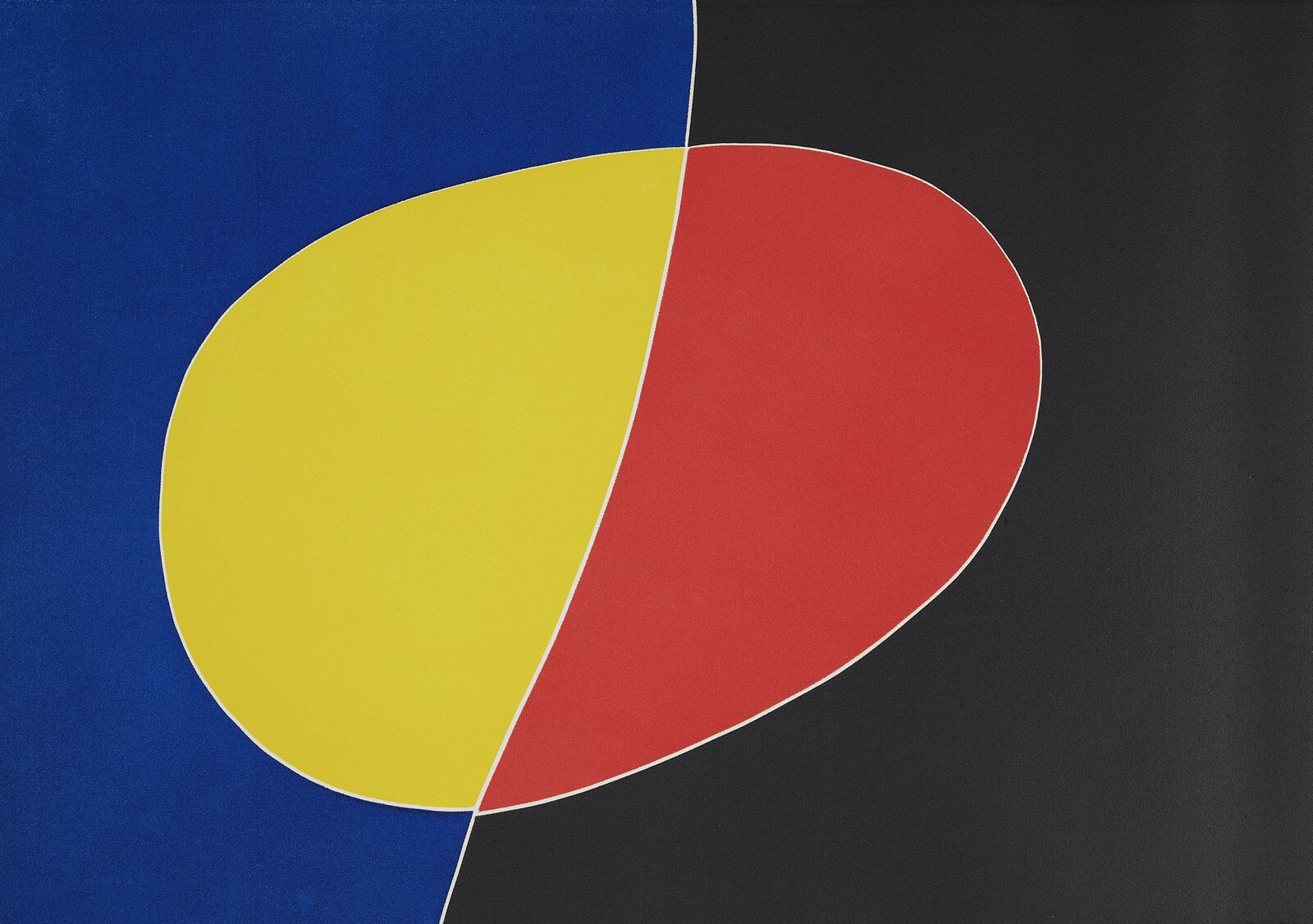
Der „Sonnengesang“ des Franz von Assisi ist ein klares und einfaches Gedicht. Der 1225 geschriebene Text drückt eine allumfassende Vision der Schöpfung aus. Von allen Wesen nennt Franziskus zuerst den „Bruder Sonne“, bevor er „Schwester Mond“ und danach die vier Elemente – Luft, Wasser, Feuer und Erde – anführt.
Wenn am Morgen die Sonne aufgeht, sollte jeglicher Mensch Gott loben, der sie zu unserem Nutzen geschaffen hat. Denn ihr verdanken wir, daß unsere Augen den hellen Tag sehen.
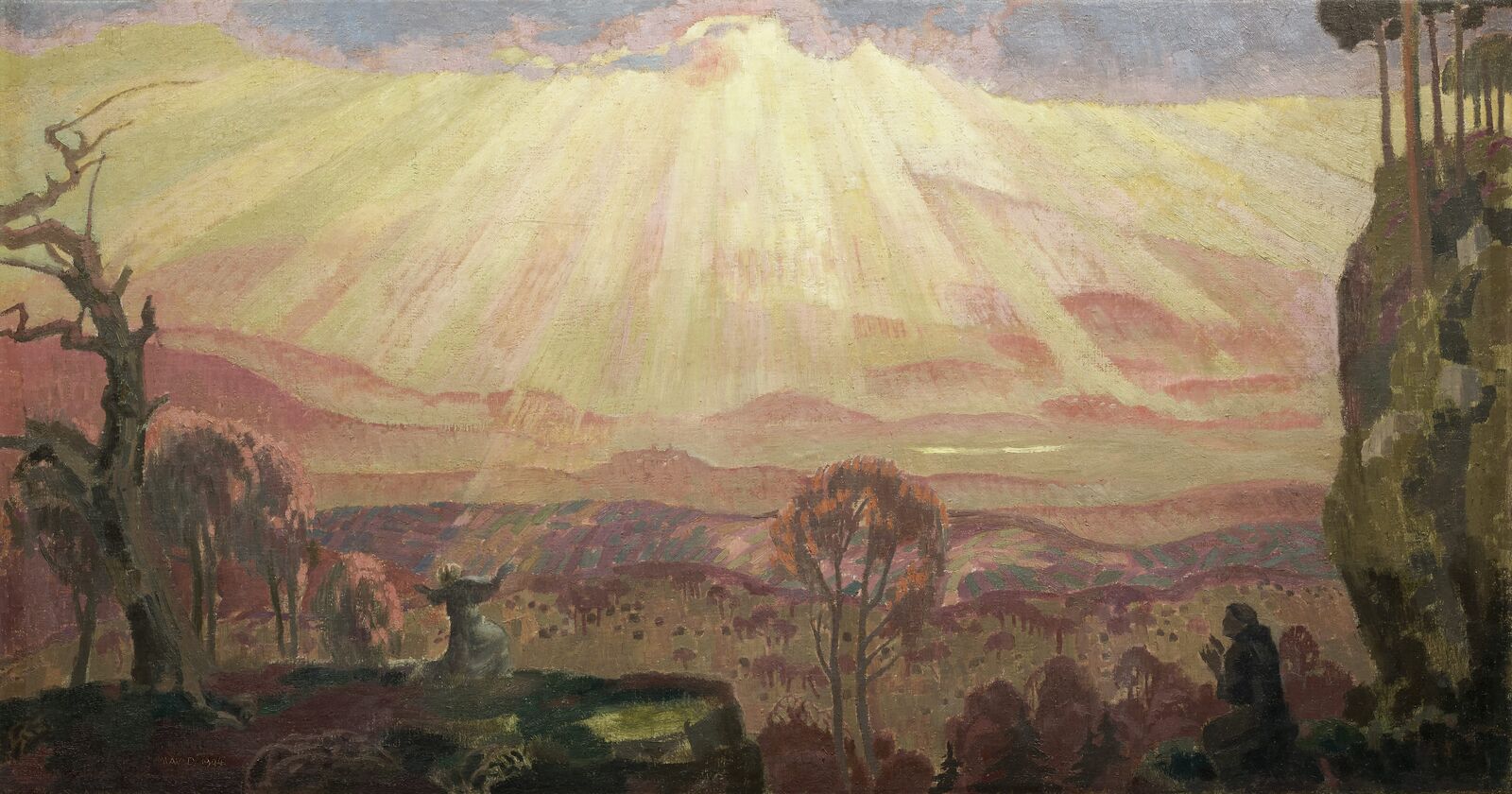
Maurice Denis: St. Francis Receiving the Stigmata, 1904, Privatsammlung, © Image: Studio Christian Baraja SLB
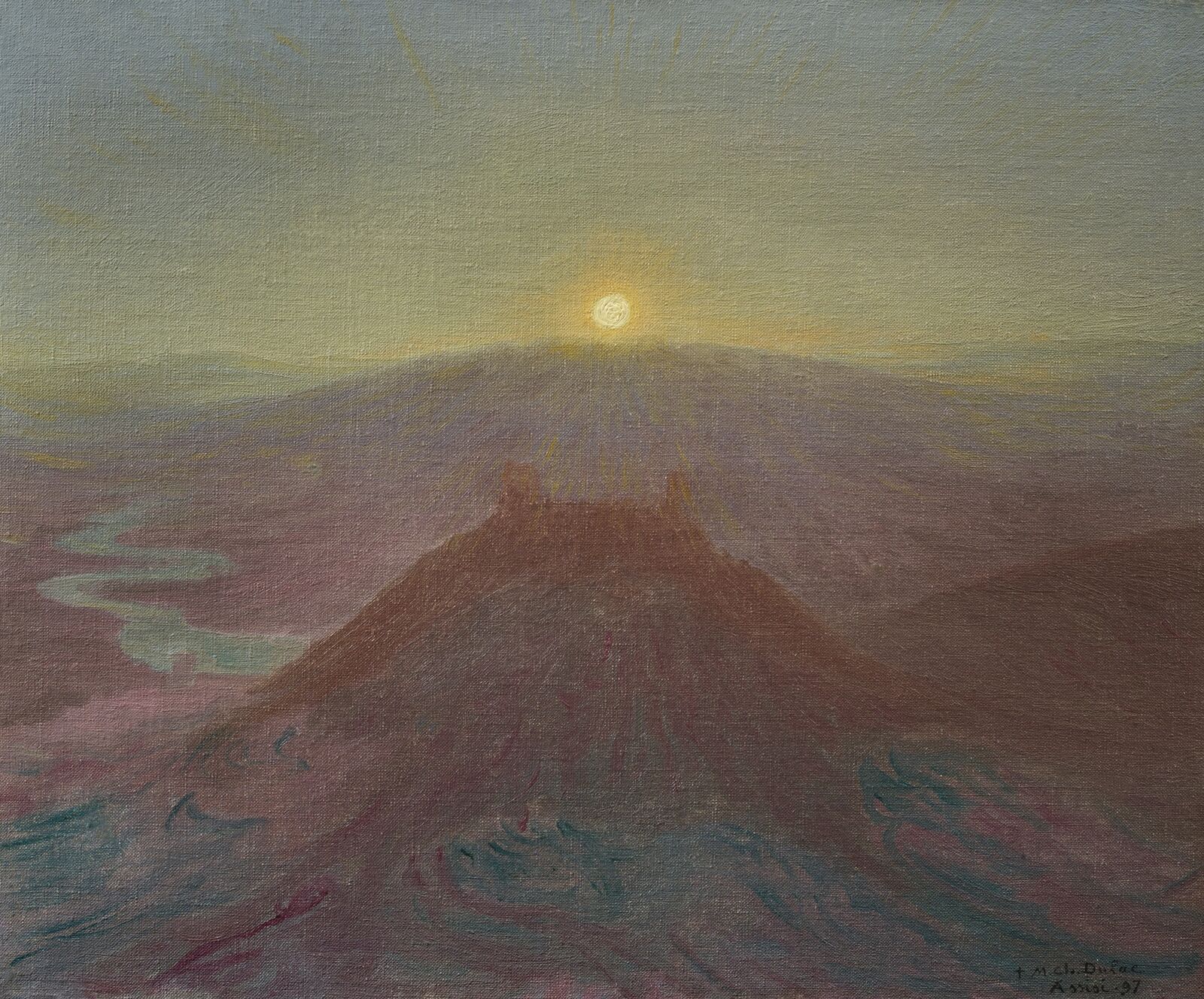
Charles-Marie Dulac: Sunrise in Assisi, 1897, © Lucile Audouy Collection, Image: : Thomas Hennocque
Dieses Land, ganz kahl, ohne Bäume, voller Steigungen, die uns überall den Horizont und die Sonne zeigen, ist gut geeignet, um mit dem heiligen Franziskus das Lied ‚Mein Bruder, die Sonne‘ zu singen.
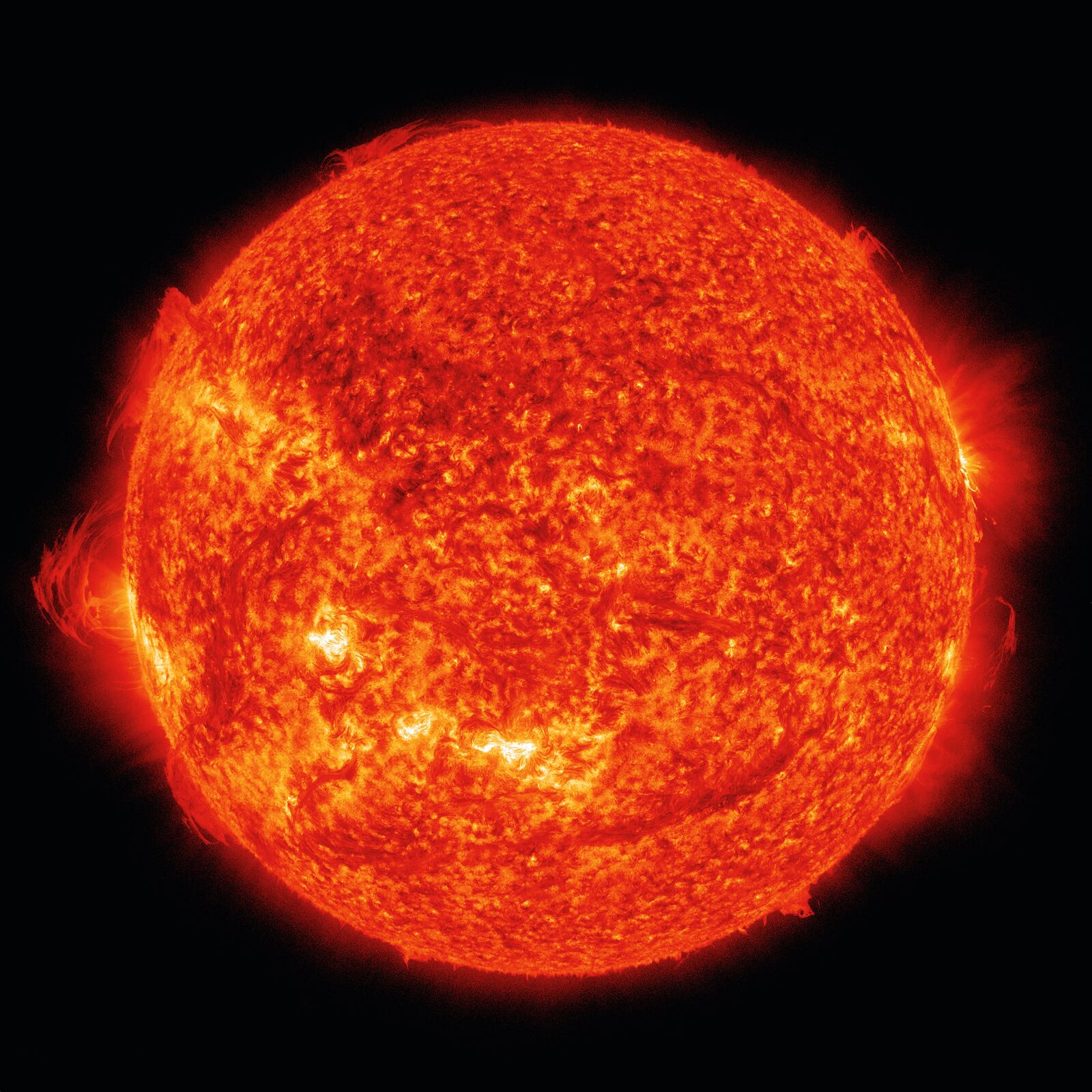

Katharina Sieverding: WATCHING THE SUN AT MIDNIGHT (RED), SDO/NASA, 2011-2014, Privatsammlung, © VG Bild-Kunst, Bonn 2023, Abbildung: Klaus Mettig
Seit jeher wurde die Sonne nicht nur religiös verehrt, sondern war als Himmelskörper auch Gegenstand aufmerksam forschender Beobachtung. Schon in der Antike untersuchten Astronomen ihre Position im Weltall und ihren Einfluss auf die Jahreszeiten. Man erforschte die regelmäßigen Veränderungen im Laufe des Sonnenjahres, wie die Länge der Tage. Aber auch gelegentliche Abweichungen im Erscheinungsbild der Sonne wurden aufmerksam registriert.
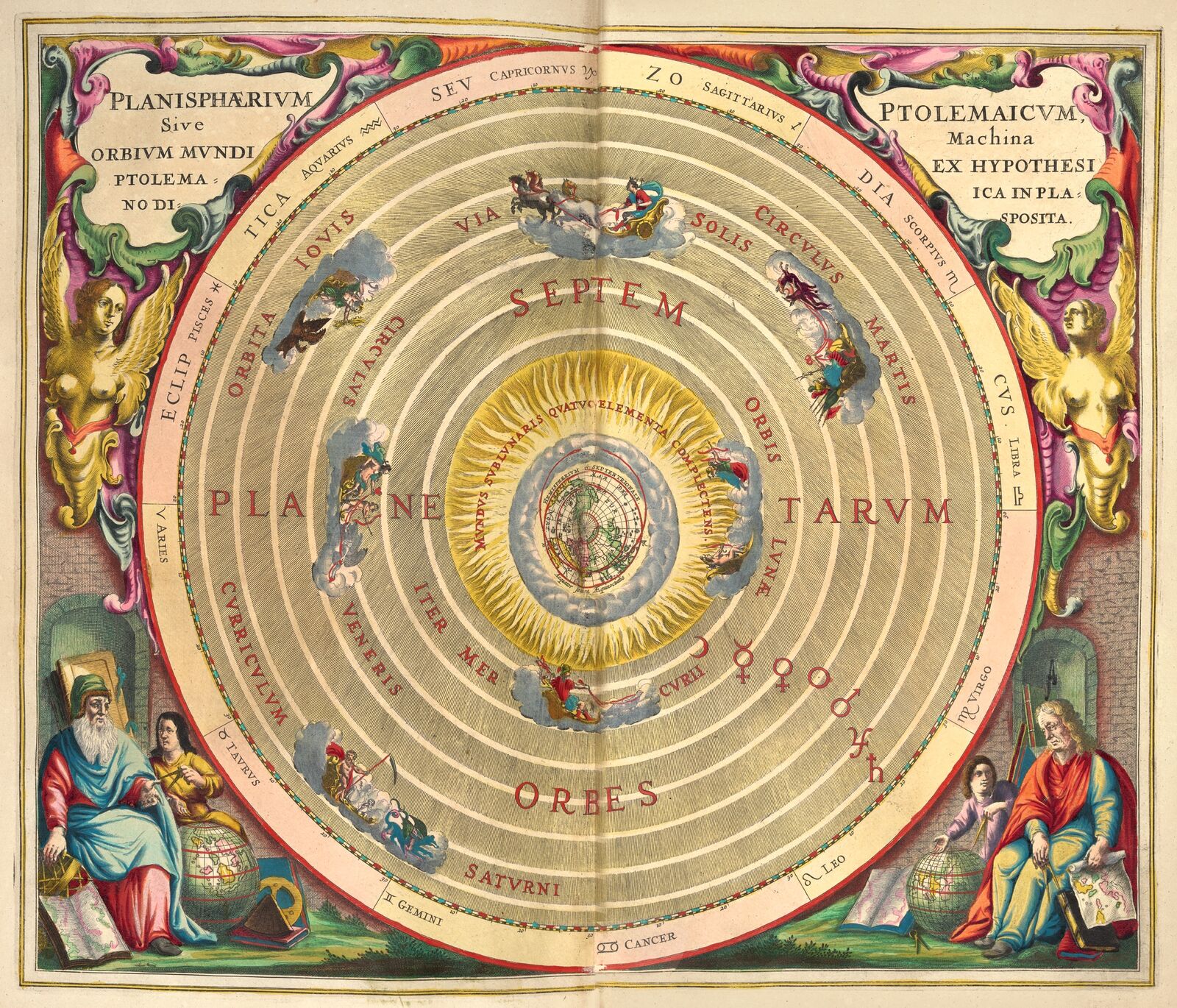
Niederländisch: Planisphaerium Ptolomaicum (Ptolemaic Planisphere), in: Andreas Cellarius (1596–1665): Harmonia Macrocosmica Seu Atlas Universalis Et Novus (Harmony of the Cosmos or Universal and New Atlas), Amsterdam 1661, plate 1, Amsterdam 1661, Tafel 1, Herzog August Bibliothek Wolfenbüttel: A: C Astron. 2°
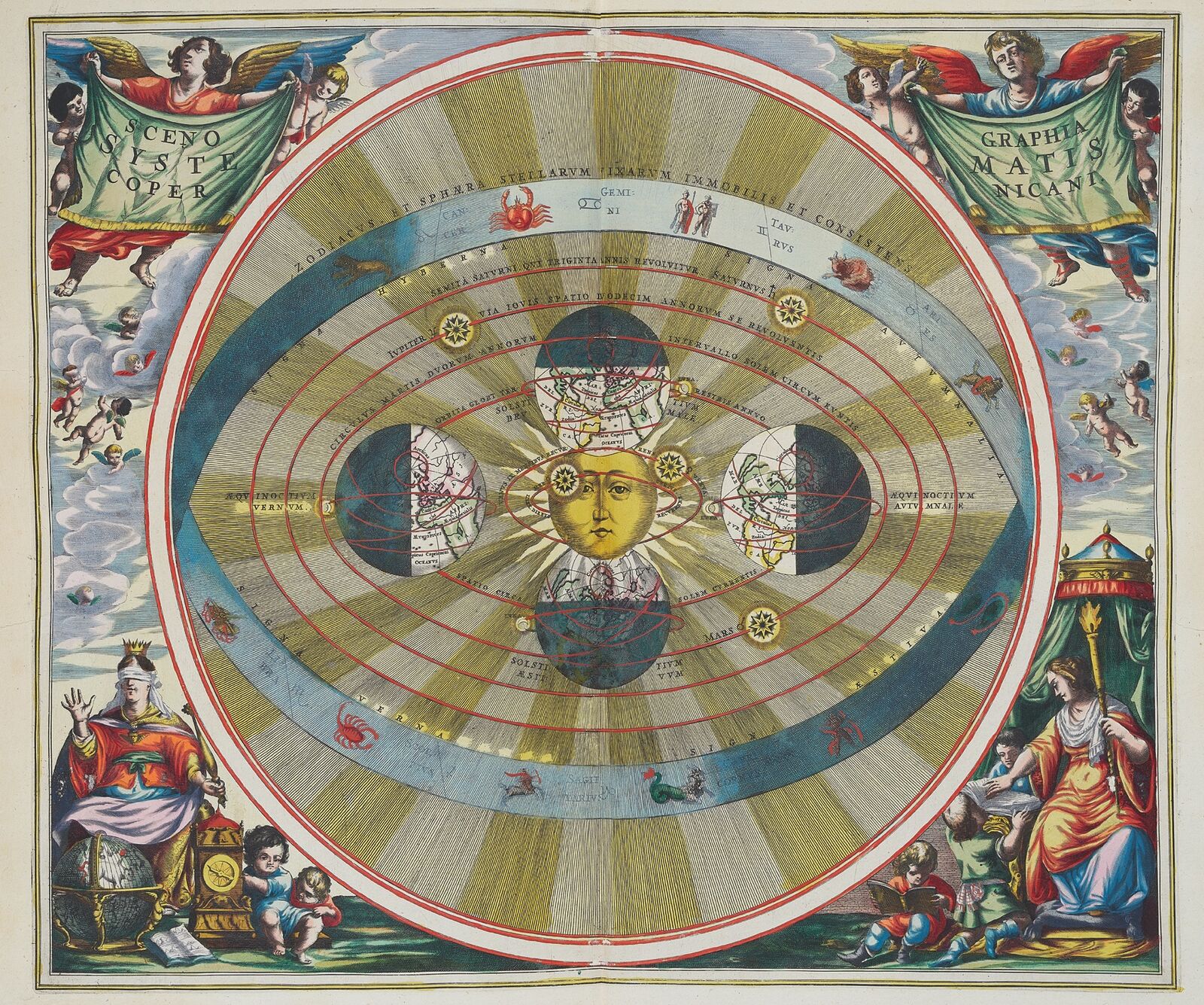
Netherlandish: Scenographia systematis Copernicani (Illustration of the Copernican System), in: Andreas Cellarius (ca. 1596–1665): Harmonia Macrocosmica Seu Atlas Universalis Et Novus (Harmony of the Cosmos or Universal and New Atlas), Amsterdam 1661, plate 5, Herzog August Bibliothek Wolfenbüttel: Ne 2° 10
do verfinstert sich die So
der Mon erpleichet
Kosmische Phänomene wie Sonnenfinsternisse, Sonnenflecken oder Nebensonnen galten bis ins 16. Jahrhundert als böses Omen oder Wunderzeichen Gottes. Seit dem 19. Jahrhundert ermöglichten verbesserte Teleskope den Astronomen eine genauere Kenntnis des leuchtenden Himmelskörpers. Sie untersuchten nun auch die physikalischen Eigenschaften der Sonne und dokumentierten die Dynamik ihrer Oberfläche. Astronomische Photographien oder Zeichnungen hielten etwa die Eruptionen von Materieströmen auf der Sonne fest.
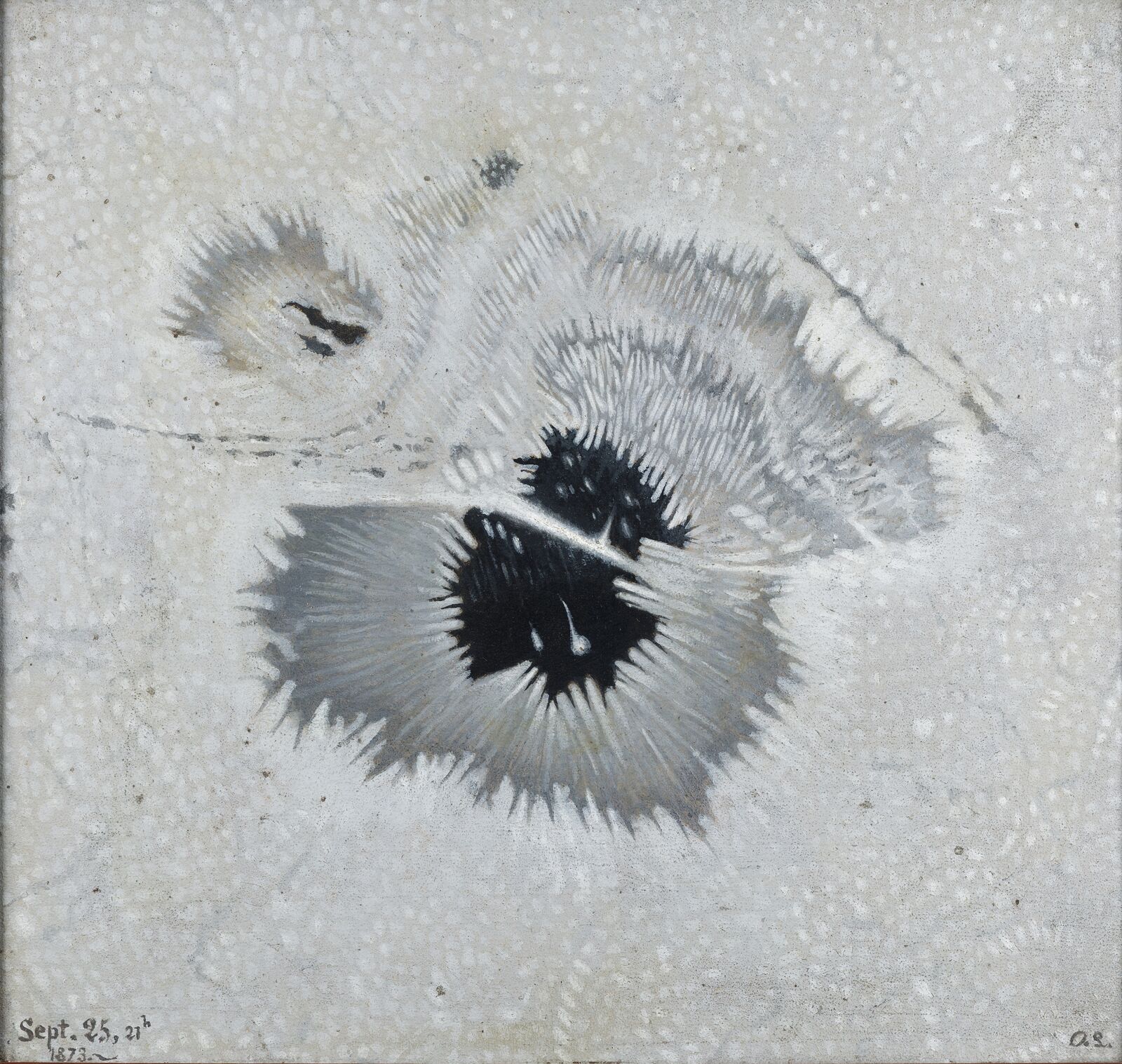
Wilhelm Oswald Lohse: Sunspots, September 25, 1873, 9 p.m., 1873
©Leibniz-Institut für Astrophysik Potsdam (AIP), Image: Thomas Spikermann
Die zu wissenschaftlichen Zwecken entstandenen Bilder besitzen oft auch ästhetische Qualitäten. Nie zuvor waren derartige Phänomene für das menschliche Auge sichtbar. Dies gibt den nüchternen Bilddokumenten eine fast magische Anziehungskraft. Im Wettstreit der Medien konkurrierte die neuerfundene Photographie mit präzisen, handgefertigten Aufzeichnungen.
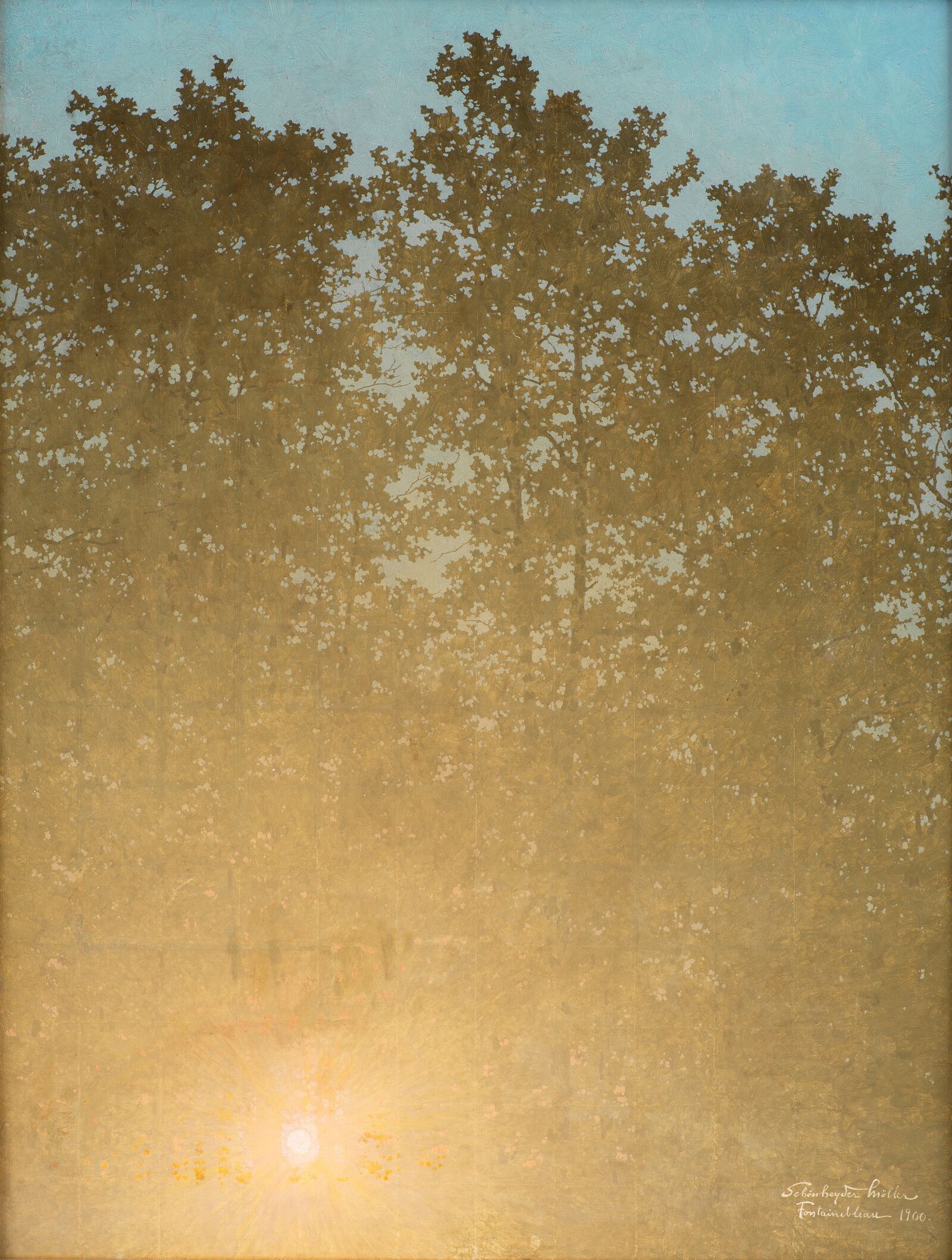

Valdemar Schønheyder Møller: Sunset: Fontainebleau, 1900, SMK, National Gallery of Denmark, Kopenhagen, Image: Jakob Skou-Hansen
Die Sonne ist die natürliche Quelle des Lichts. Aber ihre gleißende Helligkeit stellt die Malerei vor eine Herausforderung. In der Landschaftsdarstellung gewinnt die Sonne erst ab dem Beginn des 17. Jahrhunderts eine wesentliche Bedeutung.
Zunehmend versuchten die Maler:innen nun, die leuchtend am Himmel stehende Sonne in ihrer natürlichen Erscheinung zu erfassen. In der Natur beobachteten sie die Strahlkraft und die spektakulären Farbeffekte des Sonnenauf- und -untergangs.
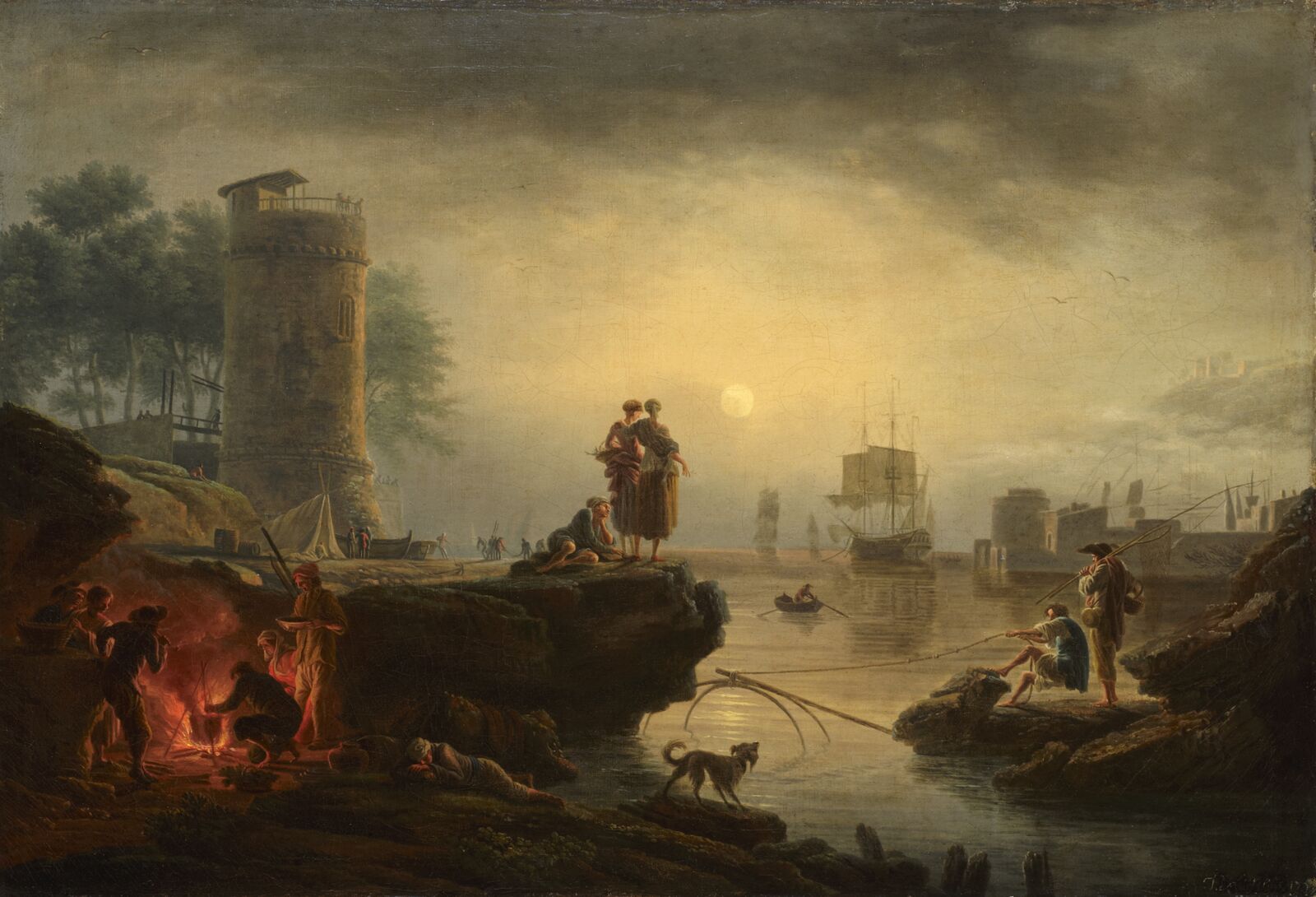
School of Claude Joseph Vernet: Seaport at Sunrise (Morning), 1760-1800, Dulwich Picture Gallery, London
Nur in den Momenten des Übergangs zwischen Tag und Nacht ließ sich die Sonne, in ihrer gemilderten Lichtintensität, naturgetreu festhalten. Die Dämmerung brachte zugleich neue künstlerische Möglichkeiten in die idealisierende oder naturalistische Landschaftsmalerei. Der einheitlich warm getönte Bildraum entfaltet in vielen Werken eine emotionale Qualität. Die Sonne wurde so zu einem Ausdrucksträger, der eine besondere atmosphärische Stimmung schafft.
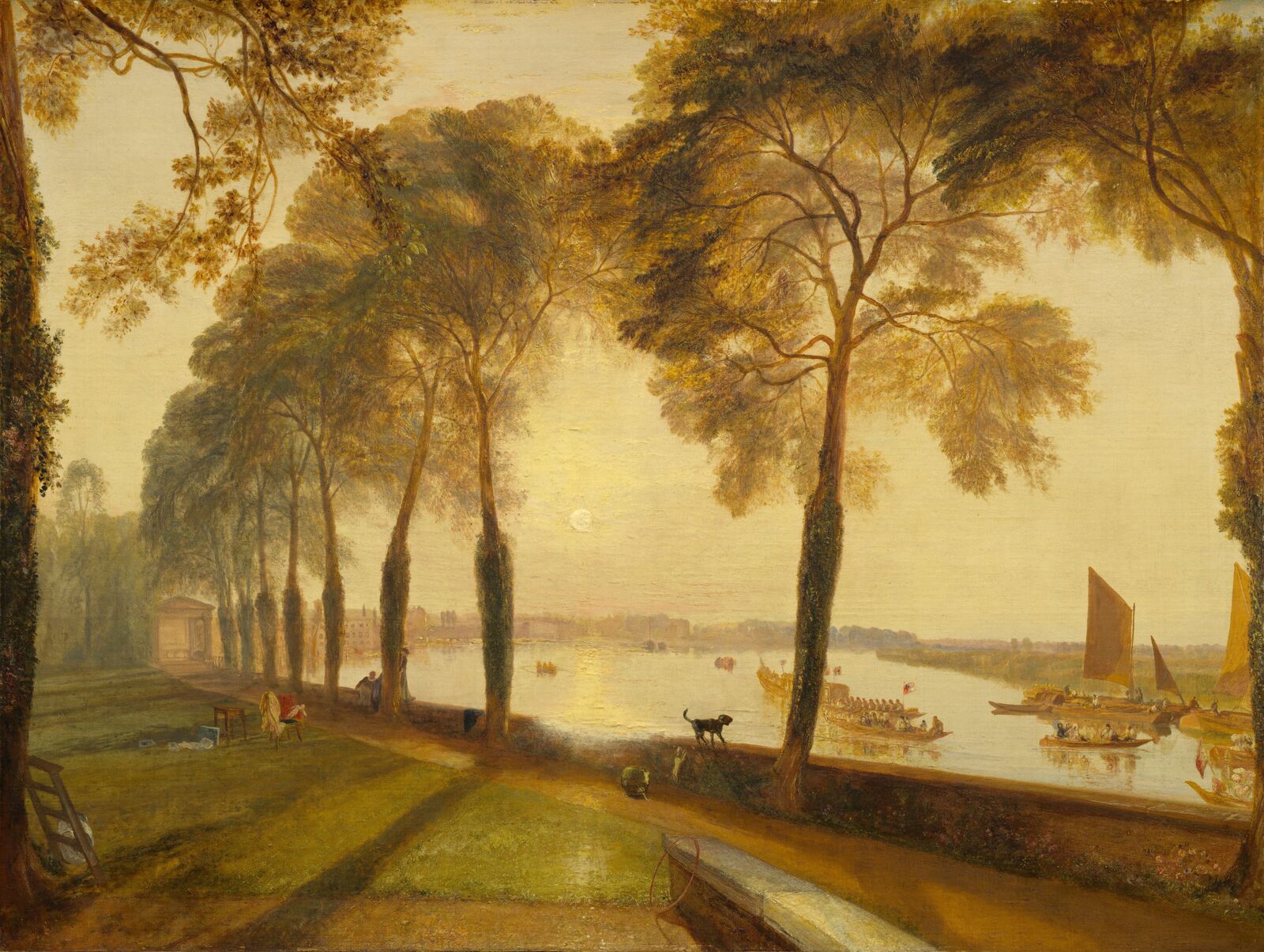
William Turner: Mortlake Terrace, 1827, National Gallery of Art, Washington, Andrew W. Mellon Collection
Als Professor für Perspektive an der Royal Academy erforschte William Turner im 19. Jahrhundert die Darstellung von Lichtbrechungen, Reflektionen sowie Luft- und Farbperspektiven. Seine Gemälde zeigen, wie er seine Erkenntnisse umsetzte. Die lichterfüllte Luft verändert die Wahrnehmung des Raums und die Perspektive. Nicht den Ort selbst, sondern dessen Eindruck habe Turner dargestellt, meinte später der Kritiker John Ruskin. Damit erweist sich William Turner als ein Vorläufer der Impressionisten.
Im 19. Jahrhundert erkundeten Maler bei ihren Sonnendarstellungen auch die eigene Wahrnehmung und hielten sie im Bild fest. Eine rasche, skizzenhafte Pinselführung ermöglichte neue, spontane Dimensionen der Wiedergabe. Im Symbolismus wurde das Gestirn über der Landschaft um 1900 zum energiegeladenen Ausdruck des Geistigen.
Brüder, zur Sonne, zur Freiheit, Brüder, zum Lichte empor.
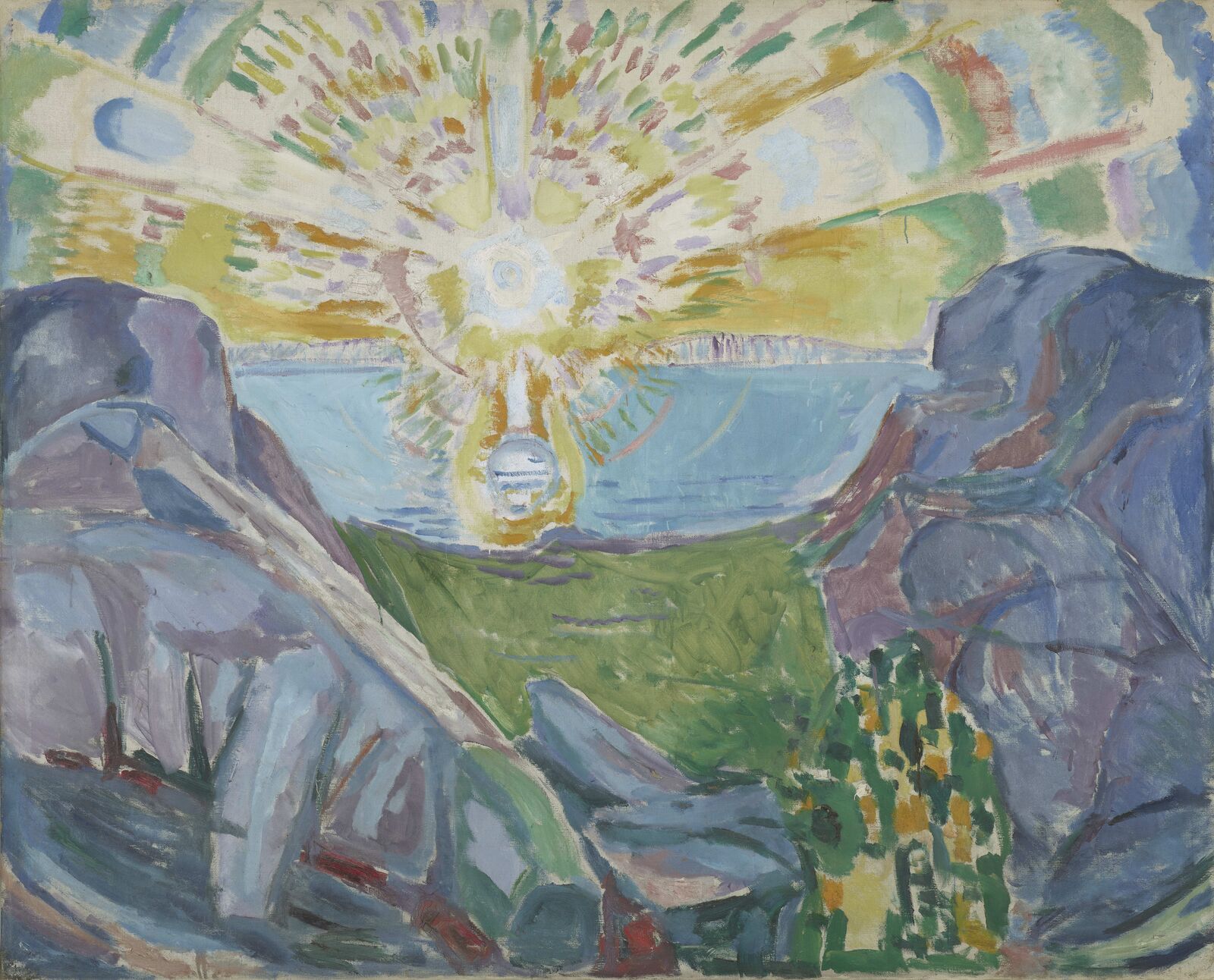
Edvard Munch: The Sun, 1910-1913, Munchmuseet, Oslo, Image: Ove Kvavik
Wer wird heute noch die Sonne anbeten?
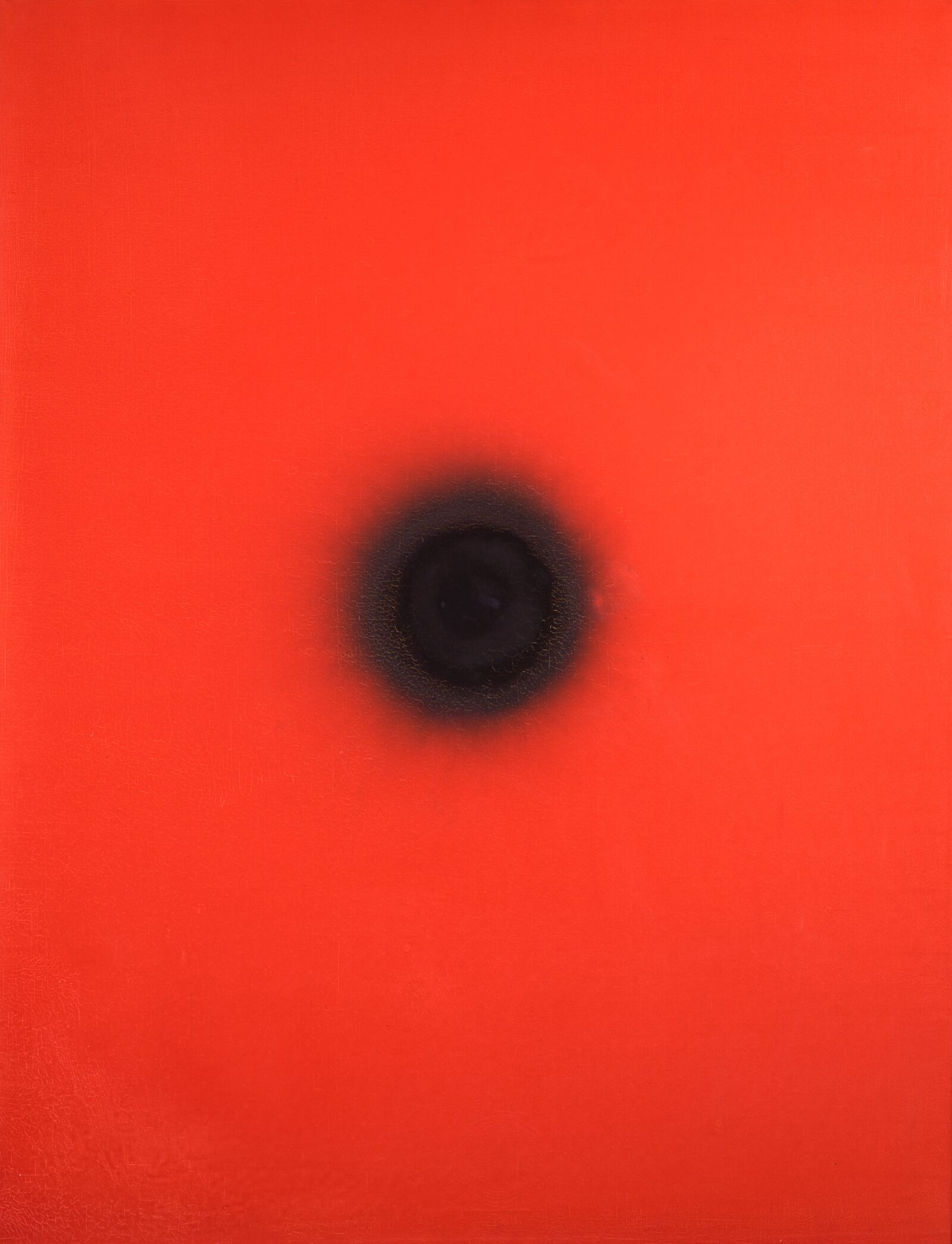

Otto Piene: Black Sun, 1961, Museum Ulm - Stiftung Sammlung Kurt Fried, © VG Bild-Kunst, Bonn 2023, Image: Ingeborg Schmatz, Ulm
In der Malerei nach 1900 wurde der Einsatz der Farbe freier und auch ihre Intensität in Landschaftsgemälden nahm zu. Dies zeigt sich besonders auf Darstellungen der auf- oder untergehenden Sonne. Dieses Motiv eignete sich naturgemäß sehr für übersteigerte Farbeffekte, die das Bild oft komplett beherrschten. Bei der nach 1910 beginnenden Auflösung der Bildgegenstände hin zu abstrakten Darstellungsformen spielten visuelle Erfahrungen des Sonnenlichts und wissenschaftliche Erkenntnisse der Farbphysiologie eine Rolle.
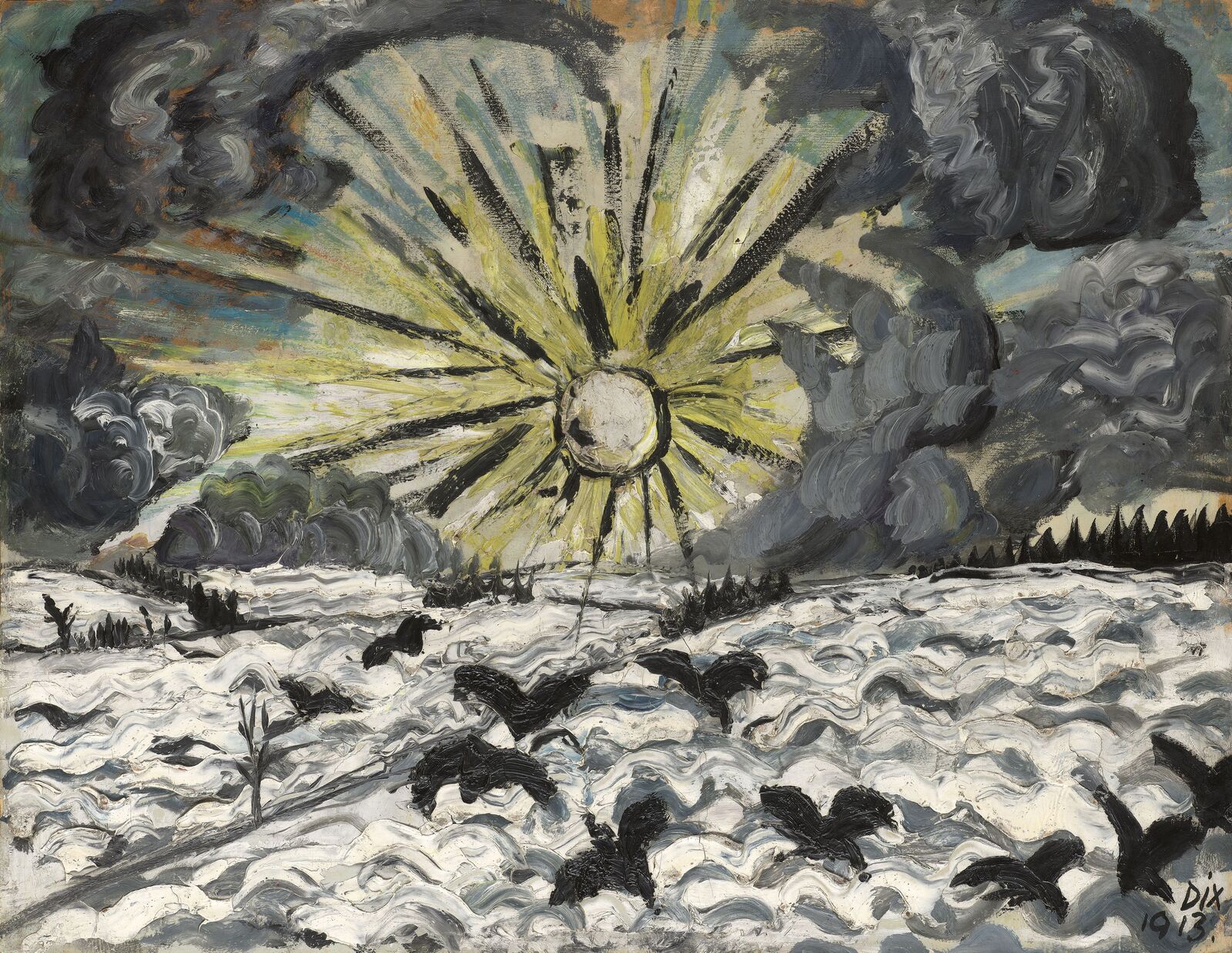
Otto Dix: Sunrise, 1913, Städtische Galerie Dresden—Kunstsammlung, Museen der Stadt Dresden, acquired in 2012 with the support of the Ernst von Siemens Kunststiftung, the Kulturstiftung der Länder, the Hermann Reemtsma Stiftung, and the Rudolf-August Oetker-Stiftung, © VG Bild-Kunst, Bonn 2023, Image: Herbert Boswank
Gefesseltes Licht, wie rufen wir dich? Verborgene Wärme, Seligkeit unseres Daseins, wie rufen wir dich?
Die Expressionisten zeigen die Wirkung der Sonne auf die Natur – und auf sich selbst. Ihre farblich glühenden Landschaftsmotive werden zur Projektionsfläche für die individuelle psychische Verfassung. Im Fokus steht oft die Sonne, als Dialogpartner und Identifikationsobjekt der aufgewühlten Seele. Um die emotionale Wirkung zu steigern, lösten sich die Maler bei der Farbwahl von der natürlichen Erscheinung. Sie folgten eher ihrer künstlerischen Phantasie als einem genauen Naturstudium. Mit freier Pinselführung brachten sie leuchtende Reinfarben auf die Leinwand.
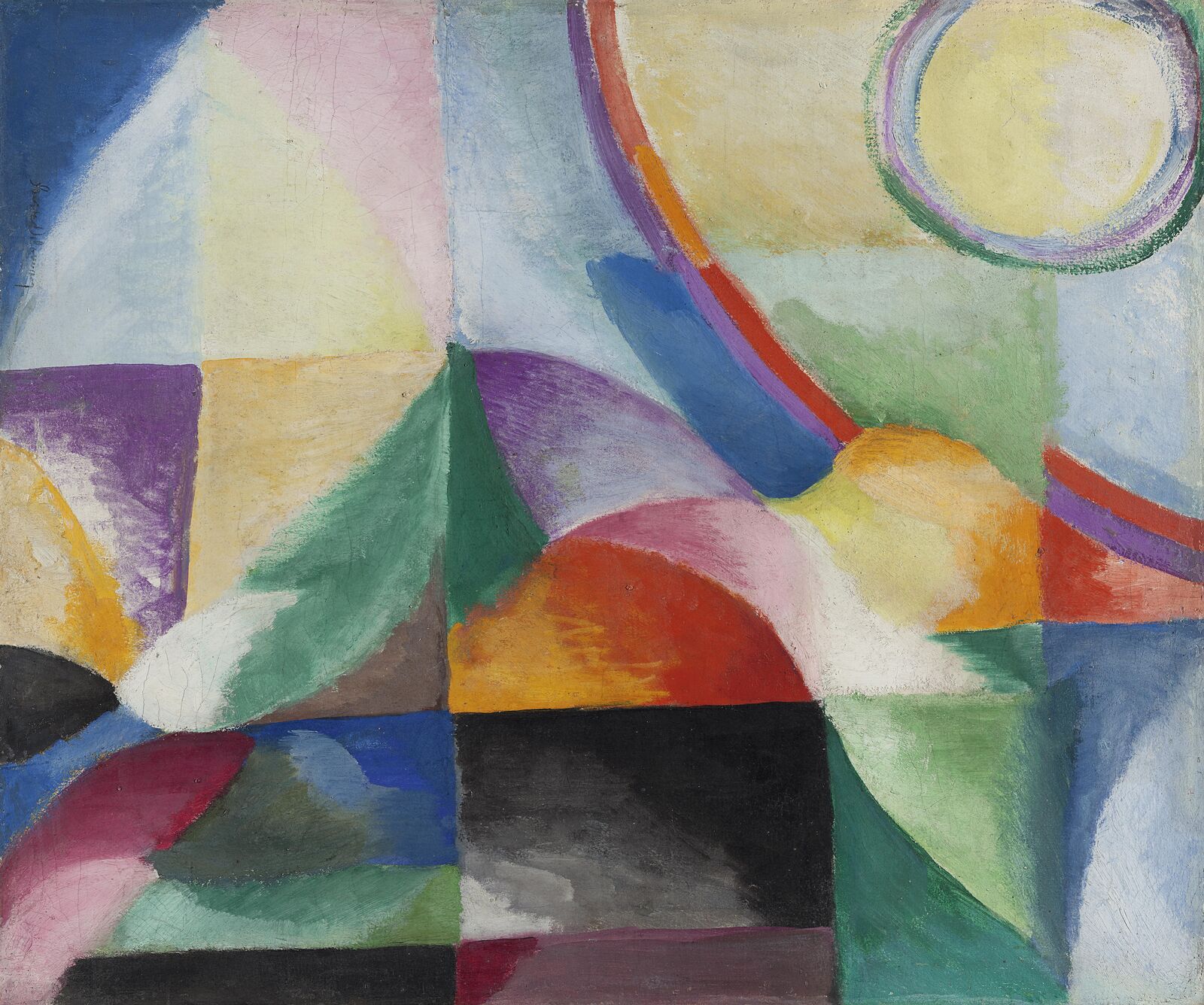
Sonia Delaunay: Simultaneous Contrasts, 1913, Museo Nacional Thyssen-Bornemisza, Madrid, © Pracusa Artisticas S.A.
Abstrakte Gemälde seit den 1930er Jahren zeigen die Sonne häufig in Form eines einfachen Kreises. Gerade weil dieses archetypische Zeichen keine Abbildungsfunktion hat, eignete es sich als Symbol für das energetisch aufgeladene Zentrum des Kosmos. Die Pop-Art der 1960er Jahre, die jede spirituelle Bedeutung der Kunst ablehnte, verwendete die Sonne als ironisches, aber ästhetisch effektvolles Zitat.
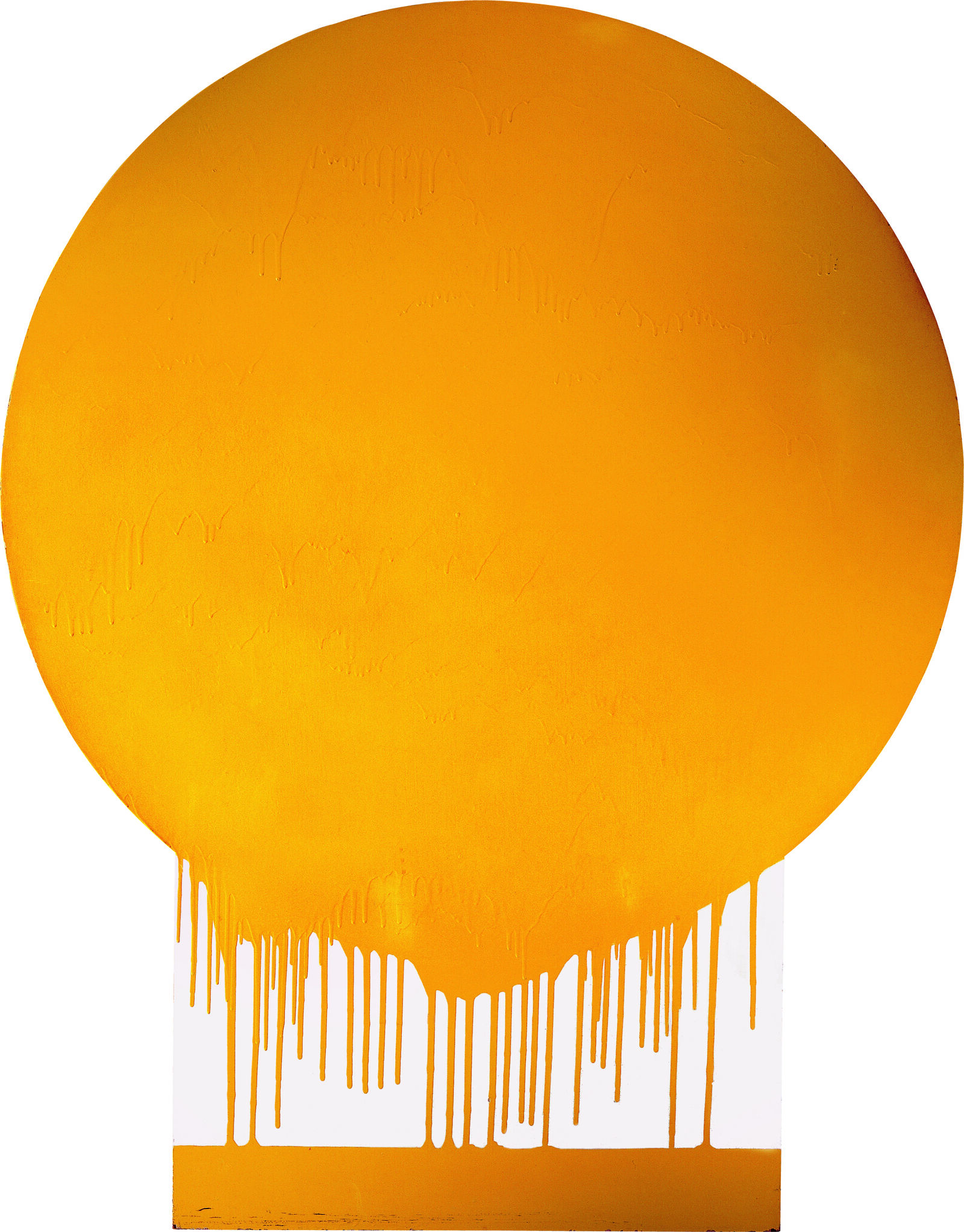
Gérard Fromanger: The Sun Floods My Canvas, from the series The Painting in Question, 1966, Sammlung Fanny Deleuze, © Fonds de dotation Fromanger, Image: Studio Christian Baraja SLB
Ich fühle die Sonnenstrahlen auf meinem Körper.
Ich schmelze aufgelöst im warmen Licht,
ich bin ausgedehnt über die ganze Erde…
